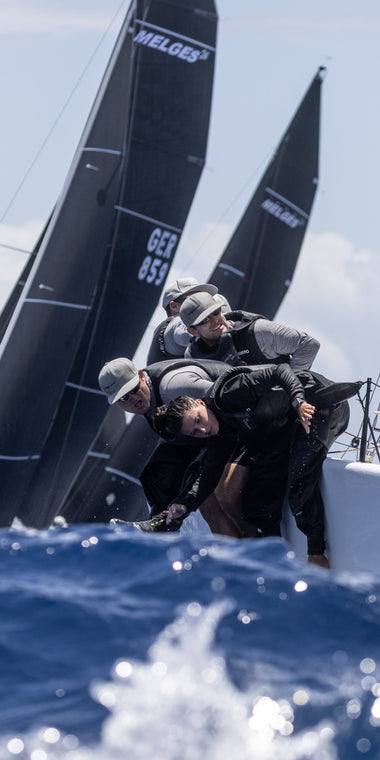NORTH SAILS BLOG
All
Events
Guides
News
People
Podcast
Sustainability
Tech & Innovation
Travel & Adventure
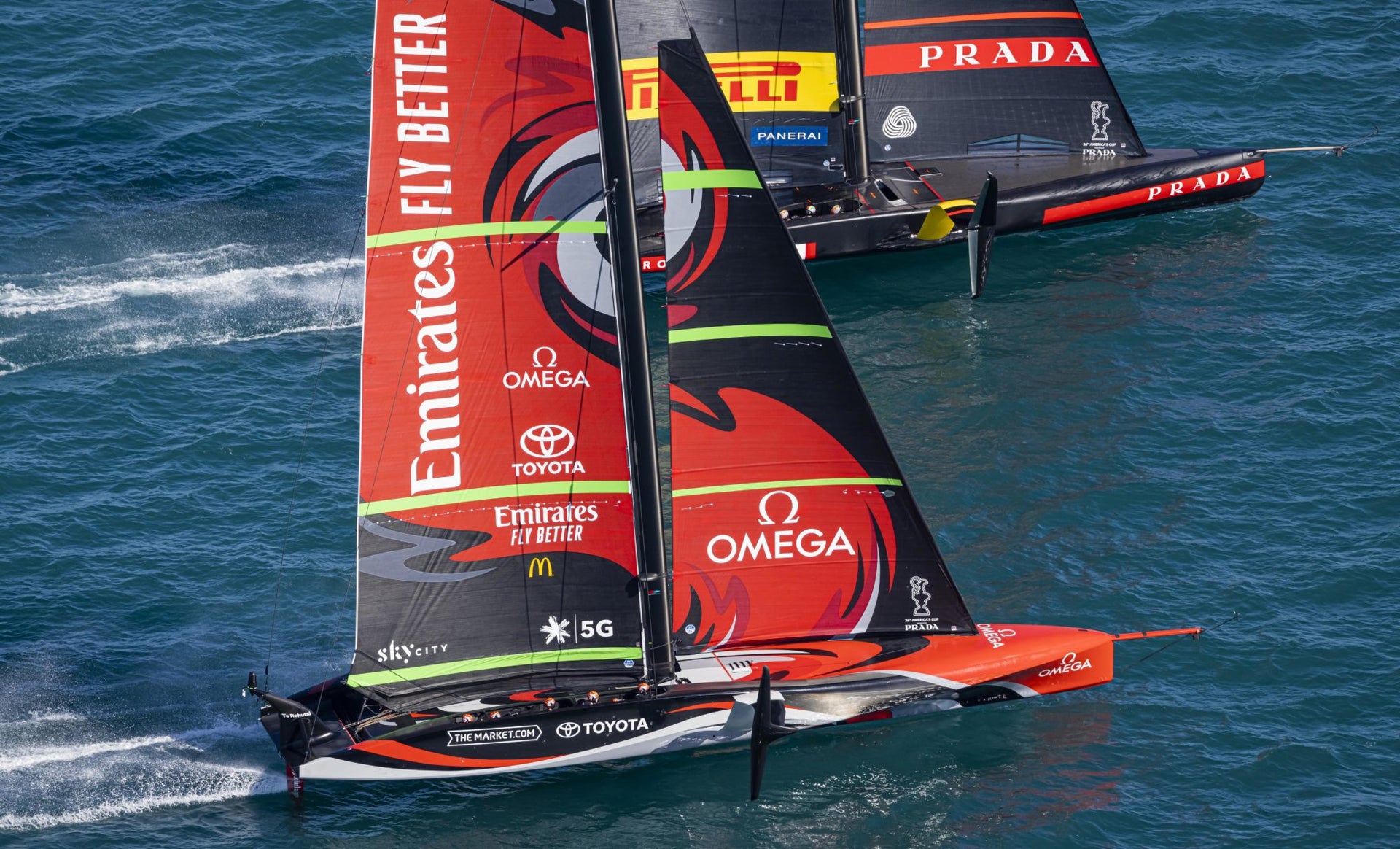
SHIRLEY ROBERTSON'S PODCAST: 36TH AMERICA'S CUP PREVIEW
36TH AMERICA’S CUP PREVIEW WITH SHIRLEY ROBERTSON
Tune in for a two-part podcast with Shirley and special guests as they prepare for the final races
📸 COR 36 | Studio Borlenghi
With the final races of the 36th America’s Cup Match now just moments away, Shirley Robertson previews the action in another two-part podcast from the heart of the action in Auckland New, Zealand.
The two-part podcast kicks off with an interview with the port side helm of the successful Challenger, the AC36 Challenger of Record, Luna Rossa’s Francesco Bruni. Bruni has been at the forefront of the Italian team’s significant improvements in performance over this campaign, and is both realistic and candid as he discusses their Prada Cup success. He attributes much of that success to the calm and level head of co-helm, Jimmy Spithill, and is both respectful and hopeful when quizzed about their Cup opponents, Emirates Team New Zealand.
Part one features a discussion with Francesco Bruni, Robertson talks to Emirates Team New Zealand supercoach Ray Davies. Davies is a mastermind of the new world of Cup racing, and has been a proud member of the Kiwi outfit for almost two decades. The gossip around the harbourside in Auckland of late has been of the team’s sensational speeds out on the water and Davies is quick to dispel any chat that the team are anything but race ready. While the Challengers have all been fighting out against each other, the Defender has been clocking up the training miles out in the Hauraki Gulf, and as competition draws near, Davies is clear on how pleased he is with the team’s progress.
Both Bruni and Davies discuss their thoughts on their respective opponents, their thoughts on how the racing has been to date, and how and where the match may be won and lost. Ahead of the first to seven wins match, it’s an insightful listen to augment enjoyment of the upcoming broadcast.
In part two of the Cup Preview, Robertson looks back on the Prada Cup Challenger Selection Series with fellow broadcast commentator and America’s Cup veteran Kenny Read. The pair discuss the performance of the three Challengers, before being joined by special guest, David ‘Freddie’ Carr. Freddie, a one time Extreme 40 team mate of Robertson’s, is the lynch pin of the INEOS TEAM UK grinding unit.
Freddie talks honestly about the teams turn around of fortune, before moving on to the loss to Luna Rossa Prada Pirelli. Carr discusses how he thinks the Cup Match may pan out, before leaving Robertson and Read to go over their thoughts on the upcoming action.
As a preview to the upcoming first to seven wins regatta, it’s an insightful hour of chat to take in before racing resumes out on the waters of the Hauraki Gulf.
READ MORE
READ MORE
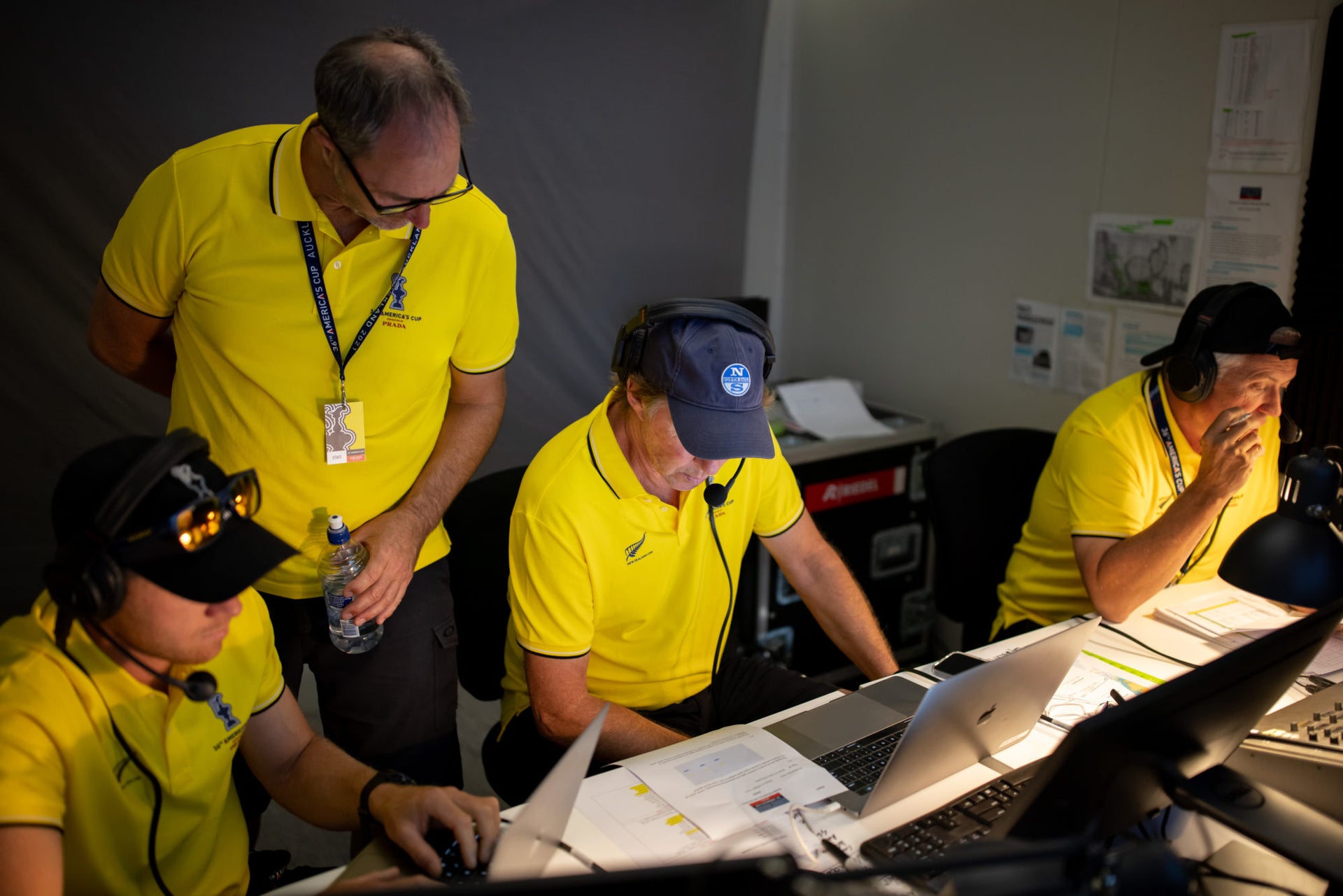
BEHIND THE SCENES: EPISODE 6
GO BEHIND THE SCENES WITH TV PRODUCER LEON SEFTON
Episode 6: North Sails x the 36th America’s Cup
Leon Sefton is no stranger to professional sailing and the America’s Cup, however he is lesser known than the sailors or design teams. As one of the top producers in sailing TV, Sefton is the guy calling the shots behind the cameras to bring the 36th America’s Cup to your screens. “Each day when we’re on-air, what I’m looking for we’re making sense of what’s playing out in front of us.” Managing and directing 12 audio feeds, 10 onboard cameras, 2 chase boats, and 2 helicopters—all on the water– Sefton has his hands full. “It is immensely challenging,” he said. “Compared to F1, where you surround a track with cameras and run cables back to your live truck and nothing moves and everything should work, we have none of this going for us in sailing.”
READ MORE
READ MORE
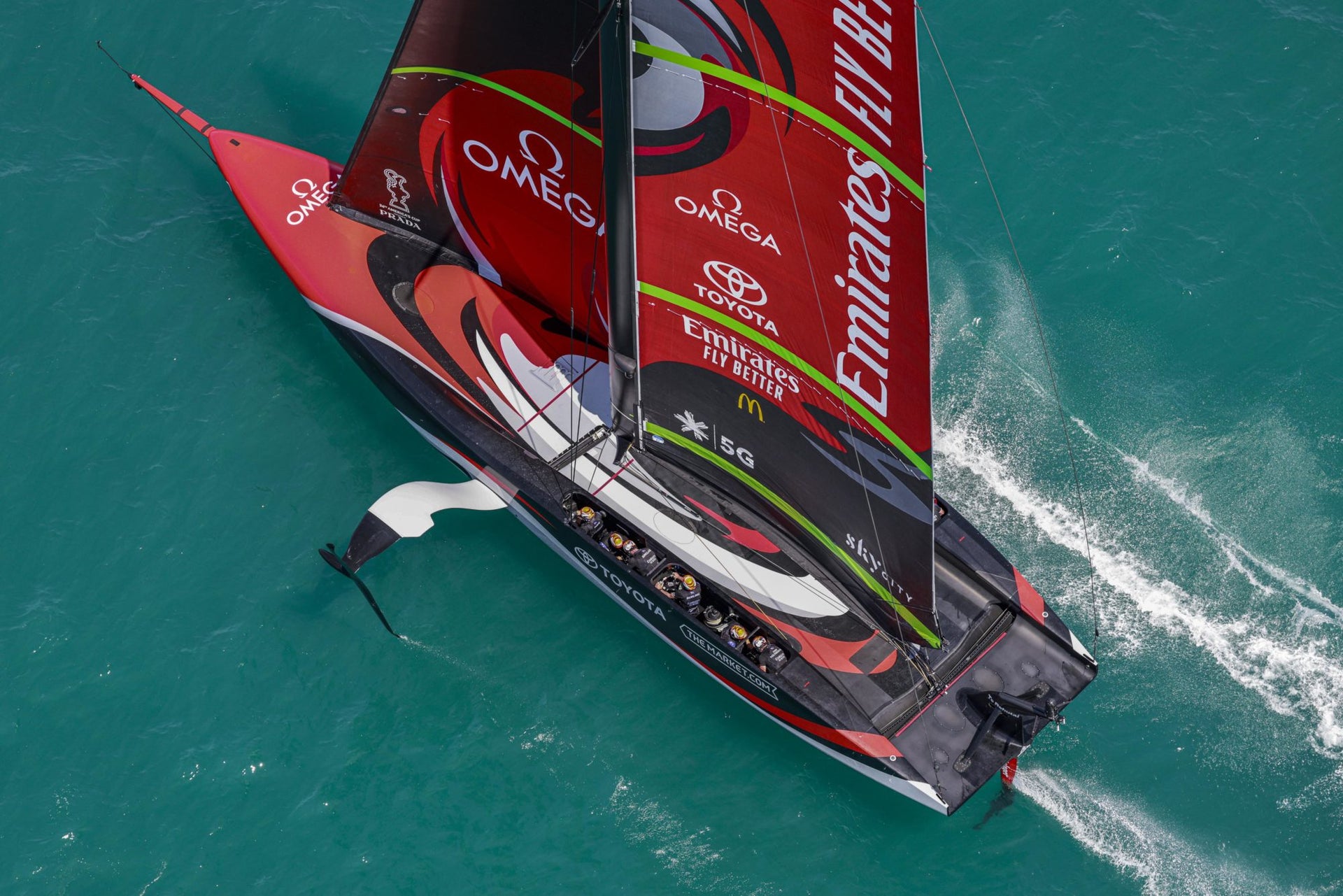
BEHIND THE SCENES: EPISODE 5
GO BEHIND THE SCENES WITH EMIRATES TEAM NEW ZEALAND’S GLENN ASHBY
Episode 5: North Sails x the 36th America’s Cup
As one of Emirates Team New Zealand’s sailors and sail trimmers, Glenn Ashby is a core member of the team. This is Ashby’s fourth America’s Cup, and he’s amazed with how the sport has evolved over the years from massive multihulls to flying monohulls. It’s challenging but incredibly rewarding. “What we’re doing now and how we’re pushing things is extremely challenging. We’re really pushing boundaries that have never been done before,” he said. One of the secrets to winning the America’s Cup? Teamwork.
READ MORE
READ MORE
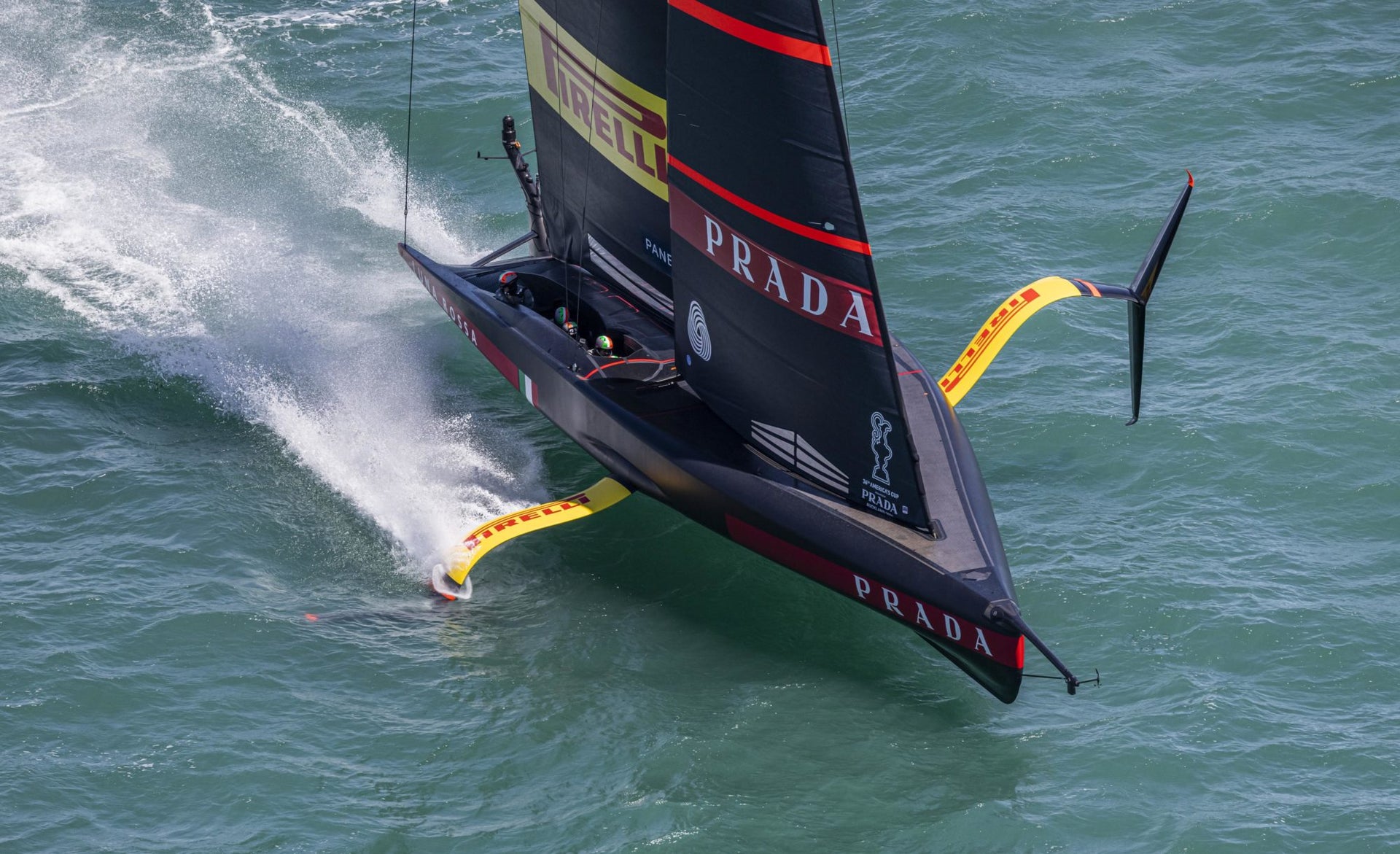
BEHIND THE SCENES: EPISODE 3
GO BEHIND THE SCENES WITH LUNA ROSSA PRADA PIRELLI SAIL DESIGNERS
Episode 3: North Sails x the 36th America’s Cup
“For a sail designer, being involved with the America’s Cup is a dream come true,” said Marco Capitani, one of Luna Rossa Prada Pirelli’s sail designers. With Luna Rossa Prada Pirelli, the sail design is looked after by Capitani and his fellow North designer Juan Garay. Each designer brings their unique perspective and expertise to the project, Garay devising the concepts and Capitani keeping a hawk-eye watch over the performance details. This really allowed both designers to share a lot of innovative ideas in the America’s Cup—an event they both agree is intense, demanding, and a dream come true.
READ MORE
READ MORE
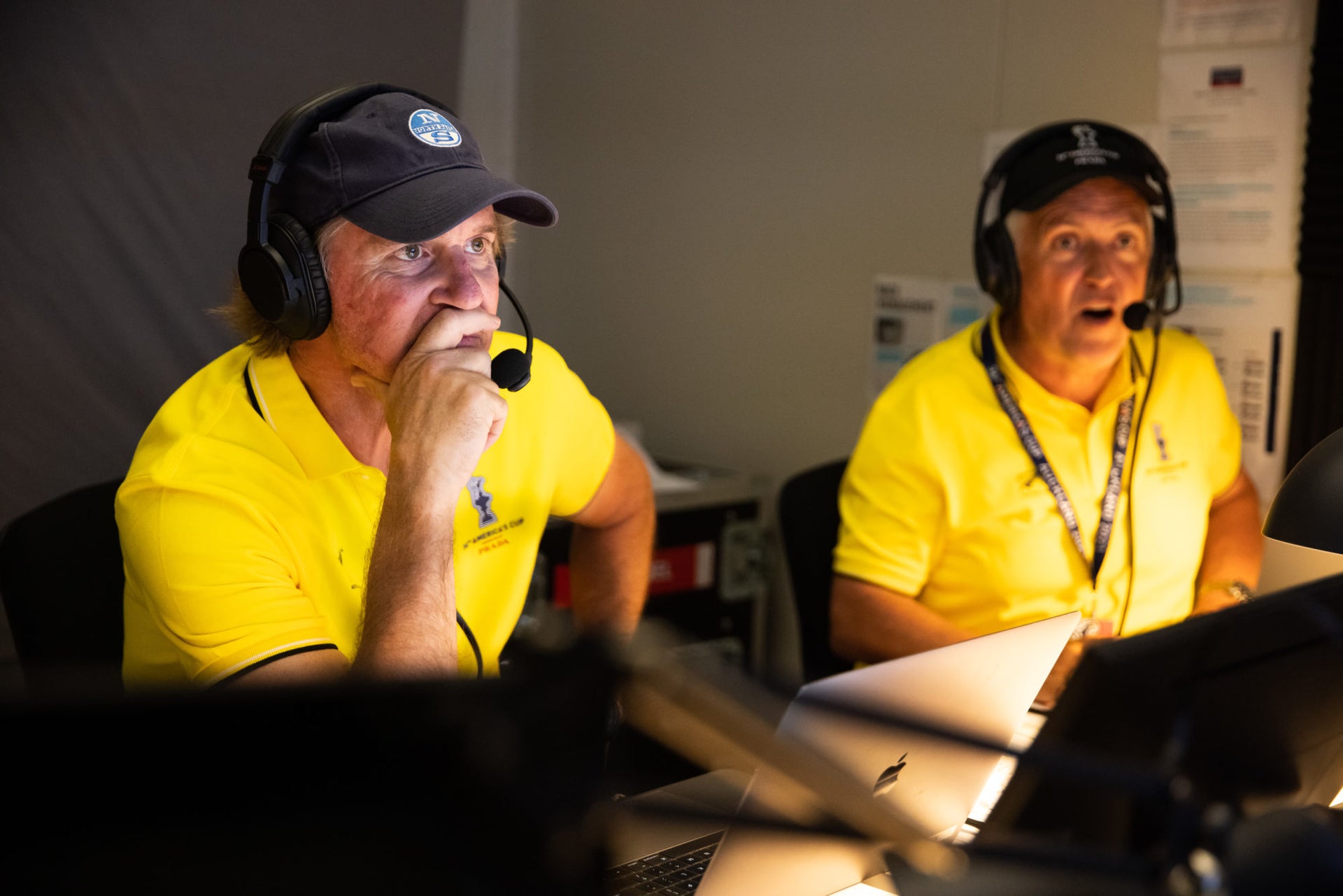
BEHIND THE SCENES: EPISODE 1
GO BEHIND THE SCENES WITH TV COMMENTATOR KEN READ
Episode 1: North Sails x the 36th America’s Cup
Ken Read, President of North Sails and Executive VP of North Sails Technology Group, is not sailing in the 36th America’s Cup, but he’s doing his best to make sure you enjoy (and understand) it. As one of the four TV commentators, Read is bringing to life all the action as it unfolds on the Hauraki Gulf in Auckland, New Zealand. He is also wearing his North Sails hat, and he is fully aware that the partnership between North Sails and the America’s Cup is putting the industry leader on the fast-track for sailmaking evolution and innovation. “We couldn’t do it without the America’s Cup,” Read said. “For North Sails, the America’s Cup is a fast-track design evolution. We’re constantly climbing the ladder for product development for our company. I know how much these teams are counting on us. We need to deliver better than what they expect because that’s what we do.
READ MORE
READ MORE
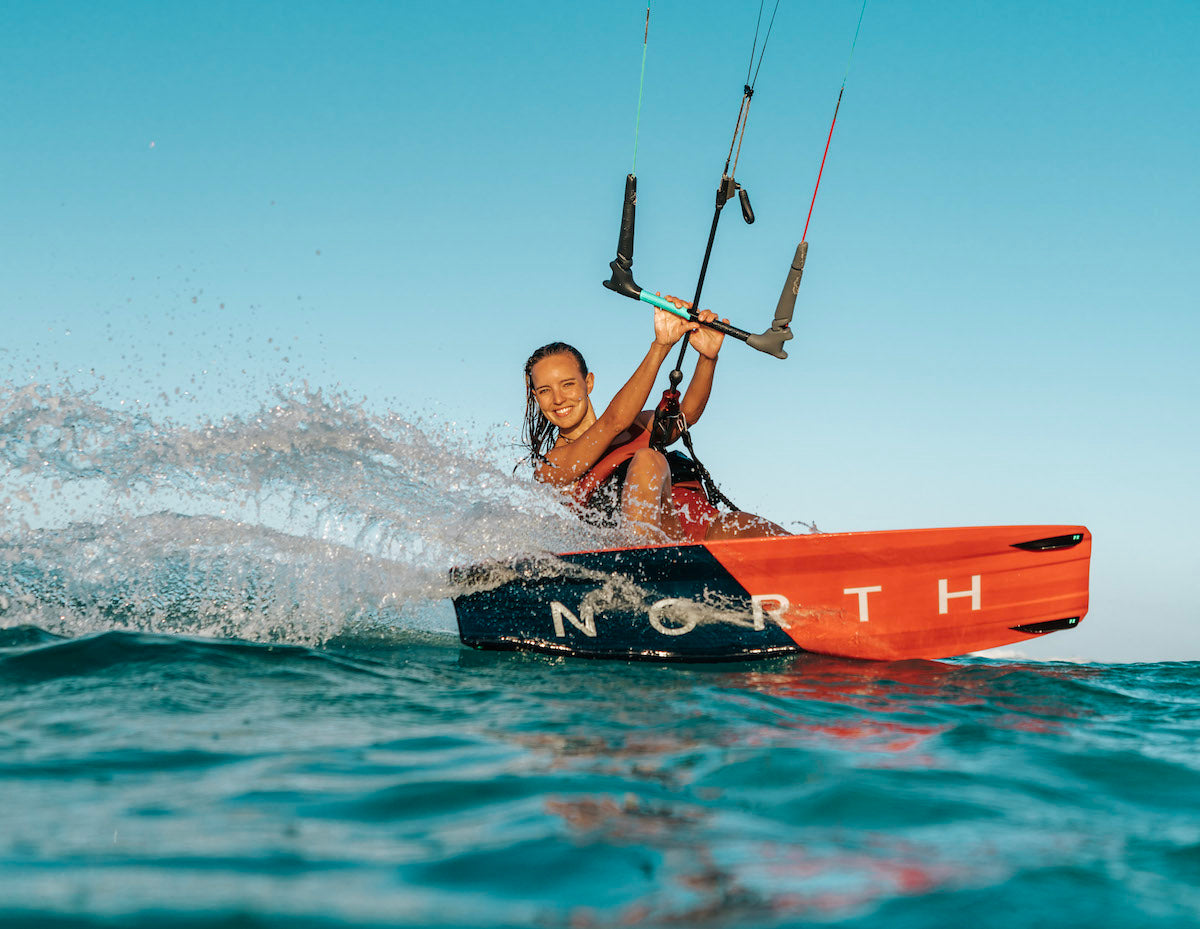
HOW DO YOU CHOOSE TO CHALLENGE?
Today we celebrate International Women’s Day with the global theme “Choose to Challenge”. A challenged world is an alert world. Individually, we’re all responsible for our own thoughts and actions – all day, every day. We can all choose to challenge and call out gender bias and inequality. We can all choose to seek out and celebrate women’s achievements. Collectively, we can all help create an inclusive world. From challenge comes change, so let’s all choose to challenge.
Below we’ve highlighted some of many amazing women in our sport who have shown their leadership, dedication, professionalism, drive and compassion for being on the water. Today we celebrate water women all over the world who are leading the way, teaching others and sharing their stories and experiences. #choosetochallenge #IWD2021
📸 David Troeger @jetlag
“Every day I am out on the water living the life of my dreams, I choose to challenge together with girls and women from all over the world, to unite through our passion for kiteboarding. We become one with what we do…until the point where the challenge is no longer a point of attention, as the natural expression of our love and passion proves enough.” – Annabel van Westerop
Annabel van Westerop grew up with salt in her hair and sand between her toes in Aruba. This spirit is shown in her riding, which is powerful, yet collected. Despite taking her passion for kiting to the next level by joining the International Sales Team at North Actionsports in the Netherlands, Annabel still makes time to follow the dream.
“I choose to challenge because together every individual can make a collective change for the greater good. It starts with me. – Libby Greenhalgh
Libby Greenhalgh is a world-renowned meteorologist, She has sailed all her life and spent four years on the Olympic circuit. In 2007, she was hired by the British Olympic Sailing team as team meteorologist and supported the team for the 2008 and 2012 Olympic Games. She served as navigator for Team SCA in the 2014-15 Volvo Ocean Race, helping them post a historic leg win and finish 3rd in the In-Port Series.
“Happiness for me is living my dreams and achieving them, and learning new things about myself through getting out of my comfort zone.” – Katrin Kerr
Katrin Kerr is a bluewater cruiser, liveaboard, and chef. Katrin, her husband and son set sail from Spain last year and have been cruising all over the world since. Sharing their passion of sailing and the ocean with their son Kilian, Katrin passes down the teachings from her grandparents who were fellow cruisers.
📸 Billy Black
“The sport of Sailing is continuously evolving, advancing & transforming… which in turn requires those who compete to be forever learning and adapting. I challenge myself every day to expand my skill sets, and challenge the sailing world to embrace those with talent, regardless of gender, color or orientation.”
– Suzy Leech
Suzy has spent her life racing sailboats and was known as “Suzy Bowchick” in the 1995 America’s Cup. She has also sailed as helm, tactician, and navigator on everything from J/70s to Superyachts. She has won over 30 International regattas in 15 separate classes, including three world championships. An Aerospace Engineer, Suzy started her career developing data systems for NASA’s International Space Station. She currently develops database-driven websites, and has conducted remote expeditions for National Geographic, UNESCO and ESPN. She has also worked both in front of and behind a TV camera – commentating, producing, and filming onboard for ESPN.
📸 Jean-Louis Carli/Alea
“Being the first woman is good, but it was never my first objective. We must dare to take the plunge and look at examples of women who have been able to do so to give ourselves courage.” – Clarisse Crémer
Clarisse Crémer is an offshore sailor having competed extensively in the Figaro class before progressing to the IMOCA 50. Her 12th place in the 2020–2021 edition of the Vendée Globe, with a time of 87 days, 2 hours and 24 minutes, is the world record for a single-handed, non-stop, monohull circumnavigation by a woman.
📸 Oakcliff Sailing
“I prefer to be challenged by conditions and competition rather than by people standing in my way. But I will continue to fight to make a career in sailing a bit easier for the next woman.” – Dawn Riley
Dawn Riley is one of the best-known sailors in the world. She was the first woman ever to manage an America’s Cup syndicate, and the first American (man or woman) to sail in three America’s Cups and two Whitbread Round the World races. Since 2010, she’s used her own experience to help others become sailing professionals, as the Executive Director of Oakcliff Sailing.
📸 Martin Keruzore
“I have always competed against men, and I have always challenged myself to become the best I can be so I can compete on a level playing field. Success comes through perseverance, a lot of hard work, chasing opportunities and a little bit of luck. Nothing is impossible.” – Carolijn Brouwer
Carolijn has sailed in three Olympics and was the only female in the Open Tornado Fleet at the 2008 Games. She’s won the World Sailor of the Year award twice, and was the first female to win Round Texel, the biggest catamaran race in the world. As part of the Dongfeng race team, she became one of the first two women to ever win the Volvo Ocean Race (2017-18).
📸 Juerg Kaufmann
“Gentlemen who run our sport, women who choose it – from today, open your eyes. Ask ‘why” there’s such a thick male veneer that surrounds what should be a gender equal sporting playground. Think about YOUR own thoughts and actions! From challenge will come change…choose to challenge.” – Shirley Robertson
Shirley Robertson OBE made history by becoming the first British woman to win Olympic Gold Medals at two consecutive Olympic Games. She’s in Scotland’s prestigious Sports Hall of Fame, holds a role as Deputy Lieutenant for the Isle of Wight and is one of the most recognisable faces from the sport of sailing. With a reputation for a strong work ethic and obsessive attention to detail, away from the Olympic arena Shirley continued her sailing career, blazing a trail for women in the sport as the first ever female skipper in the ground breaking Extreme 40 Sailing Series. From luxury superyachts to grand prix race boats, out on the water Shirley’s CV is extensive.
“If it were meant to be easy, then everyone would be doing it.” – Stacey Jackson
Stacey has raced 11 Sydney Hobarts and won line honours onboard Wild Oats. She’s also a regular at TP52 regattas, once sailed a Mumm 30 World Championship, and has completed a Rolex Fastnet Race. She was part of Team SCA for the 2014-2015 Volvo Ocean Race.
“Challenges make me feel alive, and drive me everyday to be the best version of myself. Chasing dreams is what I’ve been doing for 15 years now, and I’m looking forward to what’s up next!” – Francesca Clapcich
Francesca began sailing in Trieste, Italy in 1999. After graduating from the Nautical Institute of Trieste and San Raffaele University with a Sport Science degree, she joined the Italian Air Force and served as a First Senior Airman. She sailed in two Olympics; 2012 in the Laser Radial, and 2016 as crew in the 49er FX. She won both the World and European Championships in 49er FX in 2015, and placed in the top five at the 2013, 2014 and 2016 World Championships and the 2013 and 2015 European Championships. Francesca was part of the Turn the Tide on Plastic team for the 2017-18 Volvo Ocean Race and was skipper of the 90’ Maxi Golfo di Trieste Wind of Change.
📸 Georgia Schofield
“I choose to challenge to inspire young female sailors to forge a career in the marine industry.” – Bianca Cook
New Zealander Bianca Cook grew up in a boatbuilding family. After starting out in dinghies, she quickly progressed to classic yachts, match racing, and superyachts. She’s accumulated over 100,000 offshore miles, including the 2017-18 Volvo Ocean Race onboard Turn the Tide on Plastic. She also sailed on Wild Oats X as part of the Ocean Respect Racing Team, the first professional all-female crew to compete in the Rolex Sydney to Hobart.
📸 Luis Lemes /Lanzarote / Winter Series
“Like a rising tide lifts all boats, we feel that a respect for the talents of each individual lifts all women to accomplish greatness.”
– Nikki Barnes + Lara Dallman-Weiss
Nikki Barnes and Lara Dallman-Weiss teamed up to win US selection for the 2021 Olympics in the women’s 470. Nikki grew up on St. Thomas, USVI and is a commissioned officer in the US Coast Guard. Lara grew up in Minnesota and has worked as a pro sailor and occasional drone pilot. Their final qualifying regatta (the 470 Worlds) wraps up on 13 March.
READ MORE
READ MORE
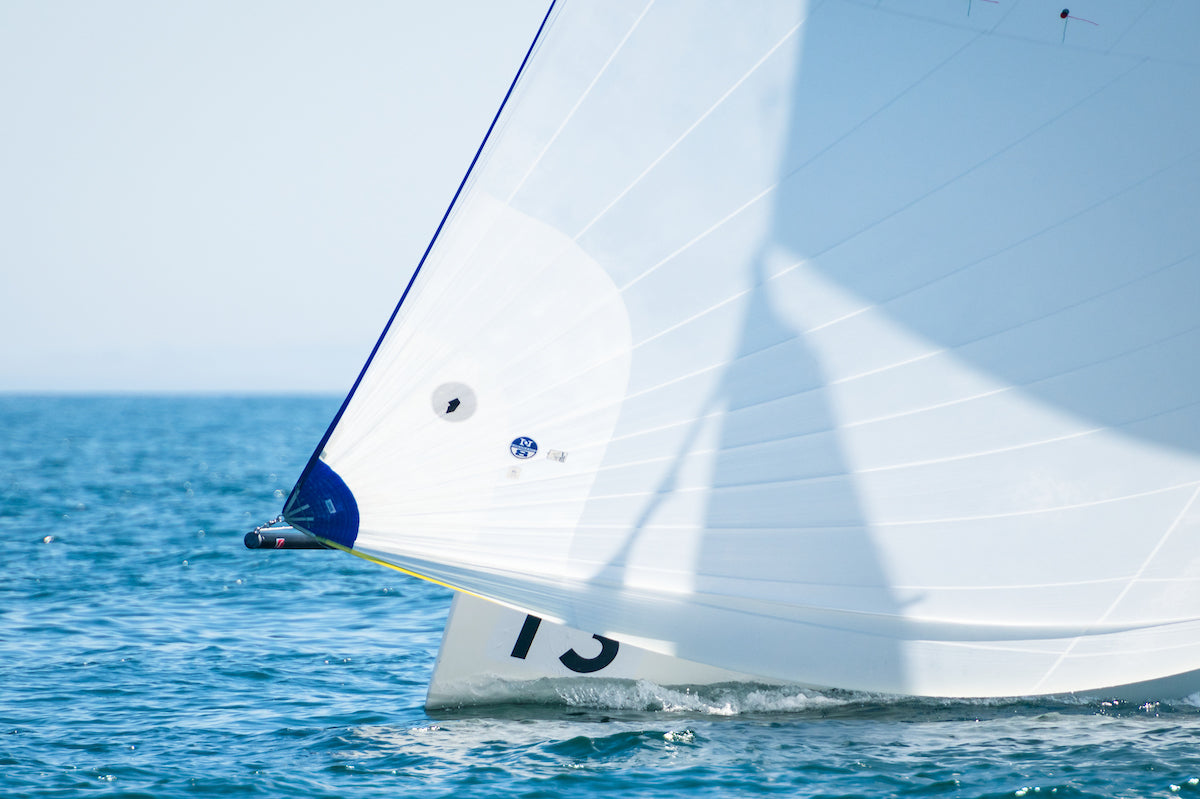
SPECIALTY REACHING SAIL GUIDE
SPECIALTY REACHING SAIL GUIDE
Options For All Angles
Wind Seeker
This is a very light sail for drifting conditions. Used when a full size, heavier weight sail will not pressurize or remain stable. Wind Seekers are commonly made in forgiving cloth to handle slatting conditions and designed to sheet at or near the shroud base, to make tacking and sheeting in zephyrs easier.
Jib Top
A Jib Top is a high-clewed overlapping headsail for beam reaching in medium to strong winds. Conventional headsails are designed with a lower clew, which is optimized for close-hauled sailing. As you ease the sheet of a conventional headsail and bear off, you lose control over the leech. This sail is shaped to tolerate the extra twist that results from easing the sheet while not being able to hold the lead down and out, due to deck limitations. The Jib Top design is designed to sail wider apparent wind angles while still allowing the trimmer control over the twist and leech profile of the sail. The sail is usually sheeted using the spinnaker sheet, which is “tweaked” to the deck using an adjustable purchase system. The Jib Top is a faster sail on a reach than a conventional low-clewed Jib or Genoa.
Blast Reacher
A Blast Reacher is a non-overlapping sail, similar in concept to the Jib Top. Used in heavier wind than the Jib Top, or in place of a Jib Top on boats that do not carry overlapping headsails.
Genoa Staysail
The Genoa Staysail is a small jib (often furling), which is set inside the fore-triangle and used for reaching in more than eight knots of wind. The primary purpose of the Genoa Staysail is to add power and speed to the boat when reaching by helping to counteract weather helm. It provides more balance on the helm when it’s set inside a Genoa, Jib, Code Zero, Jib Top or even the A5. The helmsman uses less rudder angle, resulting in a higher average boat speed than with a staysail. The Genoa Staysail is most commonly used with a Jib Top or Jib sheeted on an outboard lead from 40 degrees apparent wind angle. Once the jib car goes outboard, or is re-led to the rail, the Genoa Staysail can generally slot into the gap that results with good effect. The Genoa Staysail can also be used in combination with a Code Zero or fractional A5 when faster boat speeds will move the apparent wind angle forward and load the helm. The Genoa Staysail is a very versatile reaching sail and is definitely worth taking into consideration for any offshore sailing. Some boats will use a dual purpose Storm Jib / Genoa Staysail.
Spinnaker Staysail
A Spinnaker Staysail is a small high-clewed furling sail used downwind with a spinnaker. It is generally used between 10 and 25 knots, hoisted on the jib halyard and tacked just aft of the headstay on the bow. It can also be tacked slightly to weather. These sails are commonly used on boats with either bowsprit configurations or conventional spinnaker poles. The Spinnaker Staysail can also be used as a Wind Seeker when the tack is brought forward to the bow.
Mizzen Staysail
Typically a close reaching Jib hoisted on the mizzen mast and tacked near the mainmast. This sail may also be a downwind sail from the G Series Gennakers or S Series Spinnakers products.
READ MORE
READ MORE

NORTH SAILS FASTER THAN EVER IN MIAMI
SIX BULLETS, PURE SPEED AT THE STAR MIDWINTERS
North Designs Show Superb Performance as Teams Warm-Up for the Bacardi Cup
While most of North America was shivering and digging out from extreme winter storms, a great group of (smart) Star sailors traveled to Miami for the annual combination of the Walker Cup and Star Midwinter Championship. Teams came from as far away as California, Annapolis, and Argentina to test their skills on Biscayne Bay. The first two days were raced in tribute to the late Harry Walker who was a great friend of the Star Class in Miami for many years.
Competitors were greeted on the first day with a beautiful southerly breeze, 10-15 knots, and warm sunny skies. The fleet was very tight all around the track with Augie Diaz/Arnie Baltins taking the win in the first race and Eric Doyle/Payson Infelise taking bullets in race two and three. The Coral Reef Yacht Club Race committee headed up by PRO Carl Shellback did a great job running three windward-leeward courses on Thursday, and two on Friday. Eric/Payson had two great races on Friday to take the Walker Cup and it was a tight 2nd place for Augie/Arnie with Peter Vessella and Phil Trinter finishing 3rd overall.
A front passed through Friday night and Saturday came with a lot less humidity and a northerly breeze, still quite strong. The breeze was quite shifty and water was flat until the tide turned and most of the Cuban navy turned out to chop up the waves. Big bands of pressure came down the bay so it was important to keep your head out of the boat with the predominantly-right shifting breeze. The first race was a course four, while the final race was a course five with an upwind finish to finish sailors closer to home. The last run ended up quite exciting with puffs over 20-knots at times and the incoming current stacking up the waves. There were some broken poles and bent masts, but all in all, it was a great day. Sunday dawned with 20+ knots and increasing, the regatta was over for the tired, but grateful teams. Eric and Payson had an unstoppable streak of six bullets to win the Midwinter Championship.
“All the North teams used the M-25 main, our all-purpose option. We raced with the J-7 jib while all the other teams used the J-115 full-radial jib. I think this really showed the nice overlap between the two sails and the overall speed of the M-25 main. The North clients were all going fast and are ready for the famous Bacardi Cup next month,” said Eric Doyle.
Star Walker Cup
1. Eric Doyle/ Payson Infelise
2. Augie Diaz/Arnie Baltins
3. Peter Vessella/Phil Trinter
Star Midwinter Championship
1. Eric Doyle/ Payson Infelise
2. Augie Diaz/Arnie Baltins
4. John Macausland/Guy Avellon
5. Ante Razmilovic/Phil Carlsson
Speed-ready for the Bacardi Cup? We have sails in stock for you. Contact us today and shop for the fastest Star sails in existence.
SHOP STAR SAILS
Video/photo courtesy Kathleen Tocke
READ MORE
READ MORE
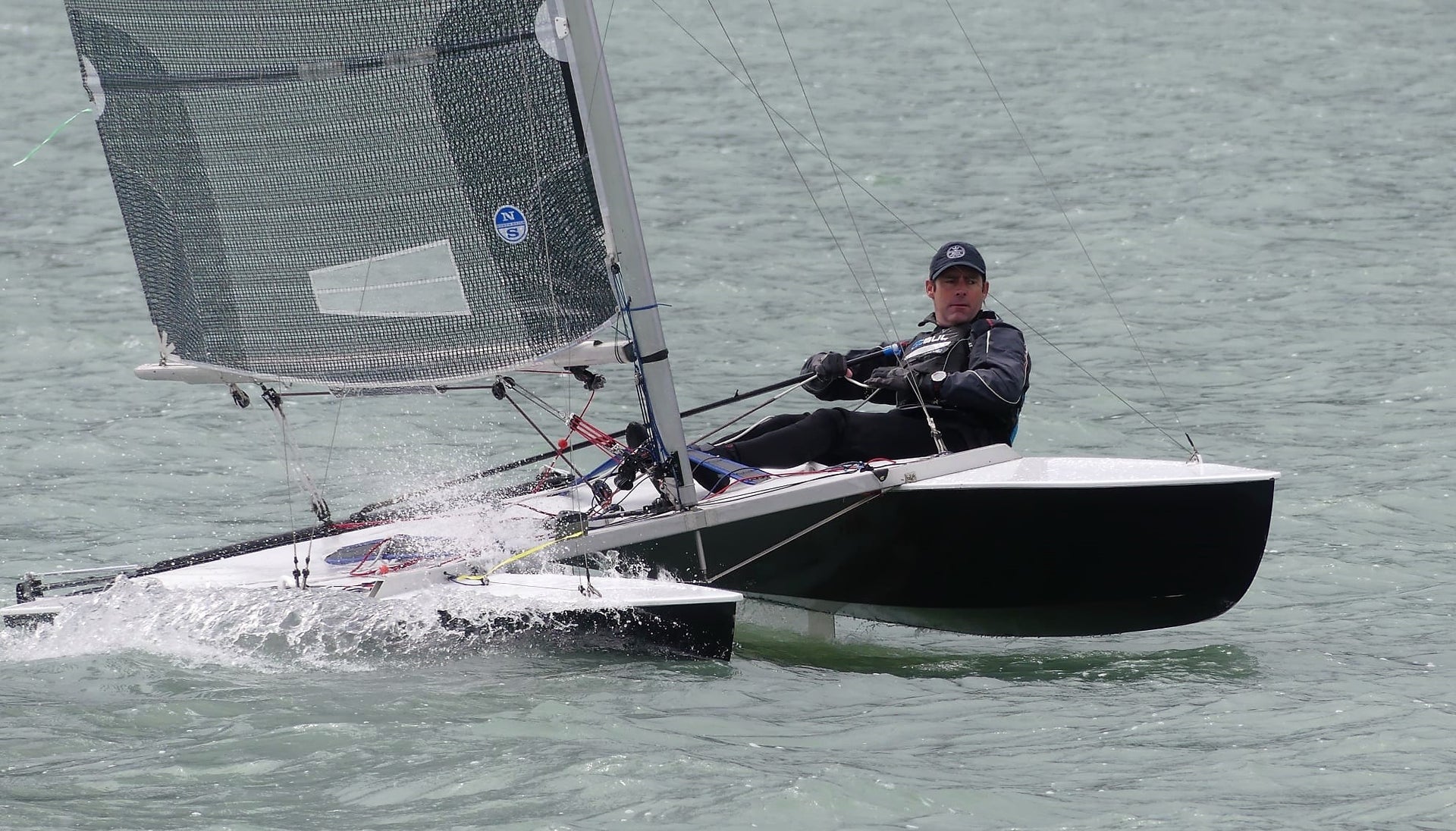
CLASS EXPERT DEREK SCOTT CLAIMS PAPER TIGER NATIONAL TITLE
CLASS EXPERT DEREK SCOTT CLAIMS PAPER TIGER NATIONAL TITLE
Powered by the North Sails S-5 Mainsail
Paper Tiger New Zealand National Champion, North Expert Derek Scott 📸 Kim Clinch
After taking home the Paper Tiger National Championship title in 2019, North Sails New Zealand One Design expert Derek Scott has done it again in 2021. Racing with the S-5 sail, Derek’s boat setup is deliberately simple and easy to use, allowing him to have more time to look around and concentrate on making the boat go fast.
“The S-5 sail is the best all-round sail,’’ explains Derek. “It has enough power in the light for most sailors and it can be flattened off for when the wind gets up. It’s a step up from the S-4 and goes through the wind range better.’’
The Nationals were hosted by Charteris Bay Yacht Club; a fantastic sailing venue where Derek sailed as a junior until he was 17. Now living in Auckland, he is no longer local, but this time sailing as a junior allowed him to build up some local knowledge which he could apply to the Nationals.
“Once you’ve lived in Christchurch, you never forget about the north-westerly wind. It’s a dry, warm, gusty wind that comes over the Port Hills and most of the time is in excess of 30 knots. This is what we had on the first two days which resulted in no racing either day. Once you lose a day or two of a regatta, you have to change your mindset; you can’t afford any bad races and you have to be consistent’’, comments Derek.
“The S-5 sail is the best all-round sail. It has enough power in the light for most sailors and it can be flattened off for when the wind gets up.’’
The New Zealand Paper Tiger class organizes a traveling Grand Prix series consisting of a series of regattas throughout the season at different venues. Derek makes sure to get the most out of these regattas to maximize his practice time on the water, racing against the best sailors in the fleet, which “makes you a better sailor all-round’’ he comments. “Boat prep is also a big one for me. I make sure to turn up with everything ready to go; hull and foils sanded smooth, anything that is worn replaced so the risk of any gear failure is low, and just cutting out the little mistakes that could cost my bad races.’’
As the Paper Tiger Class Expert, Derek’s clients make up a lot of the fleet, and he loves having the opportunity to race against them. It also gives him the chance to help them improve and hear first-hand customer feedback about our sails.
He trains most weekends with Owen Jenkens and Mark Orams as members of the same yacht club. “Both Owen and Mark were greatly involved with developing the S-5 sail. If we are not sail testing, then we are working on boat setup or sail control adjustments. We also partake in some short sprint racing run by the club where we practice starts and mark roundings.”
Finally, we asked Derek what his key to winning in this fleet was. His answer? Consistency. “I think it is all about being consistent, especially in regattas that have been cut short due to wind conditions. If you can minimize the big scores (bad races), then you have more options at the end of the regatta and takes the pressure off.’’
Next up for Derek is a final regatta in the Paper Tiger before the season ends, and he is also jumping back into the Farr 3.7, a class he knows well from before his time in the Paper Tiger class, to compete in the New Zealand Nationals at the end of February. He is looking forward to more great racing!
Third at the National Championship, Hayden Percy 📸 Kim Clinch
Derek Scott 📸 Kim Clinch
READ MORE
READ MORE
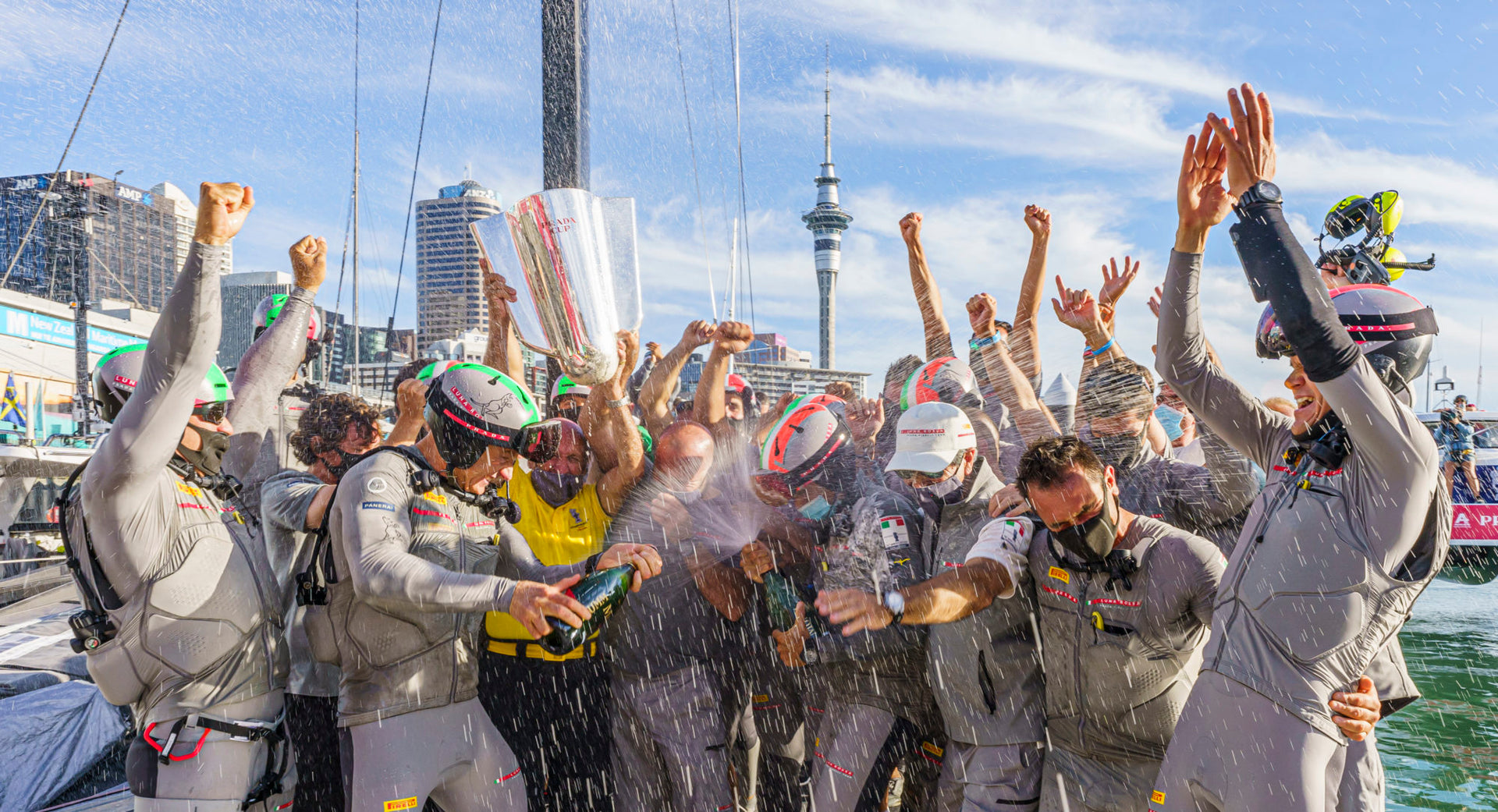
OFF TO THE CUP: A CHALLENGER IS CHOSEN
OFF TO THE CUP: A CHALLENGER IS CHOSEN
Luna Rossa Prada Pirelli Claim the PRADA Cup and Their Seat at the Big Show
COR 36 / Studio Borlenghi
Sir Ben Ainslie and INEOS TEAM UK arrived in Auckland, New Zealand determined to return the America’s Cup to Britain after 170 years. He leaves as a poster boy of true Brit grit, and the bittersweet knowledge that he has helped to hone the skills of Luna Rossa Prada Pirelli for their next challenge, the America’s Cup Match against Emirates Team New Zealand.
As he put it, it’s been a wild ride.
COR 36 / Studio Borlenghi
In December’s America’s Cup World Series, INEOS TEAM UK clocked up defeat after defeat as the other three teams shared the spoils. But the relentless string of losses wrote the INEOS TEAM UK joblist: they picked apart every aspect of their campaign and looked for tenths of knots under every download of data. Five weeks later, INEOS TEAM UK won all their races in the Round Robins and gained a direct line to the PRADA Cup Finals.
That left Luna Rossa Prada Pirelli, led by co-helmsman Jimmy Spithill and Francesco Bruni, to work on their shortcomings in the semi-finals. The Italians were spurred on by their whipping at the hands of INEOS TEAM UK.
“Ben is definitely one of those guys who, funnily enough, has made me better,” said Spithill. “Because anytime you go up against these guys , you have to be at the top of your game.”
Luna Rossa Prada Pirelli arrived at the PRADA Cup Finals with a much improved, all-round arsenal of speed. Their most effective weapon was: high mode upwind in light airs. That turned out to be INEOS TEAM UK’s Achilles’ heel, and unfortunately, light conditions dominated the last week of the series.
But there was a flurry of hope for the Brits and their fans when INEOS TEAM UK won race 6. It seemed like the British would go into Sunday with a new gear, but for races 7 and 8, the 9-12 knot breeze was dealing the cards.
In race 7, INEOS got a clean, impressive start but any advantage soon disappeared under Luna Rossa Prada Pirelli’s upwind edge. And, for Race 8 it was much of the same, although it was clear that INEOS TEAM UK would not go home without a fight. Ben Ainslie pulled a fast tack to port on the startline, burned the remaining three seconds, and watched Luna Rossa nudge out over the line before the buzzer. The Italians were rewarded with a 50-meter penalty. But that 50-meter distance did extend into the hoped 500 distance, and by the top of gate one, Luna Rossa was eking ahead.
And so, after 21 years, the Challenger Luna Rossa Prada Pirelli won the Challenger series and will head to face Peter Burling and the Kiwis. If this all feels a little too familiar, it is; the Kiwis faced off the Italians in 2000.
COR 36 / Studio Borlenghi
Here are some of the reasons why Luna Rossa Prada Pirelli was able to make this dream a reality:
Prior to the Finals, Luna Rossa said they had new foils and sails, a modified mast, and improved in-house software which sailors use to judge the exact time on distance, boundaries, and manoeuvers against the other boat.
Another reason is the Challengers’ Series did its job. The AC75 arrived without an operator’s manual and represents an extremely steep learning curve. The first two America’s Cup World Series would have been the baby steps for learning to race but were canceled by CoVid-19. Linking it to the real world, the Round Robins were high school, while the PRADA Cup Finals have been College.
Some of Luna Rossa Prada Pirelli’s success reflects its role as Challenger of Record. As CoR, they co-wrote the America’s Cup Protocol with Emirates Team New Zealand. This provided them a valuable edge in understanding the AC75 design and was reflected in the similarities between the two syndicates’ first-generation boats.
The big shock was Prada’s second-generation boat. Unlike every other syndicate, it is incredibly similar to their first. Of course, Max Sirena said, we got it right the first time. The skiff-like hull foils easily and recovers from splashdown quickly, even in the light airs that dominated the PRADA Cup Finals.
And there’s another reason. In the round robins, Luna Rossa Prada Pirelli may have been battling a weakness that has since become its major strength: co-helmsmen who are also co-flight controllers. Sirena said he has the world’s best Italian America’s Cup skipper on port and the world’s best Australian America’s Cup skipper on starboard, but, he chuckled, “It has been a difficult process. They are both super-talented. They are pretty different. They respect each other and they push one against the other to get better and better.”
How different? Quotes from Spithill and Bruni on how they felt immediately after winning the Prada Cup appear below:
“Yeah, not too bad, mate.”
“Fantastico!”
And the final word from Sir Ben Ainslie: “In these difficult times that we are seeing around the world, we’ve been incredibly fortunate to race these AC75s as we have been doing. We wish both teams in the America’s Cup all the very best.”
READ MORE
READ MORE
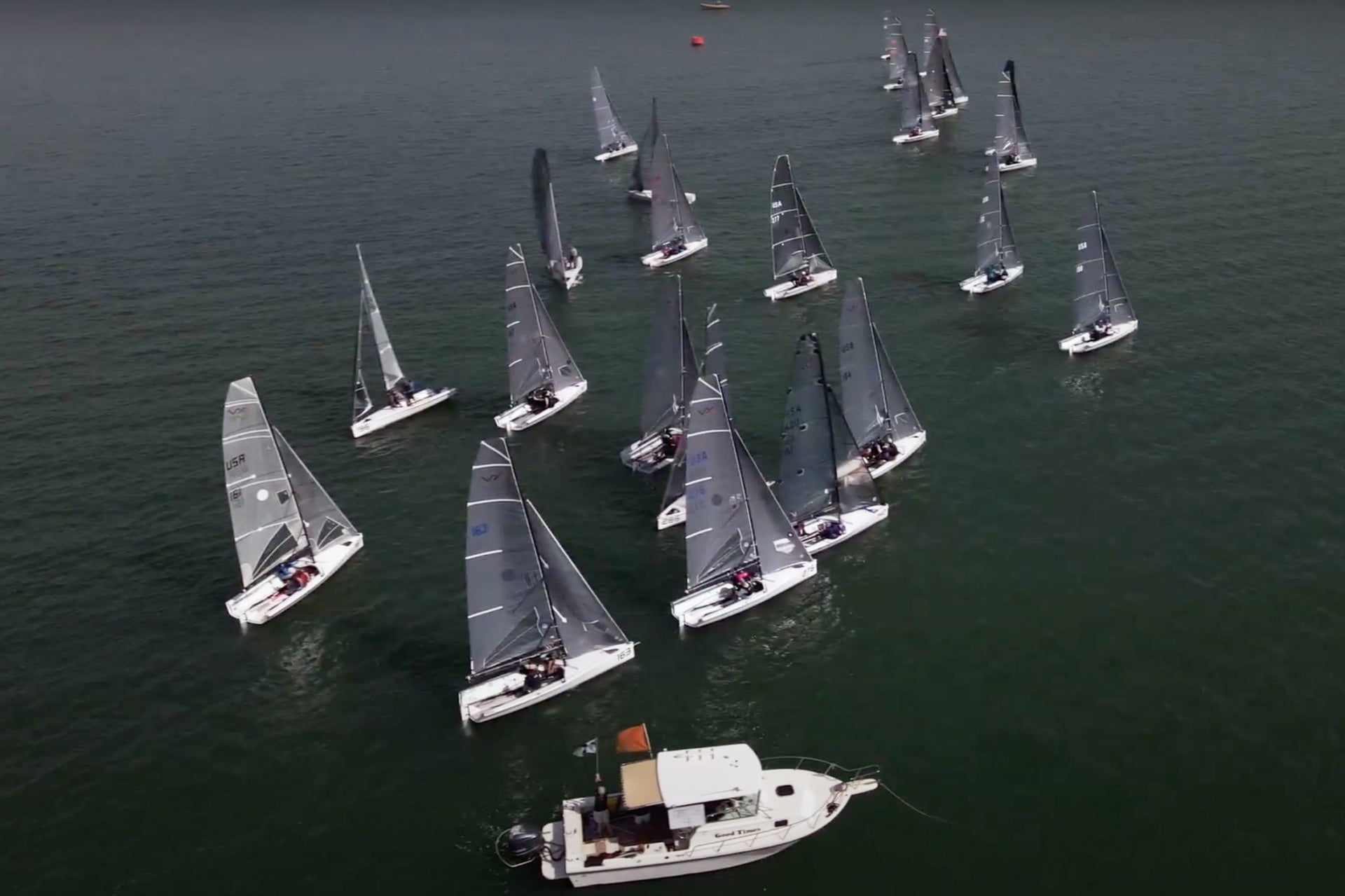
CONTINUED SUCCESS AT THE VX ONE WINTER SERIES EVENT #2
CONTINUED SUCCESS AT THE VX ONE WINTER SERIES EVENT #2
North Customers Sweep the Podium Once Again
📸 Roy Ingham
Sarasota Sailing Squadron welcomed the VX One fleet for their second winter series event over Valentine’s Day weekend. Following the successful Midwinter Championship in January, the fleet grew slightly to 24 boats. By Friday afternoon, most teams were onsite prepping, practicing, and sitting in on Chris Alexander’s rules discussion focused on mark room at leeward gates and downwind finishes.
Early morning fog on Saturday cleared before start time and the race committee was able to get four races off. The southwesterly breeze built from 5 to 10 knots and generally trended left, but not without some irregular righties rolling through. Teams who stayed focused on maintaining adequate power and balance onboard while also staying in phase were generously rewarded. One of the day’s biggest takeaways, however, was that the top teams are not the ones who only seek perfection, but the ones who adapt the most efficiently when mistakes are inevitably made. With no team winning more than one race on Saturday, it’s clear that resilience and forward-thinking were common traits amongst the leaders.
Sunday’s forecast was much less stable, with dark clouds looming on the horizon. A squall hit the fleet with heavy rain on the way out to the course but gave way to overcast skies by the time racing started. The 15 knots southerly steadily built to 25 knots over the course of two races. Sunday’s top teams were the ones who not only depowered the sail plan and hiked hard but also trimmed the sails to minimize heel angle and leeway. Many teams hit personal best downwind speeds, but the race committee made the decision to send the fleet in after seeing a few too many keels in the air.
Winning the weekend was Doug Clark with Mike Marshall. Second place went to Jim Ward with past class president Jeff Eiber and Lynda Bryant onboard. Rounding out the podium was current class president Chris Alexander sailing with Madeline Gill and Kate O’Donnell.
Teams powered by North Sails finished 1, 2, 3, 4, 5, 6, 8, 9.
The final event of the winter series will have a more extended format, with three days of racing on March 19-21. North experts Austin Powers and Madeline Gill will host a debrief after practice on Thursday. Keep your eyes out for more information as we get closer to the event.
SHOP VX ONE SAILS
📸 Roy Ingham
READ MORE
READ MORE
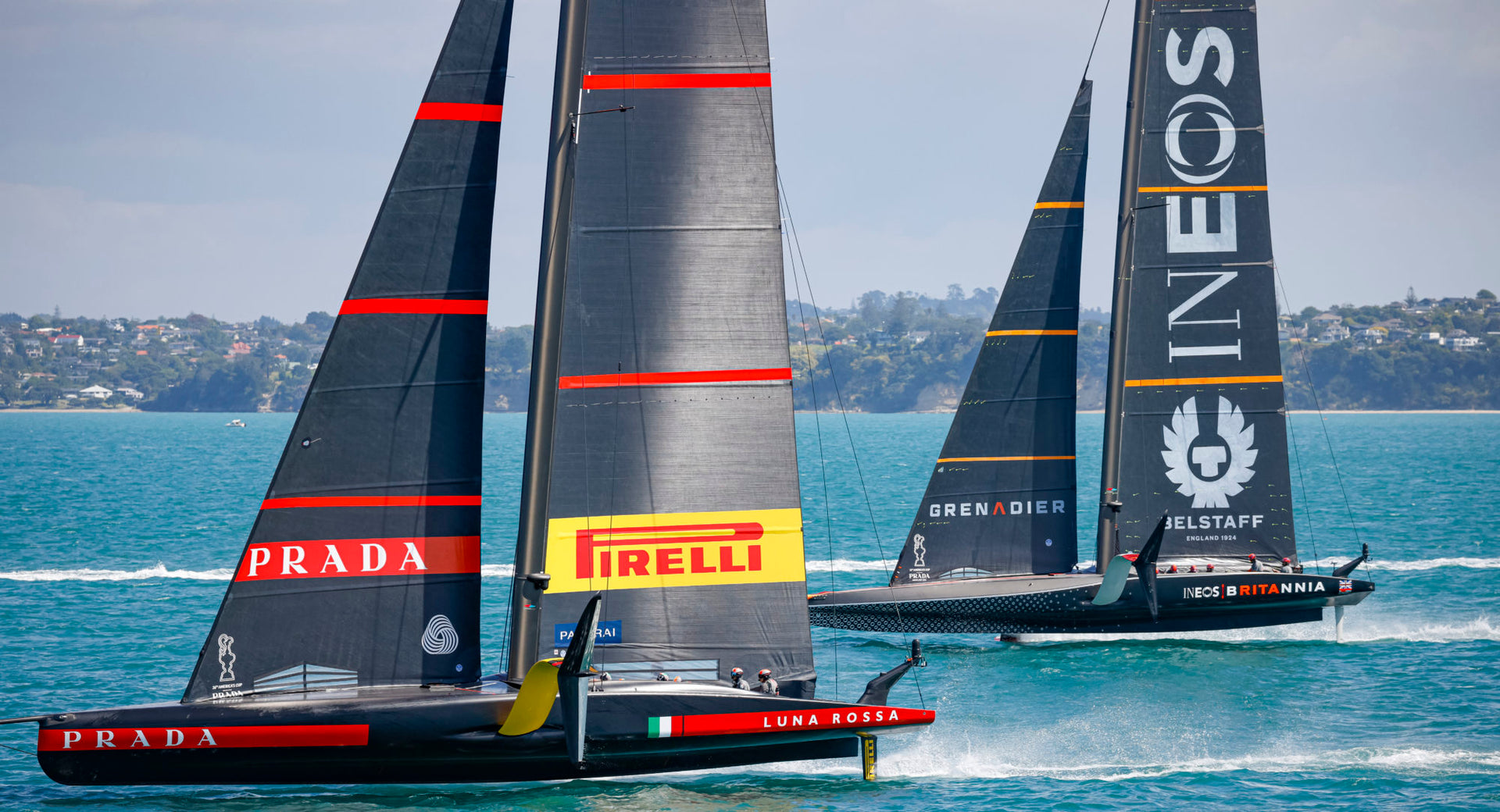
LIVE UPDATES: THE PRADA CUP FINALS
LIVE UPDATES: THE PRADA CUP FINALS
On-The-Ground Updates and Highlights from Auckland
📸 COR 36 / Studio Borlenghi
Two team racing for one seat in the America’s Cup match. INEOS TEAM UK and Luna Rossa Prada Pirelli will sail 13 races, with the first team to win seven declared the winner of the PRADA Cup. This is an exciting time for North Sails as both competitors, and Defender Emirates Team New Zealand North Sails, and our NTG family brands Southern Spars, and Future Fibres to power their engine above deck. Our group has also supplied design talent and software to support the teams’ quest for the Cup. And for those of you who want to dress the part, North Sails is an official partner for event branded clothing.
Racing begins January 13th at 1600 NZL time. Make sure to check your time zone if you’re watching remotely. North Sails will also be covering the PRADA Cup on this live blog and on our social channels throughout the next few weeks.
How To Watch
February 20, 2021, 14:00 GMT
Not going down without a fight
“We’re going into the thick of the fight,” Sir Ben Ainslie said before he led his men into Race 5 and 6 of the PRADA Cup Finals. Following the Covid-19 alert in New Zealand that postponed two days of racing, Ainslie and the British team was four races down to Luna Rossa Prada Pirelli in a best of thirteen event.
The time gave INEOS TEAM UK five consecutive days to hunt for the speed and agility they needed to extend their invitation beyond this weekend. With no boat modifications permitted, they looked at the human factor and went to light airs sailing school. After all, the day was a bit of a do-or-die race for the British team if they wanted to stop the Italians from steamrolling them straight to the America’s Cup.
📸 COR 36 / Studio Borlenghi
“Some of these racing techniques, particularly through the maneuvers, are very subtle,” said Ainslie. “There is so much that goes into a single maneuver, from the sequencing of changing the load between the boards, the main and jib transfers, and more.”
Then they went back to the game film to study their opponent. “The more the teams race,” Ainslie added, “the better we are at figuring each other’s play in the pre-starts.”
Race 5 would reveal the Italians were likely doing the same.
The day started with a show of strength. In the shifting south-wester of 8 to 11 knots, INEOS TEAM UK brought out their biggest jib to help launch the boat in the light airs. Luna Rossa Prada Pirelli hoisted a smaller jib, because their boat lifts onto the foils easier, and any unwanted sail power becomes drag as soon as their AC75 is foiling.
Then came the start. Both boats wanted the right side of the line, but Jimmy Spithill edged up to shut the door on INEOS TEAM UK at the mark, leaving Ainslie with a choice: barge for the line or bail out into oblivion. He barged.
📸 COR 36 / Studio Borlenghi
At the last second, Spithill pulled out his new trick. He brought Luna Rossa into a high, slow mode beneath Britannia.
Wait a second – was that a luff? AC75s don’t luff…do they?
Both boats survived unscathed, except INEOS TEAM UK emerged with two penalties, and by the time that was cleared, Luna Rossa was ahead. Somehow, everyone missed what had just not-happened. The lead INEOS TEAM UK had for the first half of leg one quickly disappeared. Then Prada won the race.
For race 6, everyone expected a repeat performance.
Both boats were headed for the start line, with INEOS TEAM UK to leeward and ahead when Spithill pulled out his next new trick (the luffing one). He dived down to make big swoops behind TEAM UK to make them squirm and burn off speed, but the Brits didn’t fall for it. Nor were they seemingly phased by it. In fact, Spithill burned off his speed and crossed the line late.
This was suddenly a very interesting race
Ben Ainslie took full control of the race and threw in some lee-bow tacks and led at every mark. Upwind, INEOS TEAM UK’s big jib was slower through the tacks while Prada Pirelli flexed their new, higher angles. Downwind, INEOS TEAM UK sailed deeper and exited the gybes lower to regain lost ground and extend the distance. Both boats sailed flawlessly around the course.
Ainslie and tactician Giles Scott played to their strengths, largely avoided duels, and saved their grinders’ energy for a final gybe to stay between Luna Rossa and the finish. The Brits crossed 14 seconds ahead to take their first win of the Prada Cup Finals.
And so, the Brits lived to tell the tale another day.
On Day 3, INEOS found their fight. Expect Spithill and Bruni to come back swinging tomorrow.
COR 36 / Studio Borlenghi
January 14, 2021, 2100 GMT
Winning streaks and losing streaks
In the PRADA Cup Round Robins, INEOS TEAM UK sometimes followed the match racing handbook and sometimes closed the book and played the wind shifts. They then won every race, in a remarkable turn of events where the team turned their 100% losing streak from the America’s Cup World Series into a 100% winning streak.
Now, in the PRADA Cup Finals, the team finds themselves in the familiar, but precarious territory – 4 races down to Luna Rossa Prada Pirelli. The positive: they’ve come back before. The negative: the Italians are on a roll and will do everything possible to ensure the Brits’ comeback story was a one-time thing.
📸 Graeme Murray
INEOS TEAM UK clocked their third and fourth losses on day two of the PRADA Cup Finals on a new venue: Course E, aka the Back Paddock. It’s surrounded by islands and, in the brisk northeasterly, it delivered shifty, gusty winds. The day promised a brawl: two evenly matched boats, lots of passing lanes, and three helmsmen highly skilled at match racing.
In race three, Ainslie entered the start box determined to get a hook on Luna Rossa Prada Pirelli, but admittedly got a bit greedy and ended up below the layline. From there, Luna Rossa ruled the race course. Sometimes they tacked on INEOS TEAM UK in classic match racing 101; sometimes they played to their leader’s privilege to pick wind shifts.
For the trailing Britannia, every tack was an opportunity to make a gain (and they did at times). When the boats did engage in tacking duels, INEOS TEAM UK generally tacked wider, losing a precious few meters every time. And although the Italians misjudged some gybes, INEOS TEAM UK never came within striking distance to pass. The final delta was just 13 seconds – roughly the cost of the error in the start box.
📸 Graeme Murray
For race four, INEOS TEAM UK wanted to make trouble, but a start-box maneuver went wrong and Britannia reared high evoking flashbacks from the now infamous American capsize. The mainsail swept across the deck, depowering just in time to prevent a capsize, but, once again, Luna Rossa was a force to be reckoned with. Again, INEOS TEAM UK tried to rewrite the script, but they could not force an error on Luna Rossa. The final delta was 41 seconds, but Spithill emphasized that the score-line doesn’t reflect the close racing. “You’re constantly just a split-second way from any mistake,” he said.
Ainslie knows there is still hope. “We have to go away and regroup and come back swinging,” he said.
Jaunaury, 13, 2021, 1330 GMT
It’s game on in the PRADA Cup Finals
As day one of the PRADA Cup finals, yesterday was a Very Important Day. Three weeks ago, INEOS TEAM UK won four in a row over Luna Rossa Prada Pirelli – but in America’s Cup terms, three weeks ago is like last year’s winter fashion. Yesterday, upon returning to the water, both teams would strut their new improvements on opening day of the penultimate series.
Going into the day, Luna Rossa Prada Pirelli promised new foils, a modified mast, fresh sails, improved software, and communications. INEOS TEAM UK said they had found more speed and promised they were race-ready.
📸 COR 36 / Studio Borlenghi
Race one opened in sunshine and a light breeze, and if you’re an AC75 named Britannia, that’s not the forecast you would order. INEOS TEAM UK fell off the foils in the prestart and was unable to catch up. Talk about an anti-climax.
Race two brought a perfect, steady breeze of 12 knots. The start was flawless. Luna Rossa Prada Pirelli was to windward and tacked away. Both boats bounced off their respective boundaries and came back for the all-important first cross. Luna Rossa had it, easily, and commanded the lead for the remainder of the race. The Italians finished the day two-up on the Brits.
Well, we didn’t expect that.
Neither, it was clear, did Ben Ainslie. Immediately post-race, he appeared rattled but gained composure for the press conference an hour later. “I think it will come down to who sails the best and that’s absolutely how it should be,” he said.
We agree.
In race one, Luna Rossa Prada Pirelli carried more depth in her mainsail than INEOS TEAM UK, which may have provided a power-boost to get her up onto the foils faster. For the second race, both boats switched to smaller headsails. Luna Rossa went with a fat-head jib, and INEOS TEAM UK, a peaked jib; both teams admitted they could have benefitted from smaller jibs as the wind developed through the race.
Our predictions going into day two? Well, expect to see INEOS TEAM UK sailors doing a wind dance overnight for a forecast suited to their liking.
READ MORE
READ MORE
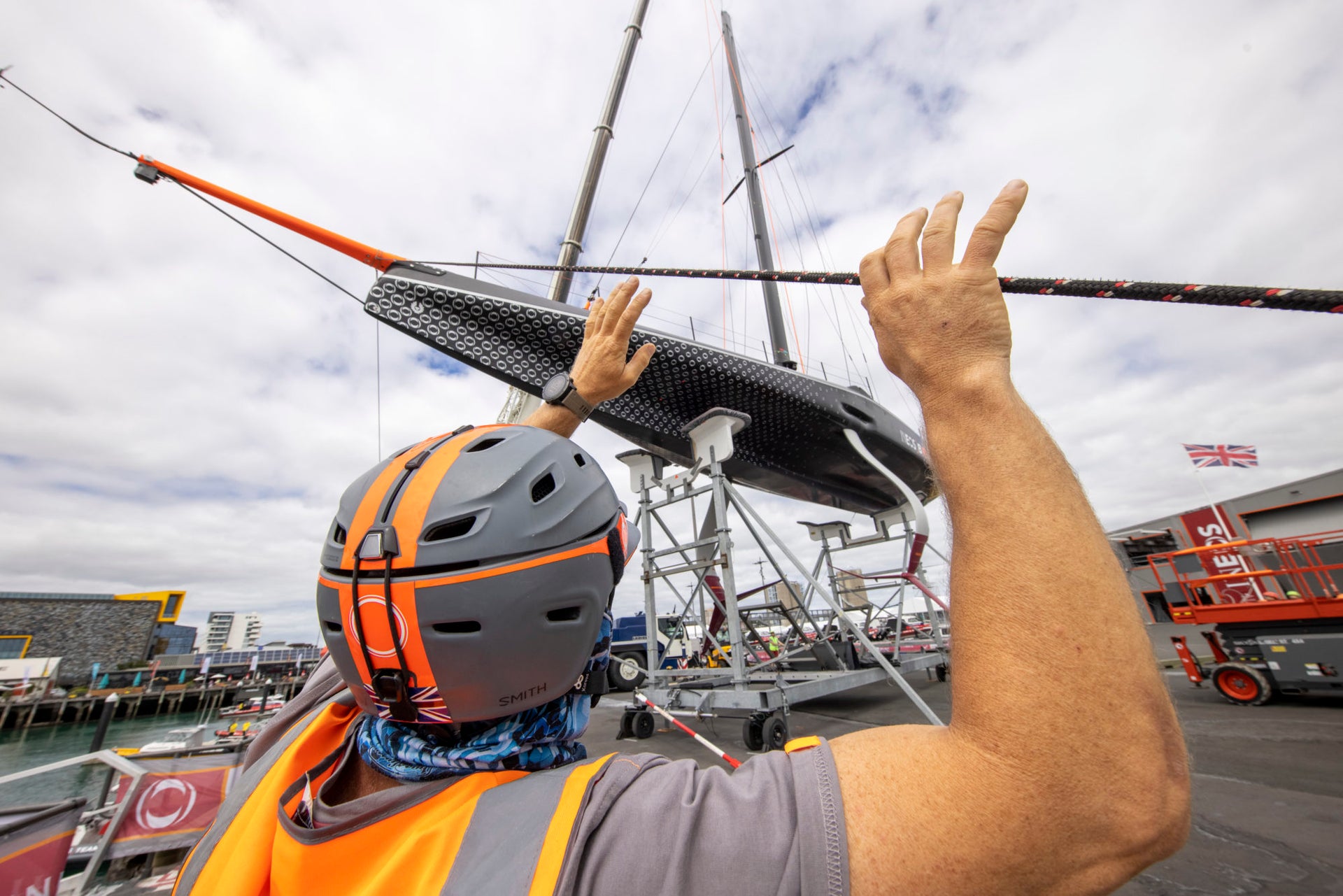
LAY DAYS: EVERY SECOND COUNTS
LAY DAYS: THE TINY GIANTS OF THE AMERICA’S CUP
Every second counts, and a day onshore is critical to development
📸 Harry KH / INEOS TEAM UK
On paper, a “lay day” is just two, three-letter words, but in practice, it is a logistical giant that can make, or break, the dreams of an America’s Cup team.
Just ask Jimmy Spithill. His famous comeback for ORACLE TEAM USA (OTUSA) in the 2013 America’s Cup in San Francisco was possible only because of a day without racing (and the subsequent development) following race 5.
Spithill and crew were behind and things were not looking good for the America’s Cup defenders. Then, OTUSA played a postponement card on the second race of the day (race 6). This then went straight into a previously scheduled lay day on September 11, buying them a total of 48 hours. The team regrouped, brought in a new tactician (Sir Ben Ainslie), and made some modifications.
A few days later, with Emirates Team New Zealand still leading, a journalist asked Spithill what he would do if Emirates Team New Zealand won the next race and went to match point. Spithill replied: “I think the question is, imagine if these guys (Kiwis) lost from here. What an upset that would be. They’ve almost got it in the bag. So that’s my motivation. ”
It was big, big talk. But OTUSA was writing the “comeback” book when they crawled back from an eight-to-one (plus a two-race deficit) to win the Auld Mug. To this day, many give credit to that 48 hour period after Race 5 for OTUSA’s success. Thus proving that lay days are the place where the tortoise might leapfrog the hare.
📸 COR 36 / Studio Borlenghi
A lay day begins as soon as the race boat returns to the dock after racing. From this moment forward, a three-dimensional thesis in time and skills management begins.
The teams start with a deep dive analysis into the live data telemetry which is transmitted from the AC75 during races. Engineers analyze the data looking for unusual readings– for example, a high rudder load. A high rudder load may coincide with a hard bear-away from the top mark, but if the timing shows no reason for the freak high load, the engineers want to know why. “It might be something starting to break or some gremlins starting to propagate,” said Gautier Sergent, North Sails sail designer embedded with INEOS TEAM UK. After looking at the data, the shore crew focuses on identifying the reason and then resolving it before the next race.
Other lay day jobs run to a critical path. “We keep a log of every component,” Gautier said. “For example, we know a rudder bearing has been used for X-amount of hours and done X many tacks, that many gybes and X-amount of bear-aways. After a certain number, it needs checking or replacing. Those preventative maintenance tasks happen on a lay day.”
Meanwhile, the design team always has a box of new tricks they are keen to try. But they’ll only reach for that box when they know the benefits will outweigh the risk level when the team introduces a new component. “If you had only one or two lay days , you might not do something high-risk,” Sergent explained. “You might just do a product change.”
📸 Harry KH / INEOS TEAM UK
That’s why designers like multiple lay days that allow them to validate any changes on the water. “You can’t mess about,” Sergent said. “You’ve got to be confident that the new features are going to be good-to-go without much tuning. Minor fine-tuning is ok, but nothing more.”
“There are new parts coming on every day. For example, new aero fairing details on the hull or the sails. You might want to do a luff curve change, change the batten stiffness or even do a recut on the sails if you think you can improve the shape. You might change the geometry ever so slightly. Many, many tasks like that can happen.”
With up to 50 people needing to work on the AC75 at once, the tasks are prioritized and then choreographed. Some shore crew work the full 24 hours; others work in shifts. The canteen keeps them all fuelled with food and coffee.
Then, there are the obligations to America’s Cup protocol, and this dictates everything. Prior to each series, such as the PRADA Cup final, all teams declare the configuration of their racing equipment such as hull, foils, mast, and sails. Some components cannot be changed after declaration and others can be changed within certain parameters– for example, sail areas can be altered by up to 25%. However, every change requires an updated declaration.
📸 COR 36 / Studio Borlenghi
“We get measured every day,” Sergent said. “The boat gets weighed. The sails get weighed. After components are measured, they are sealed into the boat. If the seal is broken, it has to be declared to the measurer and inspected.” All these steps require documentation and sign-off.
During lay days, the sailing crew become shore crew, helping with tasks such as procurement, data analysis, or servicing winches. They also regularly meet with the design team. “The sailors are our best sensors,” explained Sergent. “We have electronics on the boat, but the sailors have the best feel for how they want the boat to react.”
In between those obligations, the sailors go to the gym and, if they are grinders, consume tens of thousands of calories. Finally, if time allows and the weather is providing racing conditions, they go sailing to test new components and practice techniques.
The one thing they don’t do on a lay day is lay down. Not for one second.
📸 C GREGORY / INEOS TEAM UK
READ MORE
READ MORE
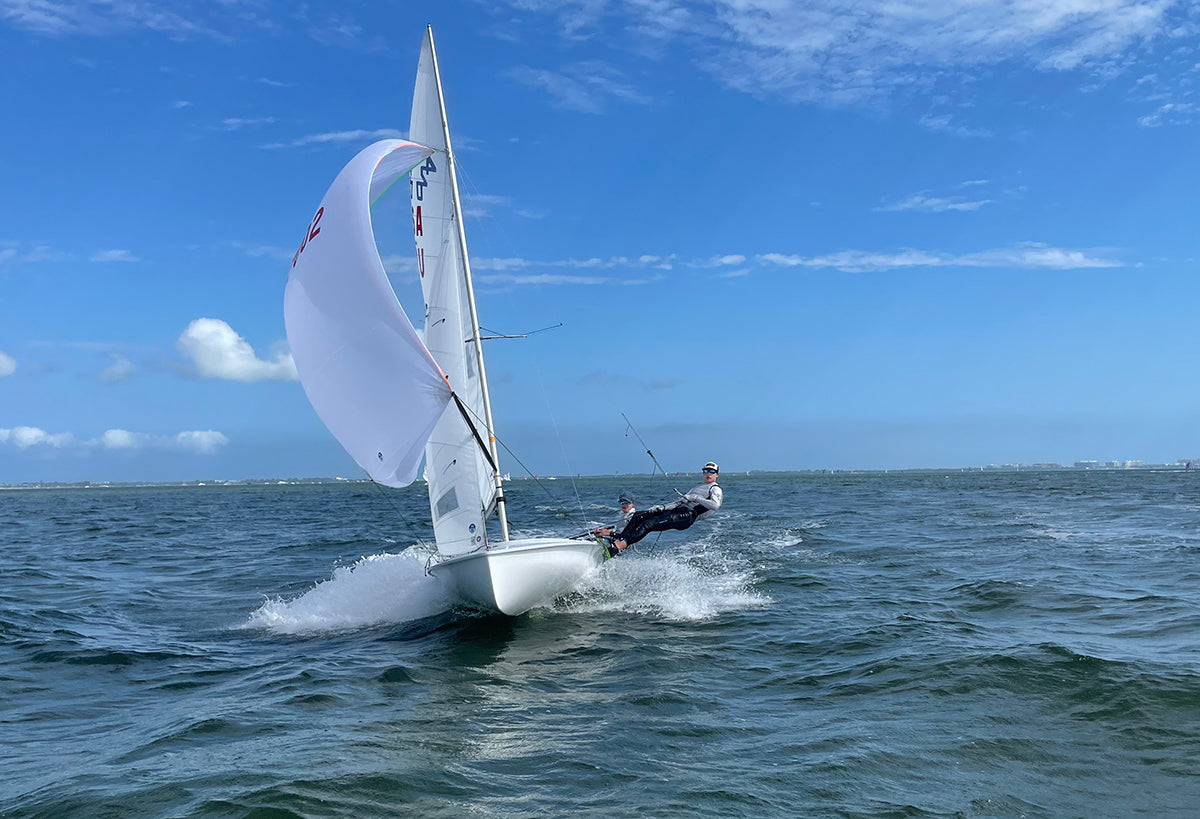
I420 US MIDWINTER CHAMPIONSHIP
i420 MIDWINTER CHAMPIONSHIP
Sitzmann/Woodworth Complete Winter Trifecta
Twenty-two teams competed at the 2021 International 420 Midwinter Championship, hosted by the US Sailing Center in Coconut Grove, FL. While much of the nation suffered through storms, snow, ice, and generally bad weather, competitors were treated to nearly perfect conditions from the practice day right through the last race.
Each day brought 80+ degree temperatures, plentiful sunshine, and SE/S winds that ranged from 6 to 18 knots. This 10-race series sailed all races between 160 and 180 degrees all weekend, with very few course alterations. Except for several general recalls that eventually brought out the Black Flag from the RC, I am not sure I can remember an event that offered such favorable sailing.
With such consistent conditions, this was a regatta that really put a premium on boat speed. Using a variety of sails including the M7, M9, and M11 mainsails, J12 and J13 jibs, and the S01 and S05 spinnakers, North Sails-powered teams dominated this event, finishing 1,2,3,5,6 overall.
Boats using North Sails also won every single race in this competitive ten-race series!
Third place overall went to former North American Champion Thomas Hall/Liam O’Keefe, and the brother team of Griggs/Emery Diemar finished 2nd. Congratulations to Tommy Sitzmann/Luke Woodworth for winning the i420 Midwinter Championship. In fact with this win, Tommy/Luke completed the winter trifecta, winning the Nationals, North Americans, and now the Midwinters.
All of our sail designs worked really well at this event! For more information on i420 Sails and tuning help, contact North Sails expert Tom Sitzmann.
SHOP 420 SAILS
READ MORE
READ MORE
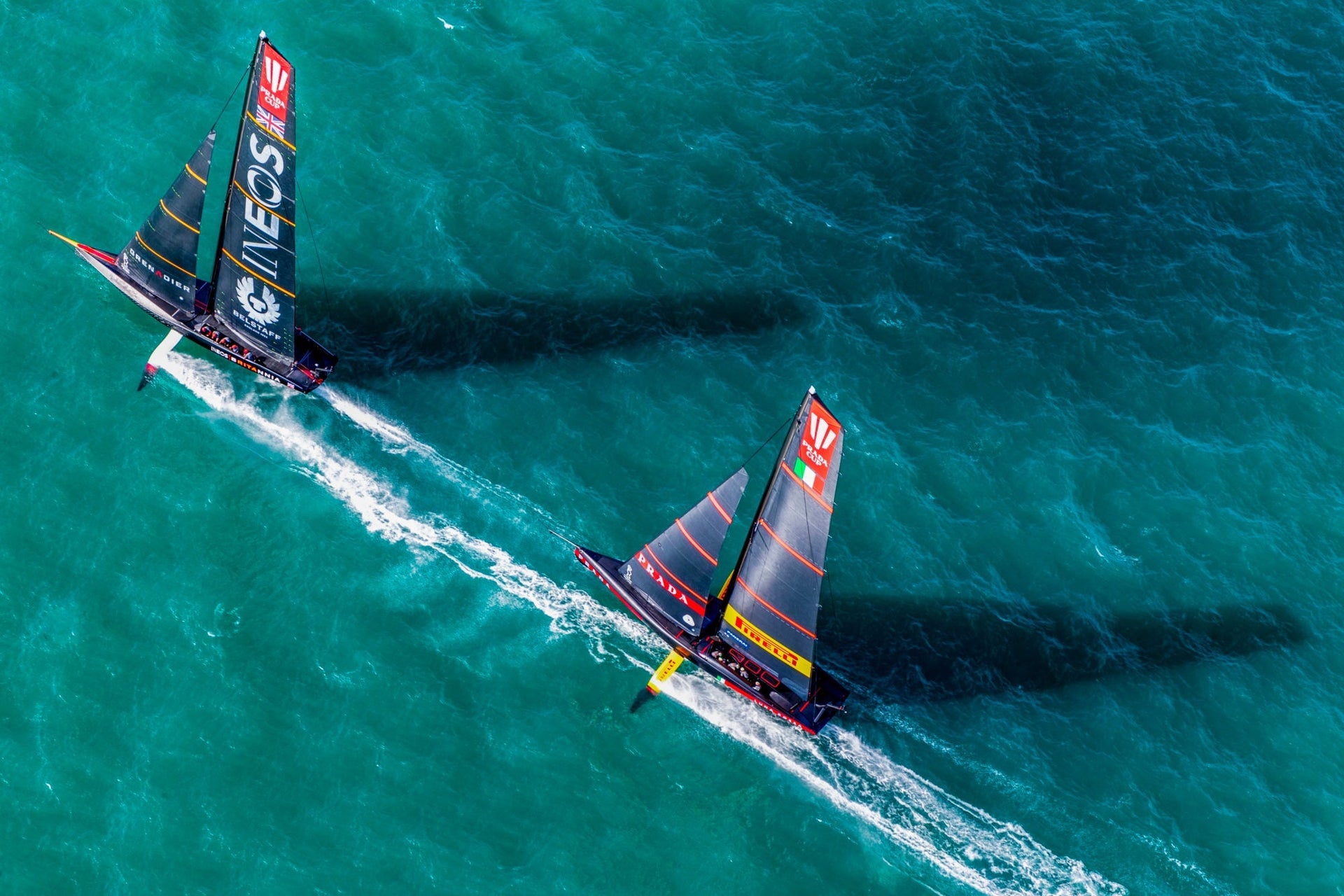
AMERICA’S CUP FAST FACTS
There’s been a lot of Googling America’s Cup facts and stats around the North Sails offices over the past few weeks. We’ve gathered some numbers for you so you don’t have to go searching when you’re asked “how many headsails is each team allowed?” Hint, it’s a lot!
READ MORE
READ MORE
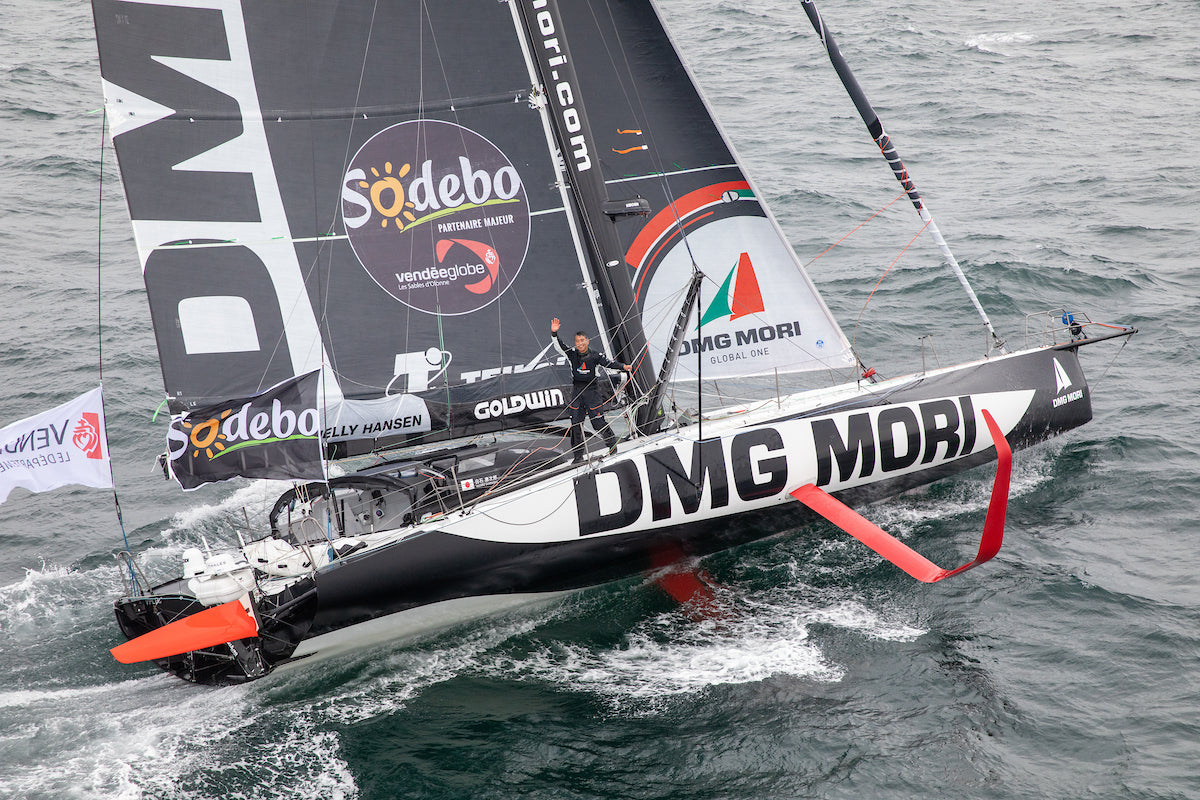
A DREAM BECAME REALITY: KOJIRO ON THE VENDÉE GLOBE
KOJIRO: “THE VENDÉE MAKES ME STRONG AND MAKES ME WANT TO SAIL.”
When he left Les Sables-d’Olonne on November 8, Kojiro Shiraishi had no idea that he was finally going to realize his dream of finishing the Vendée Globe. He had granted us an interview a few days before the start of his second Vendée Globe.
© Olivier Blanchet/Alea
On November 8th, Kokijo Shiraishi (DMG Mori), dressed in his black combat suit, sword at the belt, greeted the crowd as he made his way up the channel of Port Olona in Les Sables-d’Olonne. He had no idea that he was finally going to realize his 30-year-old dream: Finish the Vendée Globe. A dream that almost collapsed a week after his start when damage to the autopilot and violent gybes broke the top of the mainsail. But thanks to remote instructions from his team and North Sails, he managed to repair the sail.
It was a tremendous relief. The adventure could resume. “It’s the most wonderful day,” he said at the press conference after returning from his race. And then on February 11, 2021 at 11:52 a.m., at the end of a long journey of 94 days and 21 hours, Kojiro crossed the finish line with a smile full of gratitude and humility (ranked 16th). This is an amazing feat for this 53-year-old Japanese skipper, who marks the history of the Vendée Globe in his own way by becoming the first Asian sailor to complete this legendary race. He gave us an interview at the beginning of November before casting off for his second Vendée Globe.
Can you talk about yourself and your career as a sailor?
I am originally from Kamakura, a coastal town south of Tokyo, Japan. In my country, ocean racing is not popular, and it is by chance that I discovered the sailing profession at the age of 16. After seeing on TV the victory of Yukoh Tada (Japan’s sailing legend) in the BOC Challenge (single-handed round-the-world race with stopovers), I told myself that this is what I wanted to do: sailing around the world on a racing yacht. And then I went to meet Yukoh Tada. I trained with him and became his trainer for six years. I helped build his new sailboat Koden VIII, later renamed “Spirit of Yukoh” in his memory.
Since then, I have sailed around the oceans, three times around the world, including one non-stop race. I took part in the race of my dreams four years ago, the Vendée Globe, but I had to give up after dismasting off the coast of South Africa. I also had the chance to sail alongside great sailors like Lionel Lemonchois and Bruno Peyron during the Pacific records, as well as with Roland Jourdain, who accompanied me as a coach throughout my DMG Mori project.
© Jean-Louis Carli / Alea
What attracts you to this job? Why are you doing the Vendée Globe?
I feel good on the water and the landscapes you encounter in the South Seas are fantastic. To be able to sail around the world and have the land as your playground is unique. There is no other event in this world like this race. A race that makes me strong and makes me want to sail.
How was your first Vendée Globe?
To be at the start of this 8th edition was an exploit because time was running out for me. I got my boat in April 2016 and within a few weeks I had to qualify and do the New York – Vendée transatlantic race. Then a month after the start of the Vendée Globe, I dismasted… I was obviously disappointed with the result, and I still am, but I am lucky to be able to do the Vendée Globe again and I am grateful to all the people who have supported me so far.
How is sailing perceived in Japanese culture?
Both ocean racing and yachting are not widespread in my country. Historically, Japan is not a nation that has made great land discoveries. Therefore, sailing has not really had its place in Japanese culture. But my mission today and since I have been a professional sailor is to try to expand the small existing sailing community and promote ocean racing as much as possible in Japan.
© Thomas Deregnieau / DMG Mori
Do you know other Japanese sailors?
Yes, I do of course. The few Japanese sailors who have made a breakthrough in this field have often worked outside their country and have raced on America’s Cup boats. But lately, there are several young sailors, including Masa Suzuki in Class40 and other young Japanese sailors who have accompanied me in my preparation for the Vendée Globe and who are trying their hand at the IMOCA. I’m happy to no longer be the only Japanese to sail here in France. But today, and even if it is a great honor to have become the first Asian to have participated, I want to become the first to finish the Vendée Globe.
What do you think of the sailing culture in France? Why aren’t there more foreign skippers in the Vendée Globe?
France remains the best country in the world in terms of ocean sailing. I’m also grateful to all the people around me for welcoming me to this very closed environment. Offshore racing is particularly difficult to integrate, which explains why there are fewer international skippers participating in the Vendée Globe. But I hope that my case can serve as an example for other foreign sailors who wish to integrate this special universe.
Is it difficult to sail on an IMOCA? What do you think of these boats?
An IMOCA is a powerful boat, so each manoeuvre, each sail change requires a lot of physical effort. They are demanding boats, but the sensations of speed that you can have are so different than on other boats and that’s really what I like.
Do you feel much more prepared than on the last Vendée Globe? What do you expect from this race?
It has only been 1 year since my boat has been sailing. We need to do even more sailing together so that the boat is perfect, but I know that time is short and that the boat will not be perfect before the start of this Vendée Globe. The goal is to finish at all costs. This is my one and ultimate goal.
And Kojiro did it! Bravo!
© Thomas Deregnieaux Photography
READ MORE
READ MORE
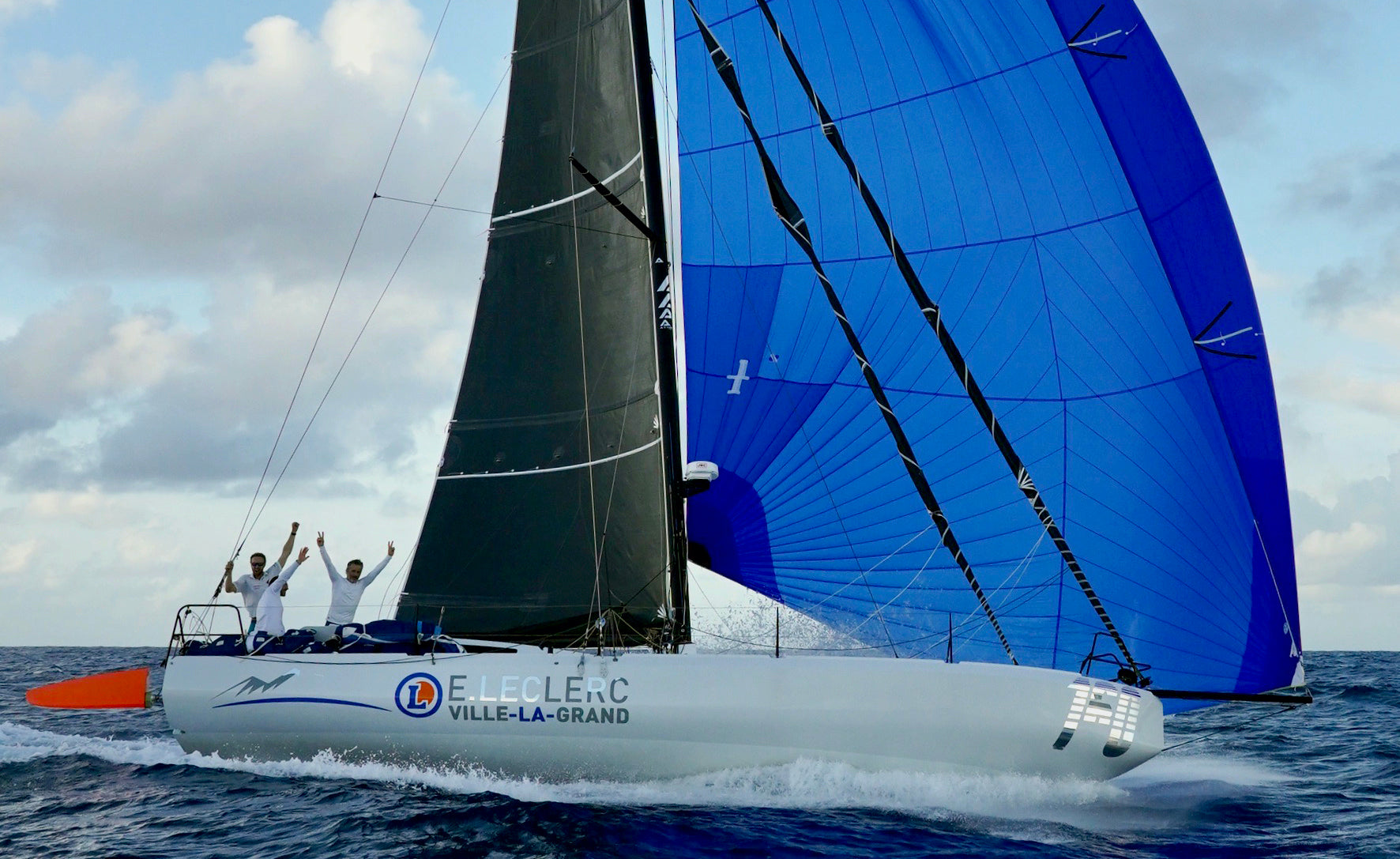
#NSVICTORYLIST: RORC TRANSATLANTIC
#NSVICTORYLIST: RORC TRANSATLANTIC
Powerhouse Trio on Class40 Palanad 3 Wins Overall
📸 Ed Gifford
Olivier Magre and son Antoine launched their brand-new Class40 Palanad 3 in June of 2020 with an ambitious plan: compete in the RORC Transatlantic and the Caribbean 600. Combined with a full season of Class40 racing in 2021, those two events would provide the miles needed to qualify for Olivier’s ultimate goal, the 2022 Route du Rhum.
The Class40 is designed to sail shorthanded, and Olivier finds three to be the lucky number. First, he signed on Corentin Douguet, a well-known Figaro racer, brilliant with weather and strategy. Next, he asked Luke Berry, a young, strong sailor who usually races on his own Class40 and would be the perfect fit and go up the mast when needed. Youth strength plus experience: it turned out to be a winning combination.
“Everyone can do every job, and with the talent we had onboard, we were able to make all the right moves at the right time.”
The RORC Transat was a great chance to test the boat’s downwind sailing potential“, said Olivier. “We had strong competition with Redman, and it was a lot of fun to get to know the boat more and see how hard we could push her.”
Class40s have rounded bows (like Scows), and the design is built for pure speed. Antoine explains, “With all weight focused aft and an eight-degree mast rake, it looks like a windsurfer.” Boat speed is comparable to an IMOCA, Olivier adds. “We hit 27 knots during the Transat. Even on our trip to the starting line in Lanzarote, we saw 28-29 knots. Impressive! Our average speed over ten days was 14 knots. It feels effortless to sail this boat fast, nonstop. It’s a lot of fun!”
Check out what the race was like onboard. 📹 Courtesy of Luke Berry.
Olivier and Antoine both credit the support they received from North Sails experts to get the new boat up to speed. Palanad 3 is equipped with a 3Di RAW 760 main, J1, and J2. In addition, they have an A2, A5, A6, and a FR0.
North Sail expert Alan Pennaneach joined him for the 2020 Dhream Cup and was involved in every step, including onboard training, testing systems, and fine-tuning sails and trim. “We’ve been delighted with our experience and our partnership throughout our program development,” Antoine said. “The feedback is helpful and constructive, the customer service is great, and the sails have not disappointed. It’s been a very positive experience.” Laurent Tilleau, who recently retired, was also a significant part of the Magre’s North Sails experience as they raced together for several years on previous boats.
“The feedback is helpful and constructive, the customer service is great, and the sails have not disappointed. It’s been a very positive experience.”
Olivier’s son Antoine first sailed with 3Di in 2013, and he was impressed, so a new suit of sails from North for the new boat was a must. “The stiffness provides a better feel on the helm, and of course, more durability over time. Our first suit of 3Di lasted 3-4 seasons, and we pushed them hard. With a proper service plan in the off-season, too, our sails were in perfect condition every time we needed them.”
3Di is also lighter and easier to handle than traditional sail materials, both on and off the boat. The weight difference was even more apparent when helping another Class40 with their sails. “We were shocked about how light ours were, after picking theirs up.”
📸 Pierre Bouras
Both father and son enjoy the Class40’s camaraderie. “Before events and after training sessions, we discuss sail selection and design, sail shapes, rig setups– there is a ton of exchange and collaboration, which is why the Class40 is such a great class to be part of.”
Palanad 3 had three crew members on board for the RORC Transatlantic. After the first six hours, they took watches of two hours on, two hours off. For sail transitions or maneuvers, it was all hands on deck. “The Class40 is built for racing,” said Olivier. “The boat designer didn’t care about comfort, so cooking is still a work in progress for us.” With a jet boil for hot water and no water maker, the only hot meal options were freeze-dried or boil-in-the-bag food. “We definitely don’t go sailing for the food,” said Olivier, “but we also enjoyed cold salads with rice and tuna, especially good in the warm weather.”
He said there were two critical things to Palanad‘s Transat victory: the start and avoiding the wind shadows under the Canary Islands, and avoiding sargassum seaweed whenever possible. The tradewinds were stronger farther south, but that’s where the seaweed patches were much thicker, so they planned out their route carefully. “Every 20 minutes, we had to do a weed check,” said Olivier. “The best method we found was to broach the boat intentionally to knock it all off.” For future races, they plan to add a kelp cutter.
All around, the team is composed of seasoned talent. “Everyone can do every job, and with the talent we had onboard, we were able to make all the right moves at the right time,” said Olivier.
With over ten new boats launching this year, the Class40 will only get more competitive and more exciting for all involved. Olivier and his crew hope to get as much time in the boat as possible this year in preparation for the 2022 Route du Rhum.
“We had planned to sail the Caribbean 600, but it was canceled,” Antoine explained. “So Palanad 3 is now headed back to Europe.” The team will start training for the Normandy Channel Race in April, followed by scheduled racing, the Rolex Fastnet in August, and then potentially the Transat Jacques Vabre. “The end goal is the Route du Rhum, and I am sure there will be plenty of smaller races in between to continue to improve on the boat,” said Antoine. “We’ll work hard to keep our training going whether events still go on as planned or not. It’s all about sailing the boat fast–and we’ve got some pretty high expectations!”
📸 Antoine Dujoncquoy
READ MORE
READ MORE
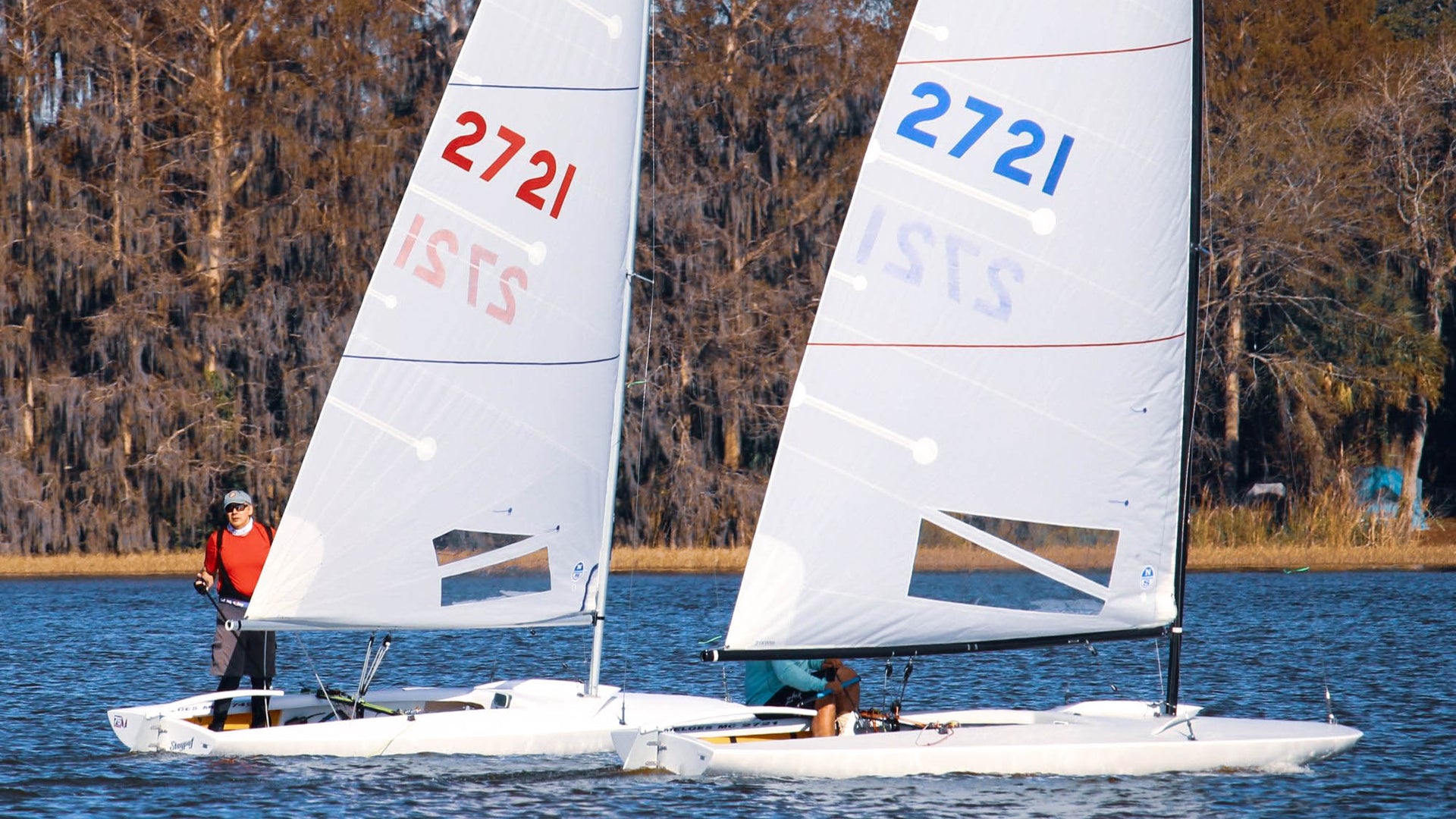
MC SCOW TRAINING WEEK / TRAIN WRECK REGATTA
MC SCOW TRAINING WEEK + TRAIN WRECK REGATTA
A Closer Look At The New 2021 MC Product Line
The new 2021 designs for the MC Scow
North Sails MC Scow class leader Allan Terhune was joined by North’s top sail analyst Eric Doyle, aka ‘the man who is obsessed with making fast sails faster’ for a solid week of MC Scow training on Lake Eustis in Florida.
Thank you to Lake Eustis Yacht Club and Commodore Dave Moring, who welcomed the duo and provided support as well as the perfect facility for sail testing. The MC Masters champions Matt Fisher and Lisa Fisher, as well as Sean Bradley, Ken Felis, Al Haeger, and Chris Kubickek and others also joined in the fun, making it a successful week of test trials for North MC Scow sail designs.
The main goals for the week were to test the new 2021 MC Scow product line, including the brand new “M” design – the Magnum, and warm up for the upcoming regatta with all minds open to continue to learn as much as possible about sailing the boat.
While Allan was sailing, Eric was busy observing all the action from the powerboat and together they made important conclusions about fine tuning the sails. For instance, In light air the main must be trimmed hard enough to bend the mast, but not too hard because it closes the leech and will stall. “This is a very tricky balance between luff curve and broad seam in order to go through the entire wind range with very few controls and adjustments,” said Eric. “It’s important to understand the level of details involved that affect sail design, and how crucial it is that the sail is fast in all conditions.”
Allan had excellent race finishes, with a 3rd, 2nd, and 1st at the regatta, proving that the work done during the week of training paid off. “This is my second MC event,” said Allan. “I learned a lot about the sails and the boat this past week at Lake Eustis, including rake measurements, board angles, and shroud tension. I am excited to share what I learned with the gang.”
MC Virtual Happy Hour
Allan and Eric hosted MC sailors on Friday, February 5th, for an informal virtual debrief about what they learned this past week in Florida.
WATCH
Allan Terhune sail testing the new MC Magnum mainsail.
Sail testing the ZMax and the new MC Magnum. Lake Eustis, FL.
READ MORE
READ MORE
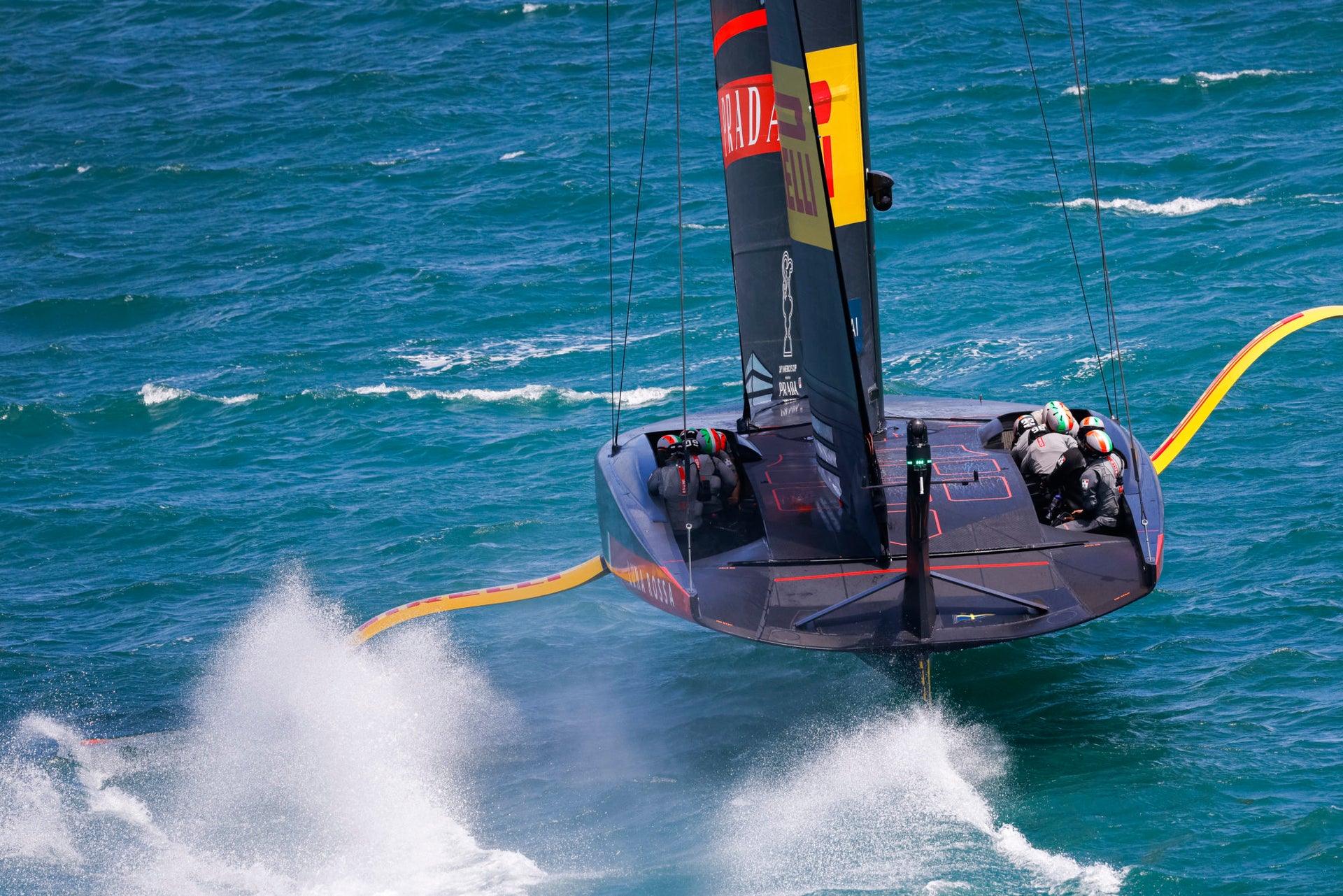
#NSVICTORYLIST: THE PRADA CUP SEMI FINALS
#NSVICTORYLIST: LUNA ROSSA WIN THE PRADA CUP SEMI-FINALS
The Italians sweep the series and secure their spot in the Finals
COR36 / Studio Borlenghi
The drum-roll for the semi-finals of the PRADA Cup began about three days out with two big questions: had Luna Rossa PRADA Pirelli found new speed and restored its mojo after its consistent losses against INEOS TEAM UK? And would the other boat even show up after its frantic repair work?
Race 1 and 2 opened the semi-finals on Friday, 29 January: Luna Rossa PRADA Pirelli vs American Magic. Luna Rossa was almost certainly the stronger team, but the semi-finals would see the first elimination and there was no room for complacency. Jimmy Spithill admitted this did put pressure on the team – but in a good way. America’s Cup wannabes veterans eat pressure for breakfast; this is not a game for the faint of heart.
Over the weekend, the weather conditions were potentially boat-breaking: a choppy sea and puffs that sailors call bullets – sudden bursts of high-speed winds firing off the land. They can strike an AC75 at its most vulnerable when it is executing a bear-away from the top gate. It’s like watching a scary movie: you simply can not look away.
Luna Rossa PRADA Pirelli’s Francesco Bruni would never admit to being scared, but he later said that in such difficult conditions it is important to pre-plan the day. “There is no time to make last-minute calls,” he said, “and if you do make one, you are doing something you shouldn’t.”
COR 36 / Studio Borlenghi
It was exactly the racing experience the Italians needed to up their game before the finals. Luna Rossa sailed into the start box floating like a butterfly, and ready to sting like a bee.
They dominated the start and led to the finish. Then they did the same again in the second race.
They also displayed subtle changes in strategies. Like speed, for example. For 170 years, the experts have said that the fastest boat wins the America’s Cup, but when boat speed is red-lining at 53 knots, the ability to slow down on demand can be an advantage. Thus proving that sailing a clean race is equally important.
“We’re not worried about reaching the maximum speed,” Bruni said, “and when you bear-away at the top mark you probably don’t want to be doing maximum speed.” That’s a good trick, because 53 knots at the wrong time can take an AC75 deep into the danger zone.
Races 3 and 4 on Saturday, 30 January were a whole new day: sunny with an even north-easterly breeze that would provide few passing lanes on the course. Luna Rossa PRADA Pirelli was almost certain to add two more to the scoreboard. They controlled both races from the get-go, sailed faster upwind, and pointed higher. The Americans suffered major issues with controlling their foil boards. Which ultimately extended the Luna Rossa lead.
Max Sirena, Luna Rossa’s skipper, and team director said he was very happy with the performance of Luna Rossa and the on-board communication. “Both have been improving a lot,” he said, “so heads down and concentration up.”
With the semi-finals complete, the America’s Cup bus is boarding the last few passengers, Luna Rossa has shown off its overall improved performance and is looking cool under pressure – except it wasn’t under the pressure it can expect from Ineos Team UK.
Jimmy Spithill was asked what he saw as the key challenge in facing the British team when the Prada Cup finals begin on 13 February.
The reply was a classic Spithill one-liner: “Cross the finish line in front of them.”
COR 36 / Studio Borlenghi
READ MORE
READ MORE
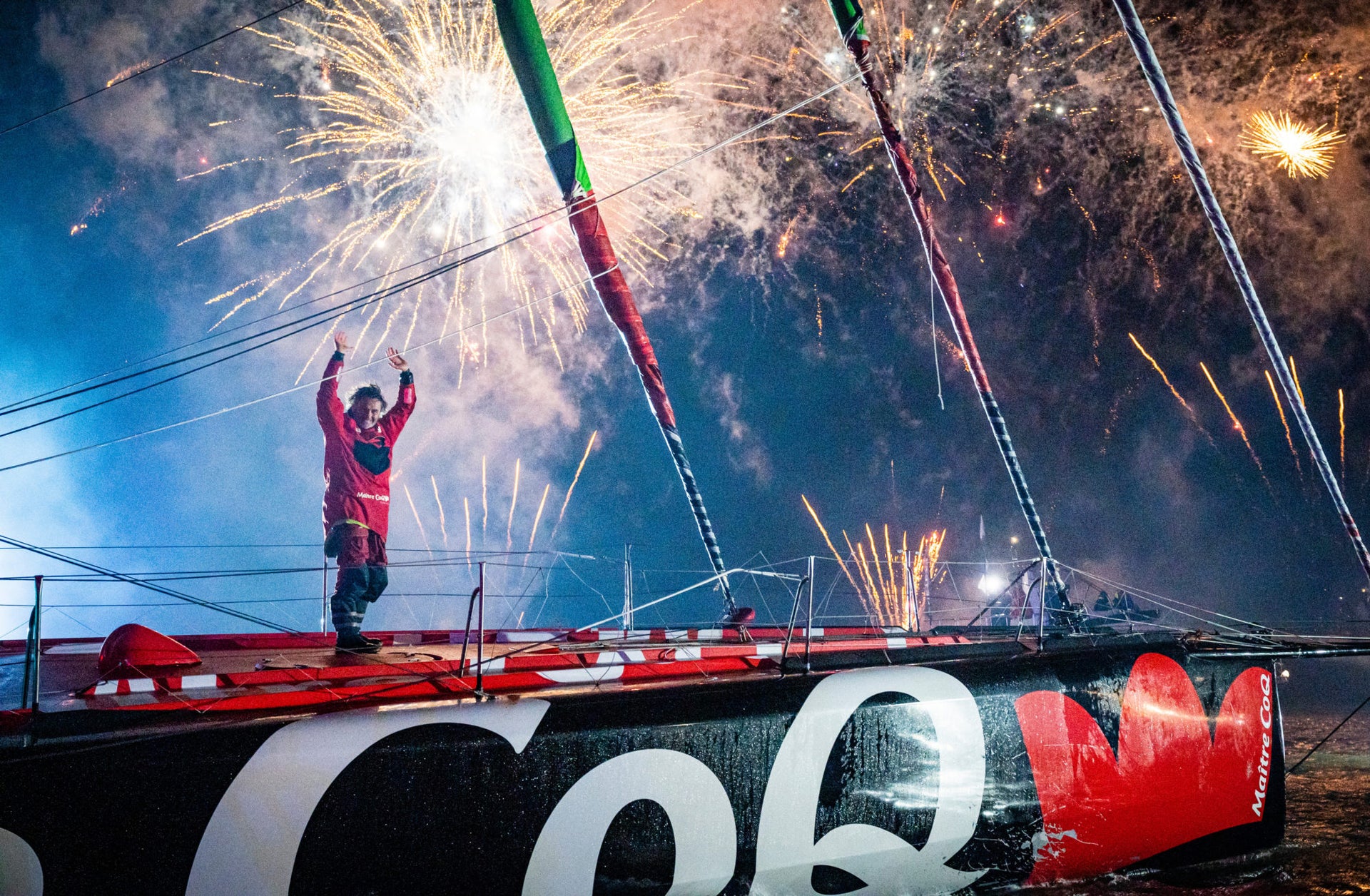
VENDÉE GLOBE, AMERICA'S CUP, WHAT A WEEK FOR SAILING
WHAT A WEEK FOR SAILING!
The Vendée Globe and the America’s Cup has kept us glued to our screens and caused a lot of late nights
Do we all agree it’s been a great week for sailing?
Like you, many of us within the North Sails family were glued to our screens and had a few late nights, fueled by the Vendée Globe’s excitement, quickly followed by the start of The PRADA Cup Semi-Finals in Auckland.
VENDEE GLOBE LIVE BLOG PRADA CUP LIVE BLOG
Let’s start with the Vendée Globe – the closest finish for this incredible around the world race ever. Nine IMOCAs crossed the line within 30 hours, and all nine of those skippers chose North Sails to power their engine above deck. Beyond, 22 skippers who started the 9th edition of the Vendée Globe had North Sails onboard during their solo, non-stop, and without assistance adventure.
The 2020-21 Vendée Globe is the closest finish for this incredible around the world race ever. Nine IMOCAs crossed the line within 30 hours, and all nine of those skippers chose North Sails to power their engine above deck.
For 80 days, the Vendée Globe left us on the edge of our seats, and the race finish was no exception. To start, this race unofficially has multiple winners, Apivia’s Charlie Dalin took line honors, while Maitre COQ’s Yannick Bestaven was crowned the overall race winner, after a 10-hour, 15-minute time credit for his support in Kévin Escoffier’s rescue. Boris Herrmann, who was in the leading pack of three, collided with a fishing boat 90 miles off from the finish. Herrmann limped into Les Sables-d’Olonne line with a badly bruised boat, ultimately claiming 5th overall. Herrmann is the first German sailor to partake in this iconic race. With the French sailors filling the majority of the roster, Giancarlo Pedote (8th overall) claimed the highest finish position of any Italian to have entered the Vendeé Globe.
And then there was race veteran and fan-favorite Jean le Cam. Le Cam secured fourth place on the leaderboard after receiving a time compensation of 16 hours and 15 minutes for his assistance to Kévin Escoffier. He won the hearts of fans worldwide for his bold recovery mission of Escoffier from his life raft on December 1st. In a race where emotions ran high, Escoffier was at the finish line to welcome Le Cam into Les Sables-d’Olonne.
Les Sables-d’Olonne is continuing to welcome the 2020-21 fleet back home. We’ll be keeping tabs and sharing more updates as they become available.
Yvan Zedda / Alea / #VG2020
We also have the America’s Cup! From near sinkings to do-or-die racing (on 75ft foiling monohulls nonetheless), the 36th America’s Cup literally has it all.
As we write this update Luna Rossa PRADA Pirelli sit two points ahead of American Magic after Day One of the PRADA Cup Semi-Finals. The team to claim four points first secures their ticket to the Finals against INOES Team UK. Day 2 begins at 1500 NZL time today. Can Luna Rossa wrap this up on Day 2 or will racing continue through the weekend. For now, we’re on standby.
📸 COR36 / Studio Borlenghi
READ MORE
READ MORE
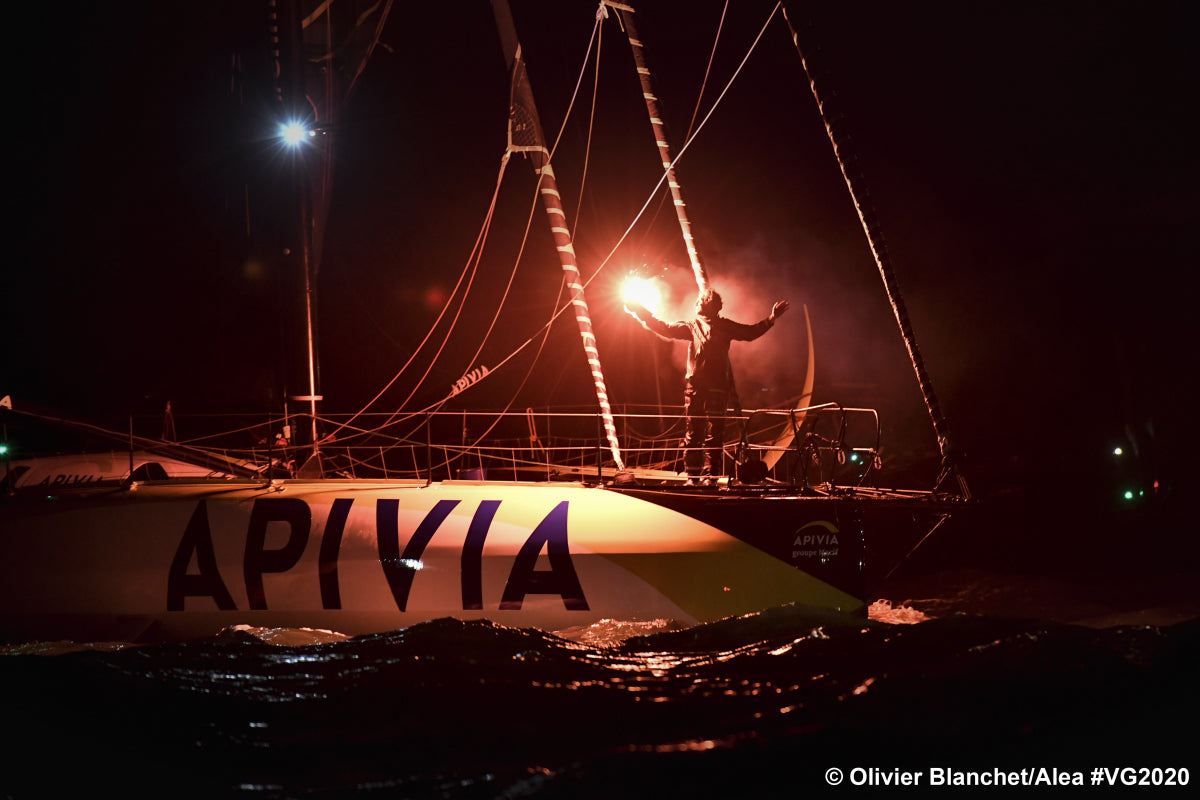
LIVE UPDATES: THE VENDÉE GLOBE FINISH
LIVE UPDATES: THE VENDÉE GLOBE FINISH
Following the Fleet Home After 24,000 Miles Around the World
The Vendée Globe 2020-21 fleet is arriving back to Les Sables-d’Olonne after completing their 24,000-mile circumnavigation. This solo, non-stop, and without assistance marathon is one of the most difficult sailing events. Reaching the finish line, regardless of position, is considered a remarkable accomplishment. 25 competitors will complete this 9th edition of the race. 8 skippers were forced to retire the race, including Kevin Escoffier who was plucked from his safety raft by fellow competitor Jean Le Cam after his boat folded in half.
North Sails is proud to power the engine above deck for 22 IMOCAs participating in the 2020-21 race. Join us on this page as we follow the finish and welcome the skippers back into port.
Race Tracker
February 3, 2021 5:10pm GMT
She did it!
After 87 days, 2 hours, 24 minutes, and 25 seconds, young skipper Clarisse Cremér on Banque Populaire X is the first woman to cross the line in the Vendeé Globe 2020-21. Cremér is 12th overall, and has broken the previous female record set by Ellen MacArthur 20 years ago, which was 94 days and 4 hours.
With a reliable and fast boat, Cremér preserved her IMOCA throughout the 87 days and was very focused on every detail to keep things in control. It’s been exciting seeing her check-in throughout the adventure, showing her energy and determination while offshore. The team’s support for Clarisse in this race has been solid. Banque Populaire teammate and mentor Armel L’Cléach rode out to celebrate this young sailor’s fantastic accomplishment and welcome her home.
📸 Adrien Francois/Alea
Cremér’s first IMOCA experience was doublehanded racing in the 2019 TJV with Armel L’Cléach. Her first solo race was in the 2020 Vendée Arctic, where she finished 12th. A 12th place finish in the Vendée Globe is the icing on the cake for Cremér, her team and her country as a highly motivated and driven female role model for women in sailing.
As the Banque Populaire technical team jumped aboard to congratulate her, emotions were high. She gave up control of the boat for the first time in almost three months, and took a few moments to celebrate her accomplishment free of any more responsibilities.
It was clear the team made a great choice in Cremér for the 9th edition. Her boat was set up perfectly to allow her to accomplish her goals, push the limits and show just how much hard work she’s willing to put in to everything she does. She’s already talking about coming back for another Vendée Globe. We will be here too, cheering her on every step of the way.
Brava Clarisse!
📸 Olivier Blanchet/Alea
February 2, 2021, 3:00pm GMT
It’s not over yet…
Benjamin Dutreaux on OMIA – WATER FAMILY*, Maxime Sorel on V and B-MAYENNE, and Armel Tripon on L’Occitane en Provence have now reached the finish in 9th, 10th, and 11th place in what were the most challenging conditions in the final approach into Les Sables-d’Olonne.
Benjamin Dutreaux, race rookie, arrived at the game late but has successfully crossed the line 9th in his first non-stop, unassisted round the world adventure. Congratulations Ben!
Before the start of the 9th edition, Armel Tripon was already a familiar face in ocean racing. Over the course of his 84 days at sea he shared the importance of experience and determination, and the value of resilience. all of his offshore accomplishments, Tripon has risen above the hard moments;taking every moment in so he can be better next time. He iss the perfect example of a sailor with an immense passion for the sport that puts his heart and emotions into every maneuver and every decision. For another first timer in the Vendée Globe, we are very proud!
Tripon commented, “I am lucky to have been able to race, to do what is my job. Every day I thanked my partner for allowing me to live this dream. I didn’t want to spoil it. I had an exceptional boat which was very well prepared. I got to know it well so I could push her harder and harder. It was a big chase to get back to boats as we went along. It was motivating. I really enjoyed playing with the weather systems and finding lines. Every day is to be celebrated on the Vendée Globe”
📸 Olivier Blanchet/Alea
All eyes to the finish now to prepare for the 12th place finisher and first female to arrive; Clarisse Cremér on Banque Populaire X. At 31 years old, Clarisse is the youngest skipper to finish this edition race, and is currently chasing a chance to break Ellen MacArthur’s 20-year old race record for women finishing in less than 94 days and 4 hours. A non foiler and first timer, she’s no doubt won the hearts of female sailors worldwide and to see her complete the race, let alone finish in the top half is truly remarkable and an inspiration to all.
She commented, “Boris’ story gave me a shock. I will have to be on the lookout until the finish, I have crossed the lanes and they were busy and I just had to slow down at one point to let a cargo ship pass. I can see them on the AIS so it is OK just now.
It will not be easy to slow down in 30 knots of wind so I think I will be under 3 mainsail reefs only and I will try to accelerate to aim for a finish tomorrow afternoon. It’s not easy to predict an exact finish time, it’s a new exercise!”
📸 Clarisse Cremer / Banque Populaire X
Meanwhile, Jeremie Beyou on Charal is battling the conditions near the Azores, in 35 knots and gusts ranging from 45-50 knots. The conditions are exhausting and it doesn’t look like it will improve the closer he gets into range of the finish.
Romain Attanasio on PURE Best Western is also in the same boat just a tad further North, wondering if the weather will let up, exhausted, and pushing on.
Spirits are high and adrenaline is pumping as the next three boats get closer to the finish port. We are keeping an eye on the race tracker and wishing all skippers the very best of luck and safety as they press on into the final sprint of the race.
To be continued…
January 28, 2021, 1:05am GMT
Yes He Did!
Jean Le Cam has crossed the Vendée Globe finish line. Le Cam secured fourth place on the leaderboard after receiving his time compensation of 16 hours and 15 minutes for his assistance to Kévin Escoffier. Jean has been part of the race since the 2004-05 edition and is known for his camaraderie, excellent navigation skills, sincerity, and passion for the sport of sailing.
Le Cam won the hearts of fans around the world in his valiant recovery mission of Escoffier from his life raft on December 1st. In a twist of fate, Escoffier abandoned PRB the same IMOCA which Le Cam boarded in 2008 after his keel snapped off and his boat capsized off Cape Horn. Apart from finishing the race and placing in the top five overall, Jean le Cam has shown true sportsmanship as a Vendée Globe race veteran, and is also a role model and mentor for many new to the race.
📸 Yvan Zedda / Alea / #VG2020
With Le Cam’s finish, we have a standing shuffle, bumping Boris Herrmann, Thomas Ruyant, Damien Seguin and Giancarlo Pedote to fifth, sixth, seventh, and eighth respectively. Pedote’s first race participation is significant, and his consistency and determination has allowed him to accomplish what no other Italian has before, setting a personal record not only for himself but for his country.
Pedote commented;
“I managed to complete my round the world and race at the same time with rather reduced means and a small team that did not have the experience of a Vendée Globe. It is a satisfaction for me.”
The top 10 will be rounded out by Benjamin Dutreux (Omîa – Water Family) and Maxime Sorel (V & B-Mayyene) who are expected to finish this evening local time.
January 28, 2021, 4:30 GMT
Bestaven and Dalin Share Vendee Globe Honors
Since November 8, the 2020-21 Vendée Globe has left us on the edge of our seats, and now three months later, we’re watching eagerly as the finishers have been trickling in. From sinkings to accidents, this Vendée Globe has been truly special. Now, with the “famous five” lead pack ending their around the world journey all within 24 hours of each other, this Vendée Globe finish is officially the closest in the history of the race. Here’s a quick recap of the past 24 hours:
Charlie Dalin’s Apivia claimed line honors, completing his circumnavigation in 80 days, 6 hours, 15 minutes, and 47 seconds. A Vendée rookie, he remained in the lead for the majority of the race and overcame what could have been race-ending foil damage early on in the Southern Indian Ocean. Coming into the finish, Dalin crossed the line at full speed hoping to put as much time between him and the rest of the pack who all finished just a few hours after him in what now is the closest Vendée Globe finish since the race’s start in 1989.
Yannick Bestaven of Maitre COQ crossed the line 7 hours, 43 minutes, 59 seconds after Dalin. He benefits from a 10 hour and 15 second time credit for his support in Kévin Escoffier’s dramatic rescue, as a result, he is named the overall winner of the Vendée Globe 2020-21. Bestaven is one of two skippers that led the fleet for the longest time: 26 days. When he crossed the finish line, the spectators were shouting from their balconies to celebrate his finish and pay tribute to his amazing accomplishment as the corrected time overall Vendée Globe trophy winner.
Yannick commented upon finishing;
“I feel like I’m living a dream, hallucinating. You go from total solitude to this, to this party, to these lights, these people who are there despite the complicated context, I don’t realise what’s going on. I’m still in my race. It’s a child’s dream.I always believed I could do it, but in what position? I thought I would win at Cape Horn, but then I thought that if I finished 25th, then that would be good enough. We prepared a lot for this Vendée Globe, I knew I had a reliable boat and I was able to pull it off. This result is beyond my expectations. I imagined living many things, I have lived many others. After having fought as I have fought, bringing a victory to Maître CoQ IV is a dream!”
Louis Burton crossed the line second, 4 hours, 9 minutes, and 25 seconds after Dalin, and has solidified third place overall on the scoreboard. Sailing around the world at an average speed of 12.6 knots, this race was a great achievement for the seasoned sailor who’s completed eight transat’s and two around the world solo trips. With this Vendée Globe finish, Burton improved his personal record by four places after coming in 7th in the 2016-17 edition.
Boris Herrmann, who had a 6-hour time credit was in prime positioning for the top spot, when he collided with a fishing boat 90 miles from the finish line. Fortunately, Herrmann was not hurt in the collision, however he did suffer boat damage which forced Sea Explorer to limp to the finish line, arriving home on the morning of January 28. He currently sits in 4th place and must wait for the arrival of Jean Le Cam to determine his final position on the scoreboard.
Thomas Ruyant on Linked Out rounded out the “famous five” and arrived after 80 days, 15 hours, and 22 minutes covering 24,365.74 miles at an average speed of 12.59. One of the race favorites of the 9th edition, Ruyant was in the lead pack for a good portion of the race. Despite foil damage, he pushed forward to finish the race– only highlighting his determination to not let anything prevent him accomplishing his finish line goal. In the early hours of the 28th, in tough sailing conditions and surrounded by darkness, he hedged across the line. Four years ago, Ruyant was unfortunately forced to retire from the race. This time, Ruyant successfully completed his world tour with a smile on his face so large that it spoke to his ambition and mental strengths to persevere despite the challenges.
Following Ruyant, Damien Seguin on Groupe Apicil and Giancarlo Pedote on Prysmian Group. Groupe Apicil came in hot to the finish at 20 knots as the first non-foiler to finish the race, which is one of his many stand-out accomplishments in this 9th world tour. With still uncertainty for time owed to Le Cam, He and Seguin now wait patiently for their comrade to cross the line to determine their final positions.
To be continued…
January 28, 2021, 1:30 GMT
Burton Reached Les Sables-d Olonne
Bureau Valleé 2, skippered by Louis Burton, is second to reach the Vendée Globe finish line. Burton completed his circumnavigation in 80 days, 10 hours, 25 minutes, and 12 seconds. The 2020-21 race is his third Vendée Globe, most recently having placed 7th in the 2016-17 edition of the race, a remarkable position considering his former boat was deemed one of the heaviest in the fleet. In his latest adventure, Burton acquired Banque Populaire VII, the foiling IMOCA, which carried Armel Le Cléac’h to a record-breaking race.
Congratulations to Burton on his Vendée Globe success and we hope he gets some well deserved rest.
Oliver Blanchet / Alea
January 27, 2021, 21:00 GMT
#NSVictory List: Bravo Charlie!
Charlie Dalin flew across the finish at 20 knots to take line honors in the Vendee Globe 2020-21. Dalin arrived at Les Sables-d Olonne after 80 days and six hours, in a race that would not let up. A Vendee Globe rookie, he remained in the lead for the majority of the race and overcame what could have been race-ending foil damage early on. Coming into the finish, Dalin did not, and could not, take his foot off the gas though, as the top five competitors will arrive home mere hours after him, in what might be the closest Vendee Globe finish ever.
To add complexity to this edition, Dalin will remain on standby until the overall winner is declared; both Boris Herrmann and Yannick Bestaven have a time correction after being rerouted to support Kevin Escoffier. Herrmann was awarded a total of six hours for offering assistance and Bestaven ten hours, fifteen minutes.
Olivier Blanchet/Alea
The around the world race is a solo, non-stop, and without assistance, marathon covering over 20,000 nm, and is one of the most difficult sailing events in the sport. Reaching the finish line, regardless of position, is considered a remarkable accomplishment, and often the sailors who finish last are the sailors who’ve won our hearts. Over the next week, 25 competitors will finish the 9th edition of the race. Eight skippers were forced to retire, including Kevin Escoffier who was rescued from his life raft by fellow competitor Jean Le Cam. Escoffier’s boat folded in half in large seas shortly before the Cape of Good Hope in the South Atlantic Ocean. Le Cam was given 16 hours and 55 minutes for his assistance.
North Sails is proud to supply 3Di and Helix Structured Luff sails to power the engine above deck for 22 IMOCAs participating in the 2020-21 race. Join us on this page as we follow the finish and welcome the skippers back into port.
January 27, 2021, 19:00 GMT
Watch the Finish Live
January 26, 2021, 18:30 GMT
An Ultra Competitive Fight to the Finish
With the leading pack showing a tight gap, the suspense will be high until the end. This single-handed round-the-world race could even end in a sprint; never seen before in the history of the Vendée Globe. The designers of North Sails France take stock of this exciting 9th edition full of twists and turns.
What do you think of this edition? What surprised you the most in this first part of the race?
It’s an incredible edition. This Vendée Globe is very competitive, and things are happening every day! We followed it closely, and we continue until the end! We can’t wait to see them arrive.
In this first part of the race, like many people, we were surprised by the bad conditions the fleet encountered and the number of technical problems with hooks, rudder, foils, sails, structure, pilot, etc. We were also impressed by the poor delta performance for the foilers against Jean le Cam’s boat (Yes We Cam!) and Benjamin Dutreux’s boat (Omia – Water Family). The weather surely contributed to the fact that the foilers did not dig an incredible gap with the non-foiling boats.
And of course, the rescue of Kevin Escoffier (PRB) by Jean Le Cam is particularly noteworthy. Frankly, it reminds us of the Vendée Globe of our youth!
The new foilers are put to the test in this Vendée. Is it linked to the weather that varies from one edition to the next? Is it a question of luck to pass a front without problems and without a UFO? Or is it because of the new materials that we always want thinner and lighter?
The skipper can deal with a front, it depends on his strategy. Then there are the damages due to design problems that are part of the evolution of these boats. As for hitting a UFO, all the boats are equal. It is a strong random part of this competition which is not predictable for the moment. Probably the latest generation of foilers rake wider and statistically, they are more likely to encounter a UFO. The IMOCA class is working on a sonar sys
READ MORE
READ MORE

AN ULTRA-COMPETITIVE VENDÉE GLOBE
AN ULTRA-COMPETITIVE VENDÉE GLOBE
The 9th Edition of the Vendée Is Coming to a Close
📸 Jean-Marie Liot/Alea
The first competitors of the Vendée Globe are expected on the morning of Wednesday, January 27 (local time) in Les Sables-d’Olonne after more than 11 weeks at sea and 24,000 miles covered around the globe.
The designers of North Sails France take stock of this exciting 9th edition full of twists and turns. With the leading pack showing a tight gap, the suspense will be high until the end. This single-handed round-the-world race could even end in a sprint; never seen before in the history of the Vendée Globe.
What do you think of this edition? What surprised you the most in this first part of the race?
It’s an incredible edition. This Vendée Globe is very competitive, and things are happening every day! We followed it closely, and we continue until the end! We can’t wait to see them arrive.
In this first part of the race, like many people, we were surprised by the bad conditions the fleet encountered and the number of technical problems with hooks, rudder, foils, sails, structure, pilot, etc. We were also impressed by the poor delta performance for the foilers against Jean le Cam’s boat (Yes We Cam!) and Benjamin Dutreux’s boat (Omia – Water Family). The weather surely contributed to the fact that the foilers did not dig an incredible gap with the non-foiling boats.
And of course, the rescue of Kevin Escoffier (PRB) by Jean Le Cam is particularly noteworthy. Frankly, it reminds us of the Vendée Globe of our youth!
What is your analysis in the second part of the race?
Nothing can be taken for granted! The weather allowed for some regroupings and some changes in the rankings. Each sailor’s way of sailing is revealed even more. Some attack hard, others control.
Otherwise, the boats are no longer 100% as they were in the first part. The speed polarities of each one are thus completely revised, it is all the more difficult to analyze. It is then difficult to really know what the full potential of the sailor/boat pair is between technical problems and fatigue.
📸 Maître CoQ / Jérémie Beyou
What do you think of these high-profile skippers forced to give up so abruptly?
Unfortunately, it’s part of the Vendée Globe rule. It remains a mechanical sport. We are sad for them and for their team. We hope they will come back for the next edition!
It would be a record edition considering the percentage of boats still on the water (76 percent), how do you explain it?
Frankly, it’s paradoxical, because there were few of them that had to abandon and yet it seems that the conditions have been particularly tough. Let’s wait for the finish to affirm this percentage, the race is not over. Having said that, the weather has surely pushed the skippers to be more cautious with their boats.
📸 Romain Attanasio / Pure – Best Western
The new foilers are put to the test in this Vendée. Is it linked to the weather that varies from one edition to the next? Is it a question of luck to pass a front without problems and without a UFO? Or is it because of the new materials that we always want thinner and lighter?
The skipper can deal with a front, it depends on his strategy. Then there are the damages due to design problems that are part of the evolution of these boats. As for hitting a UFO, all the boats are equal. It is a strong random part of this competition which is not predictable for the moment. Probably the latest generation of foilers rake wider and statistically they are more likely to encounter a UFO. The IMOCA class is working on a sonar system to avoid this. It’s still quite new, but it’s a step in the right direction.
What about sails? Are they also being put to the test?
Yes, with the higher accelerations, and even more so with the foilers. Not because the sailors pulled on them, but. maybe even the opposite because they sailed with less pressure to slow the boat down due to the sea state, and the movements of the sails were very dynamic. It is too early to draw conclusions.We will take stock with them and review with the teams once they’re back on land.
📸 Kojiro Shiraishi / DMG Mori
What happened on Kojiro Shiraishi’s mainsail (DMG Mori) ? How did you assist the skipper to repair it remotely? How do you reinforce a sail?
Kojiro had pilot’s issues that resulted in untimely and violent gybes that eventually damaged the mainsail. It ripped at batten #2. We helped the skipper to work out the best way to repair the sail. In this case, two pieces of the mainsail had to be spliced together by gluing them together and using part of the sail under reef # 1 as a replacement material.
Do the skippers necessarily have a repair kit on board? Do they learn how to repair sails?
Yes, the skippers have a repair kit (big or small depending on their choice) and know how to use it. 3Di is a is well adapted to repairs at sea. But the sailors are not specifically trained to repair sails, they are trained for many technical interventions in the boat which can be more complex especially in a confined and humid space. But this is a point that we have been thinking about a lot and are still working on with the aim of simplifying repairs. Of course, the best repair is the one that is not done.
📸 Armel Tripon / LOccitane en Provence
What is the next step after the race regarding sails?
Debriefing, meticulous verification of the set of sails, feedback from the skippers and a technical review with the teams to consider the next steps. For some, it has already partly started. Depending on the budget and the good state of sails, we will establish and work on the inventory for the Transat Jacques Vabre scheduled in October 2021.
Have you analyzed the race by studying the next sail designs? If yes, how do you see the future sails for the Vendée Globe?
No, it’s still too early even if we can think about some ideas. We don’t know much behind our screens. It seems more logical to wait for the debriefing with the skippers and keep the conclusions carefully to really move forward. The boats will evolve as well as the rules. As a Vendée Globe is unlike any other race, it will be imperative to come back to the debrief in three years’ time to arbitrate the developments that are made in transatlantic-type races.
There is also clearly an ecological issue that cannot be ignored. It is up to us to find the solutions to respond to it as best and as quickly as possible.
📸 Pierre Bouras / TR Racing / DPPI
How do you see the future generation of Vendée Globe boats? Foil or no foil?
The next IMOCA boats will be foil boats, that’s for sure! They will be more reliable with fully enclosed cockpits that will allow these boats to be pushed even faster.
The question of the target speed for which the general design must be optimized will therefore arise. Going at 30 knots in the bay is good, but we can see that on a Vendée Globe, the average speeds are much lower, and these are the ones that will have to be improved.
What is your prediction?
Difficult to say, because the gaps between the leaders are very tight and three boats will benefit from a bonus for rescuing Kevin.
READ MORE
READ MORE
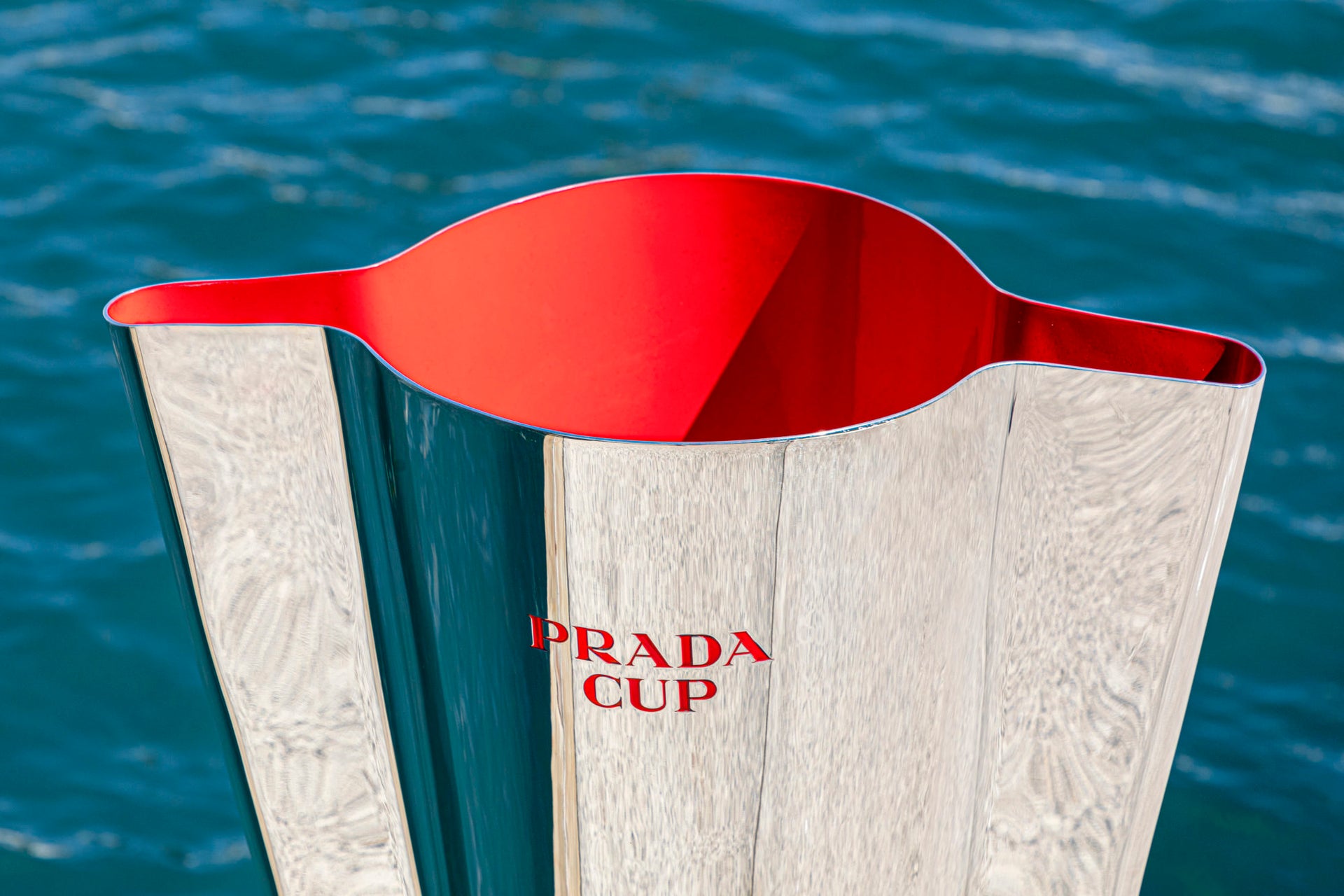
LIVE UPDATES: THE PRADA CUP
LIVE UPDATES: THE PRADA CUP
On-The-Ground Updates and Highlights from Auckland
With the PRADA Cup, the 36th America’s Cup is underway. It’s exciting for our sport and North as three of the four teams competing in this Cup cycle use North Sails, and our NTG family brands Southern Spars, and Future Fibres to power their engine above deck. Our group has also supplied design talent and software to support the teams’ quest for the Cup. And for those of you who want to dress the part, North Sails is an official partner for event branded clothing.
Racing begins January 15th at 1500 NZL time. Make sure to check your time zone if you’re watching remotely. North Sails will also be covering the PRADA Cup on this live blog and on our social channels throughout the next few weeks.
Race Schedule
January 30, 2021, 13:30 GMT
Winners are grinners in the PRADA Cup semi-finals
Luna Rossa PRADA Pirelli sailed confidently onto Course A in a light north-easterly that blew in smoothly from the sea. Two wins for the Italians would take them to the PRADA Cup finals to sail against INEOS TEAM UK, and eliminate American Magic.
COR 36 / Studio Borlenghi
Both races started evenly, and it seemed we finally had a boat race. Luna Rossa PRADA Pirelli had a slight speed advantage and the Spithill/Bruni team was taking nothing for granted. “Let’s keep the foot on the throat,” Spithill told his crew as they tacked to cover, despite a comfortable lead. Classic match-racing; classic Spithill.
But Luna Rossa was also pointing higher. Pointing higher meant fewer tacks, fewer tacks meant less distance sailed, less distance sailed meant two (seemingly) effortless wins. Over race one, Luna Rossa sailed 200 meters less distance and did two fewer tacks – enough for a decisive win.
Race 4, was match point– the do or die moment. Spithill applied pressure in the pre-start and gradually built a lead. Halfway through the race, PATRIOT suffered electronic gremlins with its foiling arms and gave Luna Rossa PRADA Pirelli the crucial fourth win.
Spithill credits the semi-final races for providing the team with valuable preparation for the PRADA Cup finals. “It was an advantage to do that series and we are the stronger for it,” he said. “The boat is going better and better,” Bruni added.
There is definitely new confidence in the Italian team. In the past week, in training sessions with their sailing coaches, they have found an estimated 10 percent improvement. That may include heightened confidence in the team-generated software that gives critical time-on-distance information to the startline and electronic boundaries.
And there was a definite swagger in Spithill’s voice as he crossed the finish line for the second time. “Nice one,” he said. “Now, INEOS boys.”
It was as though he knew they were watching…
📸 COR36 / Studio Borlenghi
January 29, 2021, 17:15 GMT
Luna Rossa PRADA Pirelli Pick Up Two Wins on Day 1 of the Semi-Finals
On day one of the PRADA Cup semi-finals, Luna Rossa PRADA Pirelli came into the start box with a game plan to own the start, and then pulled no punches for their recently repaired opposition, Patriot before leading them to the start line. Yes, it was an aggressive kick-off to the semi-finals of the PRADA Cup, a best-of-seven series, but it did just the trick– American Magic was knocked off their game and didn’t manage to get it back.
Once they were racing, the Italians held their lead and extended it around the eight-leg course, ending on with a generous delta. Then, they did it again in race two. Ouch. If Luna Rossa does that again on race day #2, they will sail straight into the finals to take on INEOS TEAM UK.
📸 COR36 / Studio Borlenghi
But, if we’ve learned anything about this America’s Cup, there is no such thing as a comfortable lead for an AC75 foiling monohull. Among the many new challenges of racing these boats, it’s easy to forget that optimum sail selection is still critical – especially when there’s no option to change sails mid-race. One could say, it’s a bit old school. The day was a day of shifty breezes, and the wind speeds ran up and down between the mid-teens and gusts in the 20s like quick little mice on a treadmill. To manage the shifty wind, Luna Rossa PRADA Pirelli went for a bigger mainsail and jib than its opposition, deciding to sail on the edge rather than being underpowered.
AC75 sails regularly operate in apparent wind speeds ranging from 10 to 70 knots in a race. Their sails can take immense loads, and can flatten, or depower, through that range. On day one of the PRADA Cup Semi-Finals Luna Rossa PRADA Pirelli got it right: go big, get plenty of power and then manage the control over that power. It’s risky, in theory, but it was a no brainer.
The shifty conditions might have offered some passing lanes, but Luna Rossa did not come under attack and had an almost perfect day, although their supporters let out a frantic gasp as Luna Rossa PRADA Pirelli bounced off their foils just after the windward gate in race two. With a comfortable lead, from then on, the team pulled out their training wheels and took the corner safely on both foils.
Going into races three and four we may well see this series wrapped up.
📸 COR 36 / Studio Borlenghi
January 23, 2021, 13:30 GMT
Nerves on a Knifes Edge
Heading into this weekend’s race with race 2 Round Robin 3 the question on everyone’s mind was would this be the race that would send Sir Ben Ainslie direct to the finals of the PRADA Cup with five wins straight, or would it give Jimmy Spithill and Francesco Bruni a big morale boost and a chance to fight again tomorrow.
As if scripted by Spielberg, it started on time. And stopped. And started. The wind shifts were messing with the race committee, there was an issue with the cunningham onboard INEOS TEAM UK, and by the time both boats charged across the line, the race was already a master class in suspense. The race would then go on to become the style of racing we’re all missing– nail-biting. Reflecting now, it was more like a tennis match or Le Mans endurance race, with something exciting happening every five seconds. If you weren’t on the edge of your seat, you were probably asleep.
On the first beat, Luna Rossa PRADA Pirelli attacked, luffing INEOS TEAM UK in a move that is high-drama for displacement boats with foiling arms not sticking out their sides. It worked! INEOS TEAM UK, in the windward position, had to tack away and fell off its foils. Luna Rossa was looking good as they took the lead. In earlier America’s Cup racing, PRADA would have taken off and it would have been game over for INEOS once they fell off their foils, but, like we mentioned earlier, Spithill-Bruni were not going down without a fight.
But the British team was nailing the shifts, so by the time the boats reached the top gate, the lead was nothing (a mere nine seconds!). Italy screamed in on port and tacked on top of UK, but in the shifty conditions, the maneuver was clumsy. The wakes of both boats drew a perfect half-donut in the water around the mark, but INEOS TEAM UK had the inside and the lead.
In a race that would see nine lead changes and more than 50 knots boat speed, the wind shifts put Luna Rossa PRADA Pirelli ahead. No wait, INEOS was ahead. No, PRADA. At gate four, INEOS TEAM UK pulled one of its signature slick moves and escaped– leaving PRADA almost in the dust.
Heading into the finish, Italy had one option left. On the final cross, it dialed down, tacked on to starboard, all with to hope a penalty as UK crossed ahead on port, but the umpire didn’t agree and let Britannia head for the line.
The race was awarded to INEOS TEAM UK. The scriptwriter got promoted. Sir Ben Ainslie and his underdog team remained unbeaten, clinched first place in the finals of the PRADA Cup, and made the last race of the Round Robins a box office hit. The British team will now have nearly three weeks to work on their boat and further develop it, whereas Luna Rossa PRADA Pirelli will have to continue heading to the start line next weekend.
Carlo Borlenghi / America’s Cup
January, 22, 2021, 22:15 GMT
Revised Round Robin Explained
Round Robins 3 and 4 have undergone a major rethink following the withdrawal of a challenger due to last Sunday’s near-sinking.
The revamped schedule canceled racing on Friday and has Luna Rossa Prada Pirelli and INEOS TEAM UK racing each other just once on Saturday and Sunday. That means it’s an all-out, head-to-head for the Brits and the Italians.
In the 2013 America’s Cup, Spithill came back from -2 to beat Team New Zealand and win the race in what’s easily considered the best sporting comeback of all time, but only after Ainslie had come onboard to help reverse the losing streak. In this lead-up to the America’s Cup, Ainslie is so far the comeback kid, after losing the ACWS in December; now, Spithill is running out of runway to overtake him.
No doubt, Spithill has done the math. INEOS TEAM UK has four wins from four starts. One win this weekend will take them straight to the final of the Prada Cup in February, and leave Luna Rossa Prada Pirelli to battle it out for the remaining spot next weekend.
Luna Rossa Prada Pirelli has two points, so if they win both Saturday and Sunday, they will be tied with INEOS TEAM UK at four points. As the winner of the most recent race, Luna Rossa Prada Pirelli, would win the tie and go to the final.
The team that misses the first spot in the finals will go on to compete in the semi-final against American Magic, which starts on Friday 29 January; it is a best-of-seven series. The losing semi-finalist will then pack their bags to go home.
Giles Scott of INEOS TEAM UK, says being the first team to the finals will be an advantage. “Winning the Round Robin buys you time to make more upgrades to the boat,” he says. “It’s going to be significant for whoever wins.”
In other news, regatta director, Iain Murray, has also revamped the racecourses to remove course A where the capsize occurred. From now on, almost all racing will be an extended Course C, a good all-round course with generally flat water. In the future, if an AC75 capsizes, the race will be abandoned.
Round Robins 3 and 4 have undergone a major rethink following the withdrawal of a challenger due to last Sunday’s near-sinking.
The revamped schedule canceled racing on Friday and has Luna Rossa Prada Pirelli and INEOS TEAM UK racing each other just once on Saturday and Sunday. That means it’s an all-out, head-to-head for the Brits and the Italians.
In the 2013 America’s Cup, Spithill came back from -2 to beat Team New Zealand and win the race in what’s easily considered the best sporting comeback of all time, but only after Ainslie had come onboard to help reverse the losing streak. In this lead-up to the America’s Cup, Ainslie is so far the comeback kid, after losing the ACWS in December; now, Spithill is running out of runway to overtake him.
No doubt, Spithill has done the math. INEOS TEAM UK has four wins from four starts. One win this weekend will take them straight to the final of the Prada Cup in February, and leave Luna Rossa Prada Pirelli to battle it out for the remaining spot next weekend.
Luna Rossa Prada Pirelli has two points, so if they win both Saturday and Sunday, they will be tied with INEOS TEAM UK at four points. As the winner of the most recent race, Luna Rossa Prada Pirelli, would win the tie and go to the final.
The team that misses the first spot in the finals will go on to compete in the semi-final against American Magic, which starts on Friday 29 January; it is a best-of-seven series. The losing semi-finalist will then pack their bags to go home.
Giles Scott of INEOS TEAM UK, says being first team to the finals will be an advantage. “Winning the Round Robin buys you time to make more upgrades to the boat,” he says. “It’s going to be significant for whoever wins.”
In other news, regatta director, Iain Murray, has also revamped the racecourses to remove course A where the capsize occurred. From now on, almost all racing will be an extended Course C, a good all-round course with generally flat water. In the future, if an AC75 capsizes, the race will be abandoned.
January 17, 2021, GMT 15:00 GMT
Round Robin Week 1 Recap
If the last three years have been AC75 flight school, then the first two Round Robins have been Top Gun. And school will be adjourned with a foiling monohull clinching the America’s Cup. But to get to graduation, there’s quite a lot of course work ahead.
As soon as the race committee announced Race day 3 (RR2 R 2, 3) would be on Course A, the most exposed course in the Hauraki Gulf, with 20-knot winds against a strong spring tide… drama was bound to follow. And, mid-way into the first race, a major wind shift turned a downwind run into a reach featuring Southern Ocean-style sailing– the race was quickly abandoned just as INEOS TEAM UK took the lead over Luna Rossa PRADA Pirelli.
An hour later, Course A was a happy place after the front passed through, leaving a kindly 16 knots in a choppy sea. Luna Rossa PRADA Pirelli and INEOS TEAM UK lined up again for Race 2 of Round Robin 2. The boats were evenly paced, with the Italians in the lead, although barely playing to Jimmy Spitthill’s favorite match race textbook– crossing INEOS TEAM UK multiple times without tacking on them. By the looks of it, the objective of this PRADA CUP is: sail your own race.
During the race, the lead swapped three times. And, despite the chat about whether Britannia would rule the waves or the waves would rule Britannia, Ainslie was still showing off those handbrake turns that return him direct to his favored side on the course after whipping through the gate. These impressive turns won him the race.
📸 Carlo Borlenghi / America’s Cup
And we thought that was the big news of the day.
Race 3, Round Robin 2: Luna Rossa PRADA Pirelli faced American Magic; in a dramatic leg final leg with American Magic lead ingLuna Rossa PRADA Pirelli, Dean Barker surged into the final gate at full Gs speed. With a 600m lead, Barker tacked and bore away exactly as a gust hit the boat. PATRIOT reared high and crashed down: the first AC75 to capsize during a race.
All crew are safe, and all teams’, including Emirates Team New Zealand’s, deployed their chase boats and powered to keep PATRIOT afloat, but she is badly damaged. The committee awarded the race to Luna Rossa Prada Pirelli.
Reflecting on Round Robins so far is like Goldilocks in reverse: the third day was too windy, the second day was too light, and the first day was just right.
Halfway through the Round Robins, we now no longer know if three boats will appear on the course next Friday. Luna Rossa PRADA Pirelli has two wins to INEOS TEAM UK’s four. Luna Rossa has four days to unpack the first three days of sailing and see if Spithill, the king of AC comebacks, and Bruni can find another gear. INEOS TEAM UK has four days to keep their boat sailing fast. Meanwhile, the race committee may come out with some changes to help prevent AC75 boats from taking off like jumbo jets; after all, we want Super Hornets, not Boeing 787s.
We are glad that the American Magic crew are safe and applaud the quick action from event management, fellow competitors, and local responders who immediately came to help.
The PRADA Cup Round Robin series restarts on January 22, 2021, at 1500 NZL. Standby by for updates as the week unfolds.
January 16, 2021, 15:30 GMT
Beached As
If the America’s Cup is the Formula One of match racing, then day 2 was like rationing the fuel for the race cars and hiding the pit stops. And, even though these boats might look like spaceships, they still need the one thing that all sailboats need: wind.
In such light wind conditions, Luna Rossa Prada Pirelli and INEOS TEAM UK were lucky to be racing only once. Even then, both only just finished (thanks to a shortened course) with wide margins over their opposition, who received a DNF in RR1 R3.
READ MORE
READ MORE
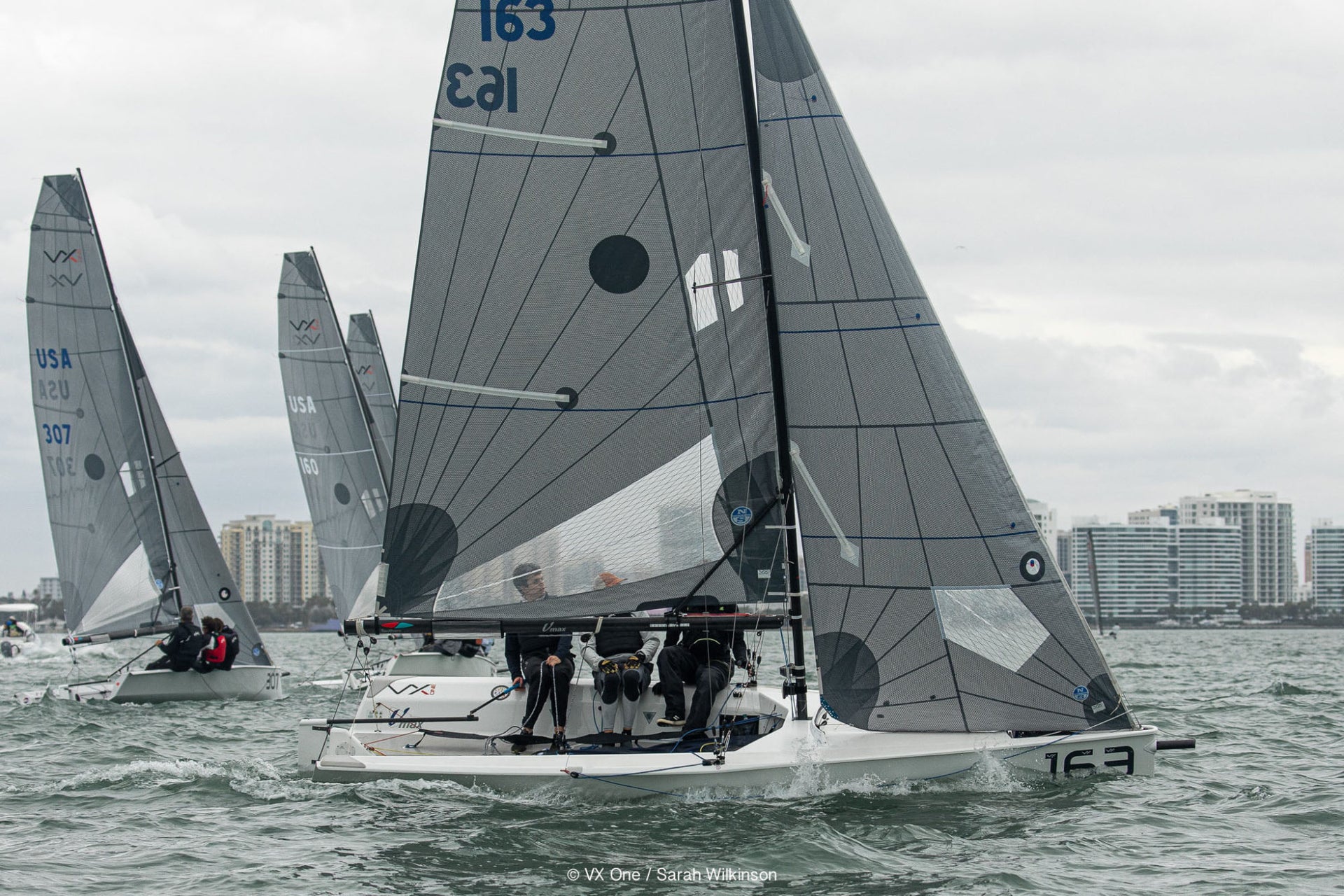
NORTH PODIUM SWEEP AT THE VX ONE WINTER SERIES
PODIUM SWEEP AT THE VX ONE WINTER SERIES
Congratulations Chris Alexander and Team Counterproductive
Twenty-two VX One teams gathered at the Sarasota Sailing Squadron for the first of three Winter Series regattas. The weekend started with practice races on Friday followed by a socially-distant onshore debrief with North experts Austin Powers and Mike Marshall.
The Saturday forecast called for winds in the mid to upper 20s, but when competitors left the dock the velocity was nowhere to be found. Then, just as promised 3 minutes before the first race the wind went from a mild 7 knots to a blustery 25 knots in the span of 3 minutes. Sporty conditions made for hard work upwind, but a sleigh ride down wind with a few teams seeing 20 knots of boat speed on their instruments. The key to this race was the ability to gybe and keep the mast point towards the sky. After 1 race, the wind built even stronger prompting the race committee to postpone ashore for more favorable conditions. Unfortunately, the wind never let up ending the day with only the single race completed.
Sunday blew from the 5-9 knot range with varying conditions as dark clouds passed over the course. All credit to the RC as they were able to run seven races in five hours utilizing the 3 markset bots and just one chase boat. With shifty conditions and medium length courses, every mark rounding came with emphasis on clean boat handling and the ability to separate from the peloton and find clean air.
When all was said and done, Chris Alexander’s “Counterproductive” came away with the victory with North’s own Madeline Gill aboard. Second place was occupied by Doug Clark and Mike Marshall, with third place being “Tudo Bem” being sailed by Michelle Warner, Reed Baldrige, and Austin Powers.
North Sails powered teams finished 1,2,3,5,6,8,9,10*. Full results
SHOP VX ONE SAILS
2021 Winter Series Event #1 winners. 📸 VX One Class/Sarah Wilkinson
READ MORE
READ MORE
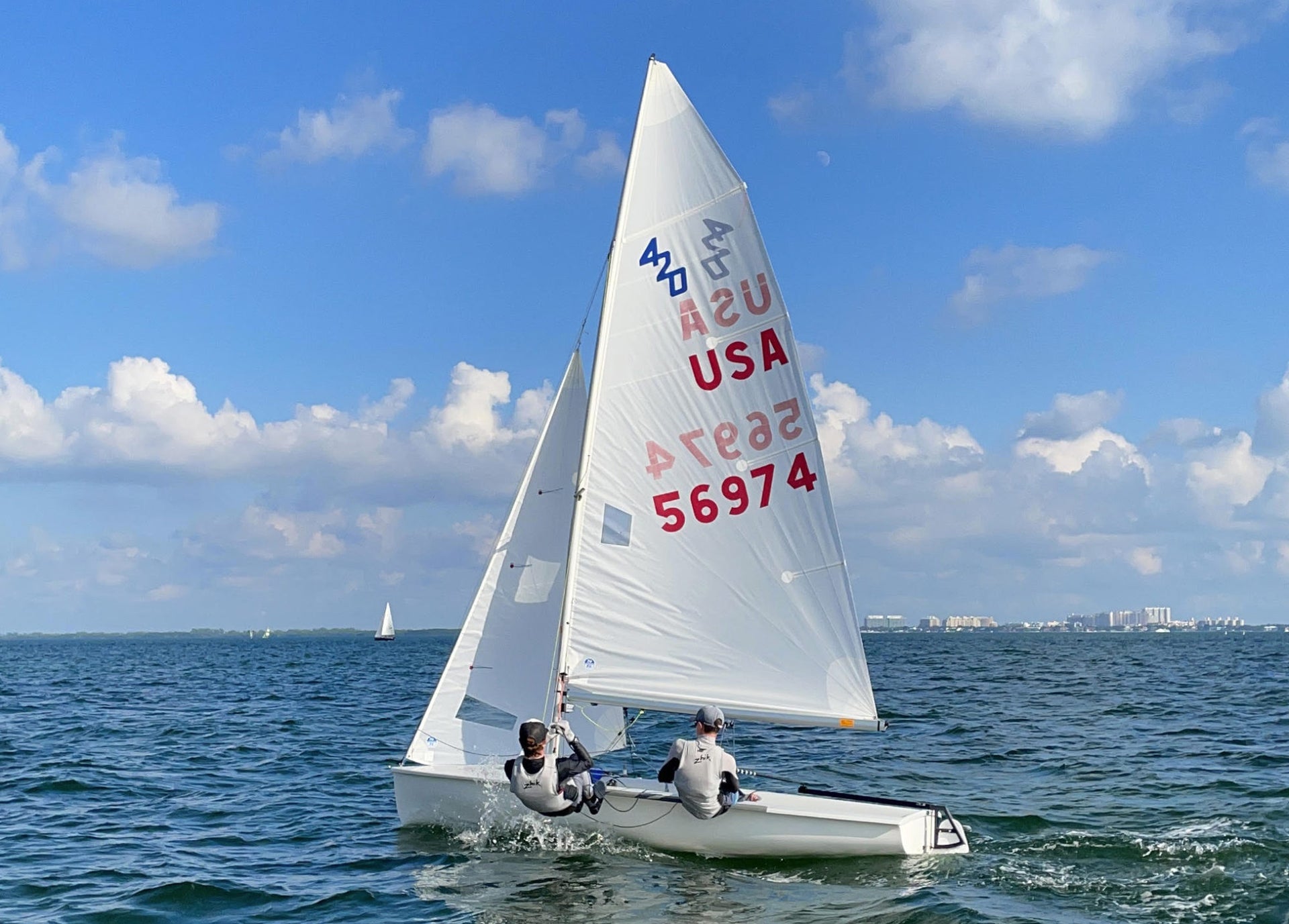
SITZMANN/WOODWORTH I420 NORTH AMERICANS CHAMPIONS
2021 i420 NORTH AMERICANS
Consistency Guaranteed Tommy Sitzmann/Luke Woodworth the Title
Biscayne Bay threw it all at the i420 teams competing for the 2021 North American Championship, with conditions that ranged from a very brisk 12-22 knot first day, to a drifter second day, followed by a marginal trapping final day filled with very fluky shifts and breeze direction changes.
After the dust settled in this eight-race regatta, teams powered by North Sails finished 1,2,5,6,8. North Sails i420 inventory includes three mainsails (M-7, M-9, and M-11), two jibs (J-12 & J-13), and two spinnakers (S1 and S5). These sails are proven winners, and our range offers teams the opportunity to choose the best fit for their particular sailing style. We are happy to help, so please don’t hesitate to reach out for more information.
Defending 2020 North American Champions, brothers Justin and Mitchell Callahan sailed a very consistent event with no result out of the top ten, and (except for a retirement in race 4 due to a rudder pin failure) pushed the eventual 2021 regatta champions Tommy Sitzmann/Luke Woodworth very hard all weekend. In the end, Sitzmann/Woodworth sailed an impressively consistent series themselves, with two bullets and no race finish out of the top 4.
Full results
Pre-launching fun
Tommy Sitzmann/Luke Woodworth, 2021 North American Champions
Justin & Mitchell Callahan, 2nd Place Overall
READ MORE
READ MORE
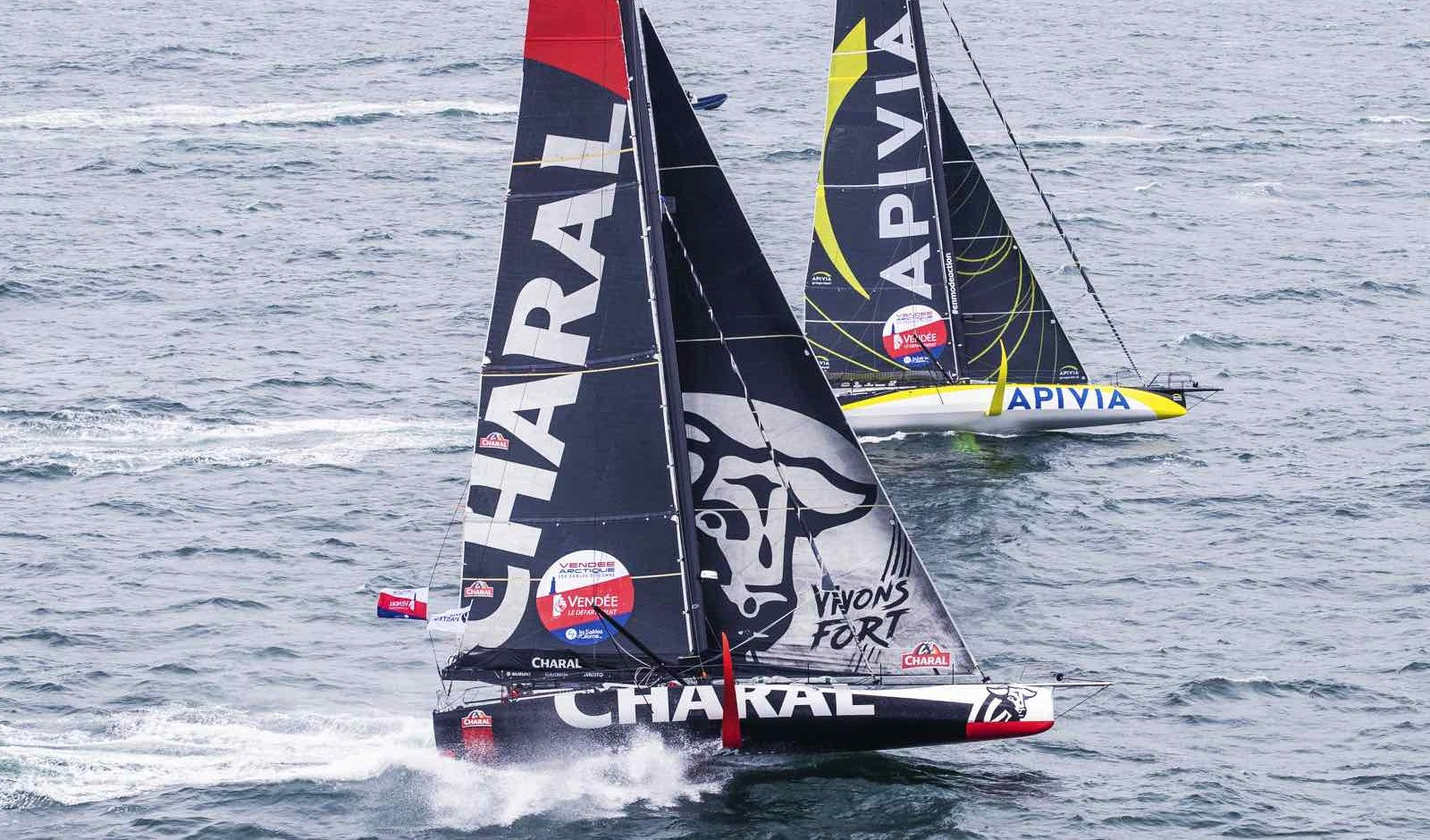
VENDÉE GLOBE VIDEO ARCHIVE
VENDÉE GLOBE VIDEO ARCHIVE
View our 7-Episode Video Series
The Vendée Globe was born in November 1989. It began as a daring challenge launched by a group of 13 sailors, including French navigator Loïck Peyron. For the skippers who participate, the lure of this race outweighs the risk of sailing non-stop, solo, and without assistance around the world. And for fans, we all gather every four years to be captivated by the next generation of IMOCAs, see who will reach the finish line and if we’re lucky, witness the setting of a new speed record.
📸 Andreas Lindlahr
Episode 1: Thus was Born the Vendée Globe
Peyron joins North Sails to lend his voice as our narrator in a six-part video series. He offers his perspective on this legendary race by telling the story of the exceptional skippers who dare take on the challenge, the passion that drives them, and the quest for open-ocean adventure. Beyond, the modern Vendée features the emergence of women and international sailors, the ever-evolving technology of the IMOCA, not to mention the growing enthusiasm amongst spectators and all those who are passionate about this unrivaled competition.
With his impressive list of accomplishments, and collection of offshore miles, Loïck Peyron is regarded as one of the greatest French sailors. He took part in the first edition of the Vendée Globe, where he finished second. In this first episode, he recounts the history of the Vendée Globe through his eyes, from its origins to the present day, a race that has left an indelible mark in people’s minds.
Episode 2: Technology and the Modern IMOCA
The Vendée Globe is a race exclusively reserved for the IMOCA, a 60-foot monohull machine built for racing. The open rule gives the naval architects great freedom of design when imagining the next generation of boats. A class known for technological experimentation, the IMOCA has seen radical innovations such as foils appear in recent years. These appendages, placed on either side of the hull, provide power, reduce drag, and propel the IMOCA to fly above the surface at speeds that were once inconceivable. In two decades, the modern IMOCA has shaved close to 40 days off a circumnavigation. The 2020 race start is on the horizon, and many of us onshore wonder- how fast will these boats fly?
In Episode 2 of our Vendée Globe 2020 video series, French sailor and storyteller Loïck Peyron explores the phenomenal high-tech advances of the IMOCA. Loïck brings us beyond visual appearances and dives deep into the construction and materials, most notably carbon, used in the boats. Today, the IMOCA is lighter, faster, and more reliable. The manufacturing methods of these boats are closer to those of airplanes than to sailboats. “We use the same terms, the same mathematical formulas and the same prediction and simulation tools as those used in aircraft,” stresses Loïck Peyron. Generally speaking, “the speeds of the boats have been multiplied by four in forty years.”
Episode 3: The Spirit of Adventure
In search of a challenge, a record, or an adrenaline rush, the sailors participating in the Vendée Globe are constantly testing their boundaries and pushing their equipment in an attempt to rack up a few miles, hours, days. From them, the open ocean beckons with the taste of adventure and a fascination for the unknown.
“What’s interesting is what you don’t know,” says 61-year old Jean Le Cam, who is taking part in the Vendée Globe for the fifth time. “You are constantly questioning yourself to avoid getting bored.”
More than a race, the Vendée Globe is the ultimate adventure. The skippers hunger to get out of their comfort zone and exceed their limits, and it is their story that fascinates the spectators. This race is one of the rare sporting events where completing the single-handed non-stop round the world race is seen as a remarkable accomplishment in and of itself.
Join our Vendée Globe 2020 narrator Loïck Peyron as he uncovers why the race, even for veterans like Le Cam, is a once in a lifetime adventure.
Episode 4: The Solo Experience
Singlehanded ocean racing is demanding and not for the faint of heart. It is a profession that requires a certain state of mind and a great ability to adapt. “It may not sound like much but being alone changes your state of mind,” says Clarisse Crémer, who is taking part in her first Vendée Globe. In addition to taking on all the roles on board and managing your mind, stress, sleep and the unexpected, you also have to accept that you are not always at 100%,” admits Kevin Escoffier, who is embarking on his first solo circumnavigation after many years as an ocean racing crew member. “If the wind is different from what is expected, you have to deal with it and choose sleep over perfection for a few hours.”
Today, ocean racing has become much more competitive than it was in the early days of the regattas. Modern boats are equipped with an impressive technological arsenal that almost forces skippers to hide inside their boat and think about their strategy all the time.
In this fourth episode, Loïck Peyron looks back at the history of sailors venturing onto the sea. This week’s special guests include Escoffier, Jean Le Cam, and Vendée Globe rookie Clarisse Crémer, who will soon be departing for the solo, non-stop, and without assistance competitive journey around the world.
Episode 5: The Women of the Vendée Globe
A record of six women are included on the 33 skipper roster for the Vendée Globe 2020. This is historic, considering only seven women have participated, and six have ever completed the race since its inception in 1989. This trend is a reflection of what we’re seeing elsewhere in sailing, as more women take on leadership positions and compete at the highest level of the sport.
The IMOCA is a big boat with big gear, and female sailors bring a unique approach to solo sailing. Our fifth episode of the Vendée Globe video series features their story. Loïck Peyron is joined by Clarisse Crémer and Isabelle Joschke to discuss how these six women will approach this great adventure around the world.
Episode 6: The IMOCA Engine Above Deck
Among the 33 skippers who will be advancing tomorrow, Sunday, November 8th, from Sables-d’Olonne at 13:02 CET, 22 are equipped with North Sails 3Di, (17 have a full inventory and 5 have a partial inventory). Onboard their IMOCA, the skippers will cover 40,075 km, which will take up to three months to reach the finish line.
Episode 6 of our Vendée Globe video series drops just in time for the start of this around-the-world adventure. In this episode, we have a masterclass on the sails that power the super-charged IMOCAs. Charal skipper Jérémie Beyou, and PRB skipper Kevin Escoffier join North sail designers Quentin Ponroy and Yann Andrillon on the evolution of sails and what it takes to outfit the latest generation foiler.
Episode 7: As the Fleet Set Off
“We know when we are departing, but we do not know when we will return,” recalls Loïck Peyron in this seventh and last episode of our Vendée Globe video series. Although an absent crowd marked the 9th edition’s departure, emotions ran high on Sunday, November 8th.
Each skipper acknowledges the incredible magnitude of this race: their story, their challenge, their competition, but also the team, sponsor, and the public with whom they will share their adventure that is full of moments of joy or sadness. Because completing the Vendée Globe remains an incredible achievement, the arrival home to the Sables d’Olonne after three months at sea is a moment as emotional as the start.
READ MORE
READ MORE
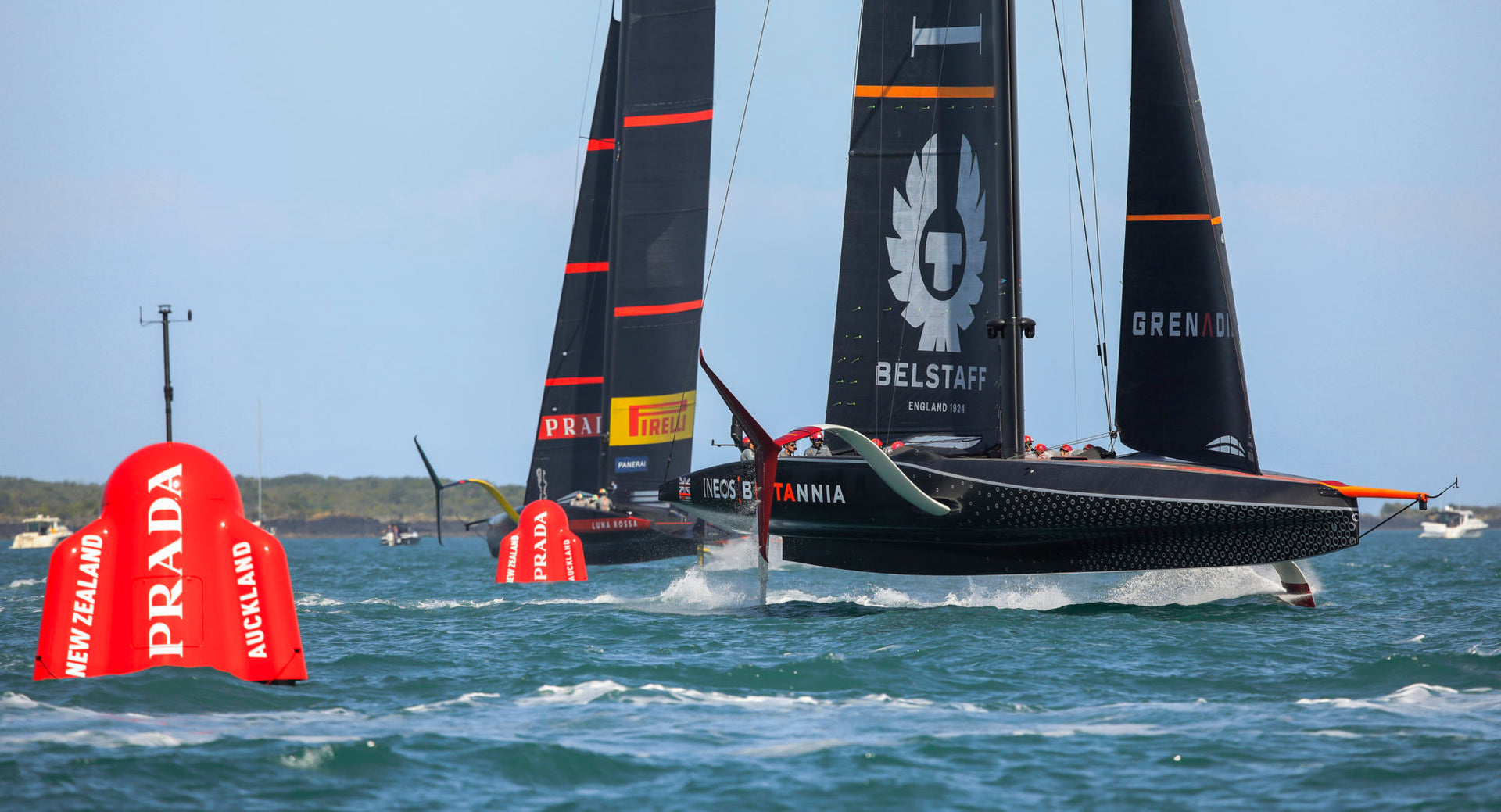
LET'S TALK AMERICA'S CUP
SITTING DOWN WITH THE AMERICA’S CUP COMMENTATING CREW
Shirley Robertson Ken Read and Nathan Outteridge Share Insights Ahead of the Prada Cup
📸 Carlo Borlenghi / America’s Cup
North Sails President Ken Read, Olympic gold medalist and foiling expert Nathan Outteridge, and two-time Olympic gold medalist Shirley Roberston are all part of the commentating team who are helping us follow the 36th America’s Cup. Shirley sat down with Ken and Nathan for a recent episode of her podcast. The team does a deep dive, providing their insider view on the World Series racing to date, and weighing up the strengths of each of the three Challengers. As the Prada Cup draws near, they dissect the performance of the three Challenger teams, looking at where each team may be able to improve and discuss some of the design differences apparent in each of their setups. Listen below and get up to speed on all things America’s Cup.
READ MORE
READ MORE
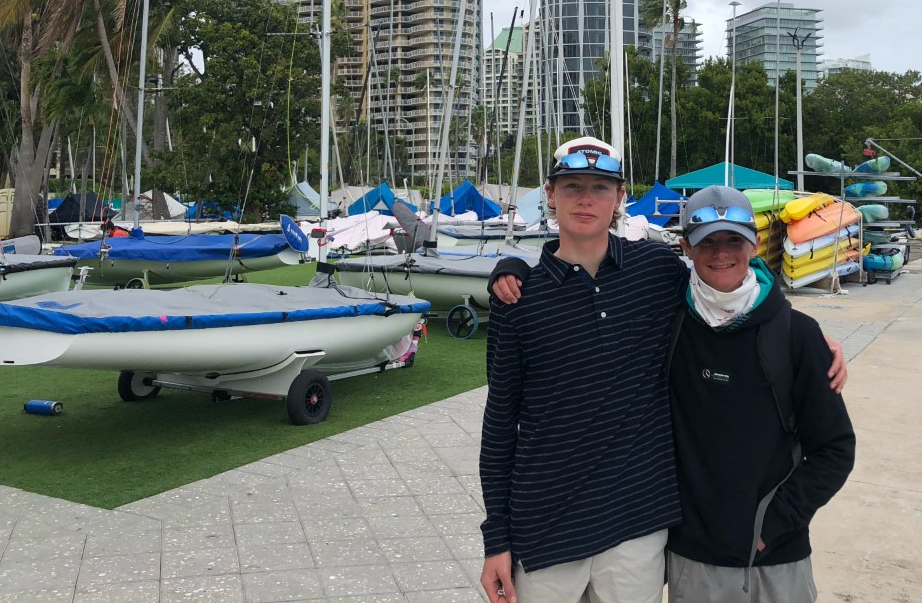
2020 INTERNATIONAL 420 US NATIONALS
2020 INTERNATIONAL 420 US NATIONALS
Congratulations Tommy Sitzmann & Luke Woodworth
The i420 Class doesn’t wait long to crown a National Champion! After a grueling 4-day regatta, with some moderate winds at the beginning and then 3 days of more (and more) wind, congratulations to the 2020 i420 National Championship team of Tommy Sitzmann/Luke Woodworth. According to their parents, these two student-athletes have worked hard, combining top-level sail training along with school and other sports.
Team Outfit Sailing, led by Miami-based coach Lior Lavie, swept the podium, taking the top 3 finish positions. North Sails powered the top three finishers, and the sails worked incredibly well in a varied conditions from marginal trapping, to full-on heavy air.
We continue to study i420 boat sail design and tuning, and we’d love to help you go faster. Please don’t hesitate to contact us with questions!
READ MORE
READ MORE
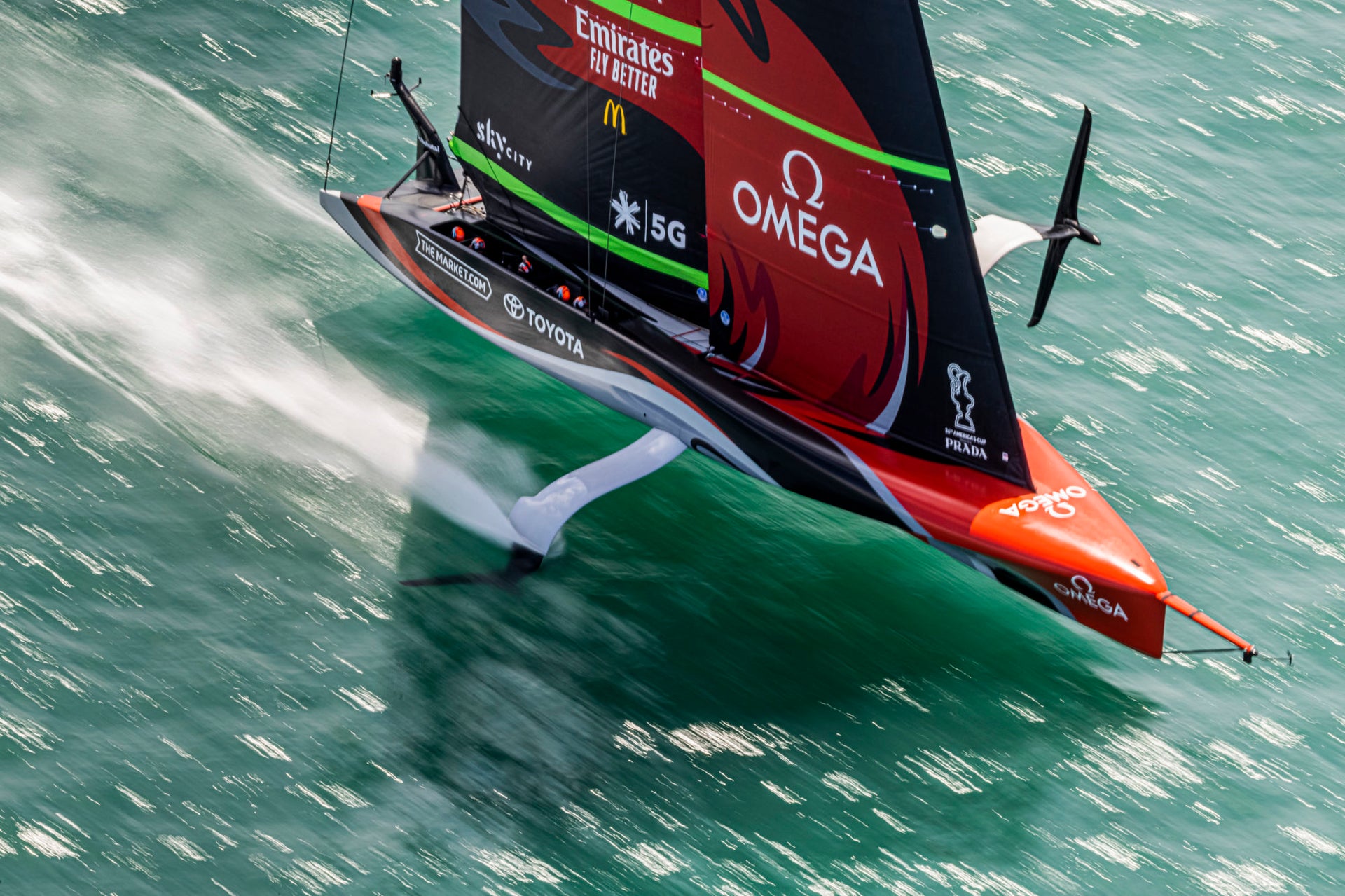
FIRST IMPRESSIONS FROM A SAIL DESIGNER
FIRST IMPRESSIONS FROM A SAIL DESIGNER
What Did JB Braun See During the America’s Cup World Series?
Ask a sail designer what they saw during the America’s Cup World Series, and you won’t be surprised by their answer – sails of course! JB Braun, our Director of Design and Engineering, is a six-time Cup veteran and one of the most respected sail designers in the world. Like many of us around North Sails, he was glued to his screen last week to watch the action unfold on the water in Auckland.
We asked JB to share his unique perspective on this edition of the Cup and how the North-powered engine above deck helps the AC75s fly.
READ MORE
READ MORE
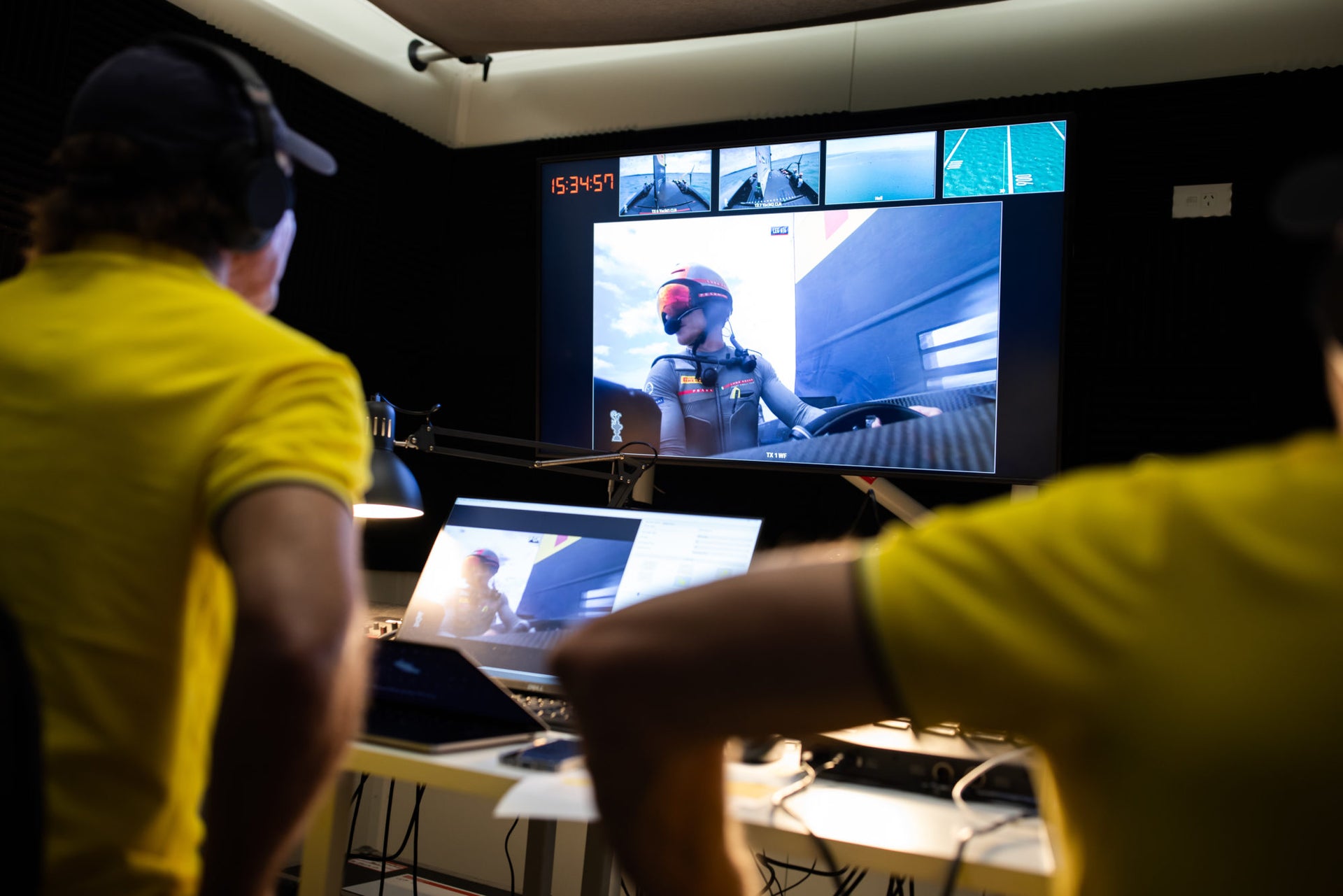
THE BEST SEAT IN THE HOUSE WITH KEN READ
BEST SEAT IN THE HOUSE WITH KEN READ
What Is It Like to Call the AC36 Play-by-Play?
If you’re looking for a sailing expert for your next racing event on TV, you call Ken Read. The former America’s Cup competitor who became an around-the-world skipper with a maxi-yacht speed record, and our current President of North Sails, Read is one of the most respected names in the sport. He is also one of the four voices behind the all-star line up of commentators for the 36th America’s Cup. The 36th America’s Cup is Read’s third stint as a play-by-play commentator, having performed the same role in San Francisco in 2013 and Bermuda in 2017.
We snuck into the broadcast booth to get a behind-the-scenes experience of what most of you are hearing from your screens. Read makes it look easy but the amount of practice and effort to pull off a smooth show is immense. We just tried to stay out of the way!
Let’s go on air with Ken.
READ MORE
READ MORE

WATCHING THE AMERICA'S CUP WITH A LOCAL
WATCHING THE AMERICA’S CUP WITH LOCAL SAILMAKER BEN COSTELLO
In the loft and on the water for Day 1 of racing in Auckland
On Day 1 of the PRADA America’s Cup World Series, we tagged along with Ben Costello— a 21-year veteran sailmaker. Ben is the service manager at our loft in Auckland, New Zealand. He’s the guy who keeps the loft floor in check, and he’s also the man to speak with if you want to hop a ride to watch the AC75s up close and live.
Ben is lucky enough to experience the 36th America’s Cup close to home. In this edition, there’ll be no getting up in the middle of the night like most of us around the world! Yesterday, his day began like any other – dropping the kids off at school, then heading into the loft on Archers Road. But, yesterday had a very special ending. After work, Ben and a few of the North Sails New Zealand crew took the tender and ventured out onto the Hauraki Gulf for the first day of racing.
This is Ben’s story.
READ MORE
READ MORE
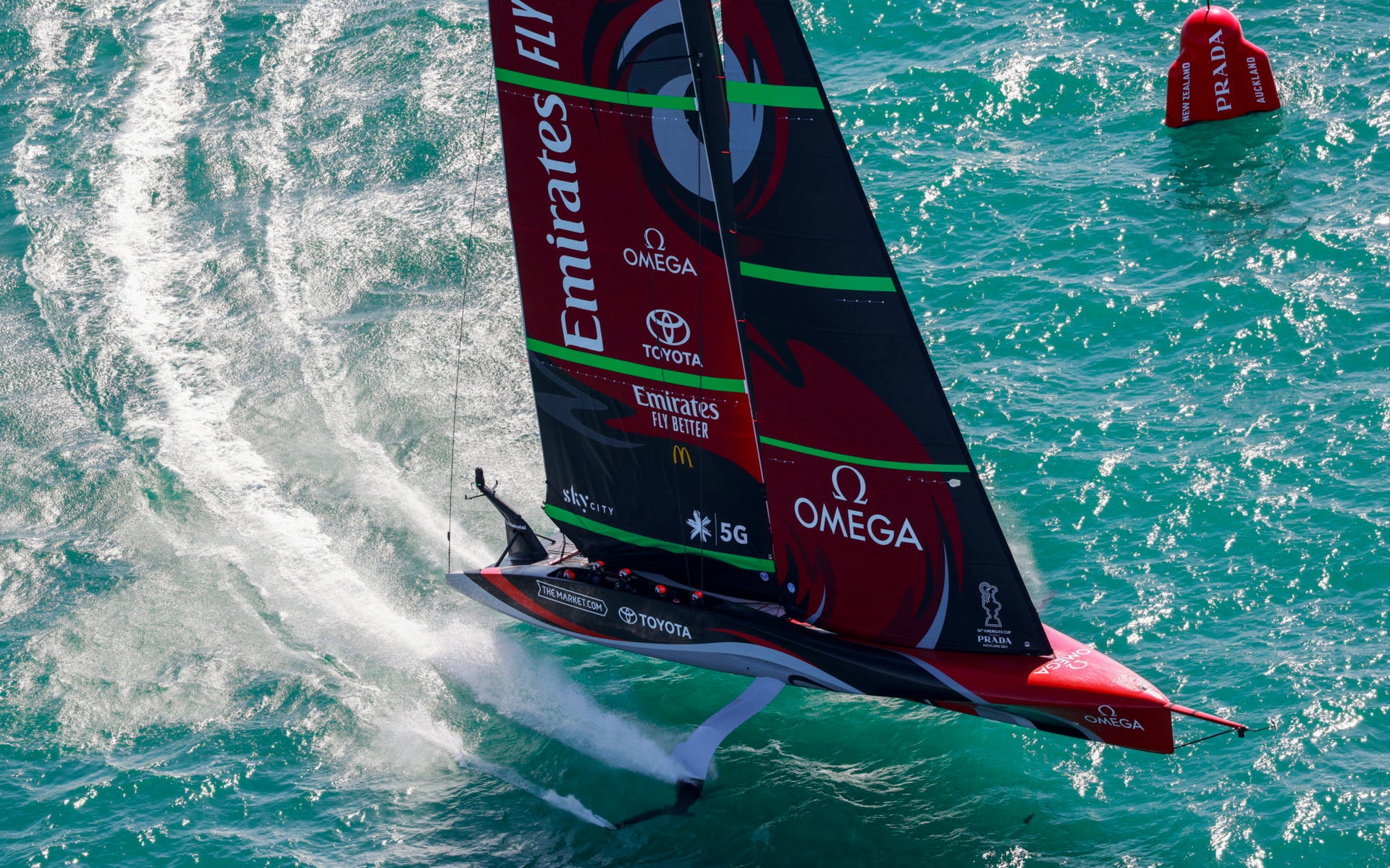
KEN READ JOINS AC36 ALL-STAR LINE UP OF COMMENTATORS
NORTH SAILS PRESIDENT KEN READ JOINS AMERICA’S CUP BROADCAST ALL STAR COMMENTARY LINE UP
Read is a veteran play-by-play expert commentator, having performed the same role in San Francisco and Bermuda.
📸 © COR 36 | Studio Borlenghi
Racing for the 36th America’s Cup with four days of match racing during the PRADA America’s Cup World Series Auckland, New Zealand (Dec 17th- 19th) and the PRADA Christmas Race (Dec 20th).
It will be the only time that all the entrants for the 36th America’s Cup will race against each other and provide a unique opportunity for the teams to assess all their rivals’ strengths and weaknesses. Fans of the America’s Cup all around the world will be able to enjoy coverage via all forms of media on every screen. The primary objective is to make this the most viewed and accessible America’s Cup competition ever.
Set against the picturesque background of the Hauraki Gulf of Auckland, New Zealand, with a new title sponsor, PRADA, and in a dramatic new class of racing yacht, the AC75, the world’s best sailors will race to win the oldest trophy in international sport.
Each AC75 is equipped with ten cameras supplemented by chase boat, helicopter, and drone cameras. Coverage will include the world feed with commentary from Ken Read & Stephen McIvor together with Olympic gold medallists Shirley Robertson and Nathan Outteridge. In addition to the world feed, there will be two dedicated yacht channels and a data feed offered with expert sailing commentary.
Live, highlights and news coverage will be generally available free-to-air in English on www.americascup.com and all the usual official 36th America’s Cup social channels.
YouTube Facebook Instagram Twitter
To ensure both the most accessible and most complete live and highlights coverage from broadcasters covering 195 territories, the 36th America’s Cup is delighted to announce a further range of partnerships with free-to-air and pay networks. View the full viewing details on americascup.com
MEET THE AC36 COMMENTATING TEAM
Ken re-joins the AC36 host broadcast commentary team, having performed the same role in San Francisco and Bermuda. Widely respected, Ken is an America’s Cup competitor, Round-the-world skipper, twice-named American Yachtsman of the year, maxi-yacht record holder, and has won 50 World, North American, and national championships in a variety of cases, with ten of those being World Championship titles. Ken will work alongside Stephen based from the International Broadcast Center (IBC).
Stephen will lead the play-by-play Race call ashore. An experienced sportscaster, he has a wide variety of live sports credits, and will lead the AC36 commentary team for host broadcast, based from the IBC.
Shirley is a double Olympic gold medallist, making it into the history books by becoming the first British woman to win two Olympic gold medals at consecutive games. Named female World sailor of the Year in 2000, appointed an MBC in 2000 and OBE in 2005. She was the regular presenter of CNN Mainsail, which ran for a decade and a half. She will contribute as on-water live commentator during the live race coverage, and assist with other production roles, such as news and feature production.
Nathan helmed Artemis Racing in the 2013 America’s Cup in San Francisco and the 2017 contest in Bermuda. He won gold in the 49er class in the 2012 London Olympics, and silver in Rio, 2016. He brings a rare commentary insight to the complexities of racing high performance, foiling yachts in the America’s Cup.
READ MORE
READ MORE
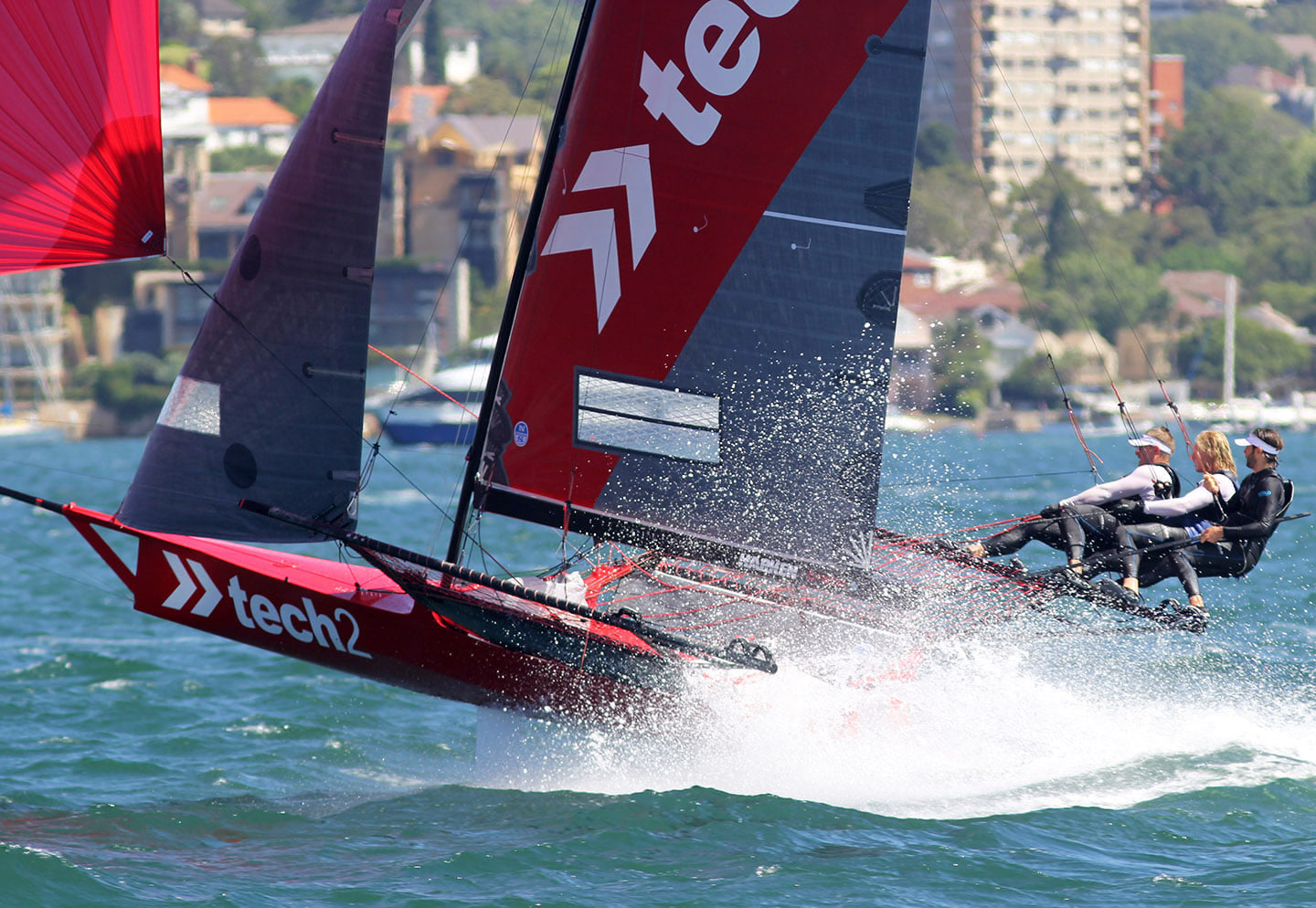
THE BEST OF BOTH WORLDS
THE BEST OF BOTH WORLDS
The Similarities Between Aussie 18s + 100-Footers with Sailor Jack Macartney
📸 Australian 18-Footers League
For Sydney sailor Jack Macartney, it’s all about apparent wind—whether he’s sailing an 18 foot skiff or a 100-footer. “The 100-footer is a giant 18,” he says. And both have very talented fleets, which creates tight racing.
“Australia has almost all of the 100-footers from around the world racing here,” he points out. “They all have their own strengths and weaknesses, so the racing is close. It’s a unique situation having so many supermaxis racing together so frequently. All of the teams are strong and like the 18-footers, the small things make a big difference. Downwind is what they both have most in common.” Because, he repeats, “It’s all about the apparent wind.”
100 footers
The modern 100-footer generates so much horsepower that the sails are flatter and the speeds much higher; “you’re really trying to make the boat hum.” And even with a crew of 20 people, teamwork is crucial. “You might not be hanging off the side, but it’s the same crew dynamic on a 100-footer. You’ve got to have seamless crew work to get through the gear changes and do well.”
There are also differences between the two, of course. On a 100-footer, you can’t steer with your weight or throw in a quick tack or jibe without warning. “Things happen a lot slower and the loads are higher, and you have big, loud winches that handle massive loads. But it’s high-intensity and very close racing.”
📸 Les Voiles de St Barth
Aussie 18s
Jack grew up on Sydney Harbor and started sailing at age 7. His father established the Grand Prix 18 Foot Skiff League seen on television around the world through the 1990s, so Jack and his family traveled all over with the high-performance skiff fleet. “I spent 12 or 13 years following my parents around and growing up with the sailors, so I’ve always had a strong passion for sailing and was immersed in the sport from a young age.
“Growing up on Sydney Harbor, you don’t really get a better opportunity to enjoy sailing than rigging up an 18 on a Sunday and going for a rip around. The 18-Footer class has great people and camaraderie is an important part of it, sharing a beer in the bar afterwards. The class competitors have such a strong mutual respect for one another.”
Jack finished second in the JJ Giltinan in 2013 before turning to bigger boats and the Volvo Ocean Race. When he decided to get back into the 18-Footer class last year, he spoke with sponsor Tech2 and started a program. With only small changes to better fit their crew weight, Jack says he and his team were instantly competitive with the standard North Sails package. “It’s been a great experience and the North team in Sydney. They have always very helpful. If I need anything done, it’s done quickly and done right.”
Tech2 won the 2019 Australian Nationals and club championships, and now Jack and his crew of Charlie Wyatt and Lewis Brake are full speed ahead- with multiple back-to-back wins in the 2020 class club championships over the last month.
“Our boat is going fast, our crew work is at a pretty high level, plus our sail development with North Sails is going very well!”
📸 Australian 18-Footers League
Unbeatable North Sails Technology
Jack hasn’t always sailed with North inventories, but he’s really impressed with 3Di. “3Di is special because of the consistency of shape over a long period of time. It’s robust, stiff, and the sail shapes and longevity of the material is fantastic. In the last two years, I’ve done a lot of racing on the 100-footer Scallywag, including Sydney Hobart, the Caribbean circuit, the Transatlantic, the Fastnet, and the Sydney Hobart again. We are still using the same sails and they are looking pretty good, considering the wear and tear 100’s generate with the extreme loads.”
In the 18’s, Jack says North Sails has created a platform that is hard to beat. “Michael Coxon and his experience set the tone. If you want to campaign at a high level, North Sails gives you a platform to do so. You don’t have to develop your rigs and profiles from scratch, instead you get straight on the pace and have the ability to compete at the front. North Sails has so much history and knowledge in the class, combined with excellent technology. I was able to design our setup to our specifications within the already-fast one design package available.”
📸 Les Voiles de St Barth
Preparation + Fitness
“From what I’ve learned,” Jack says, “you can never prepare enough to sail a 100-footer.” Countless hours are spent developing the boat, the program and getting the crew up to a high level. “Next is understanding the boat and what it needs to perform at 100%.” Though the hours may be a little less, preparation is also key to his 18-Footer program.
Both teams I sail with are driven when it comes to fitness—and team communication. “When we are not on the boat sailing together or in the gym, we’ve got our WhatsApp chat going. We’re always thinking and talking about sailing. It’s important to surround yourself with people you trust, you can get flicked off the boat in a second if something isn’t done properly. I’m lucky to have great teammates.”
📸 Australian 18-Footers League
READ MORE
READ MORE

I HAD SOME TROUBLE WITH MY BOAT
I HAD SOME TROUBLE WITH MY BOAT
PRB Skipper Kévin Escoffier Checked In from Onboard Yes We Cam!
This past weekend Kévin Escoffier jumped into the sea once again, he gave Jean Le Cam a heartfelt farewell and joined a French Navy vessel to commence his journey home.
While still onboard Yes We Cam!, Kévin shared how he’s doing and gave us an insight into why he chose to work with North Sails, his sailmaker of choice, on our new technical clothing, and his thoughts on the range.
Fair winds Kevin – we can’t wait for the debrief. You embody our motto – Go Beyond – and are an example of what can be achieved with 101% performance.
The new North Sails Performance Clothing range launches in Spring 2021. Sign up below to be on the list for early access.
SIGN ME UP!
READ MORE
READ MORE
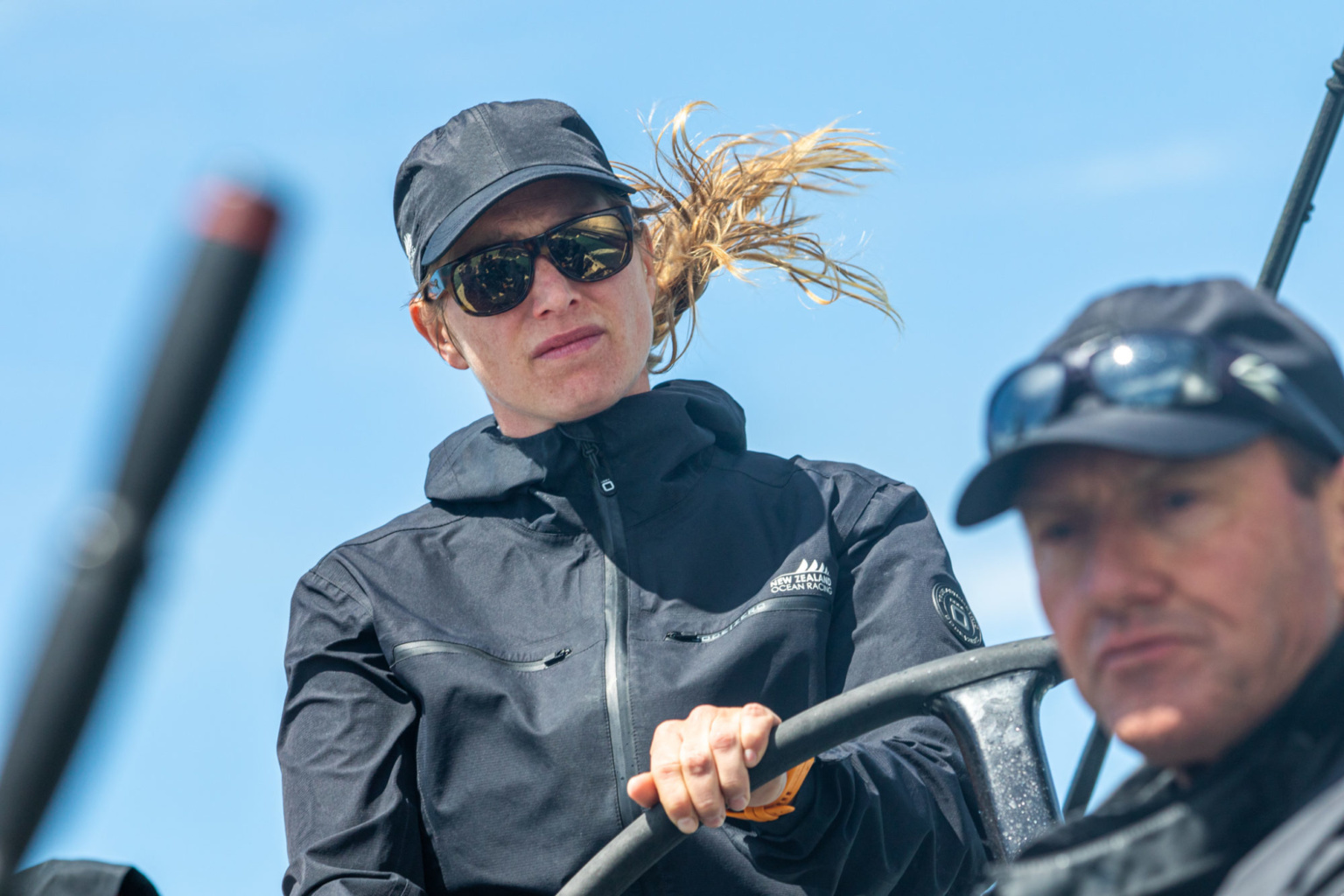
BIANCA COOK’S NEW CHALLENGE LOOKS DIFFERENT THAN EXPECTED
BIANCA COOK’S NEW CHALLENGE LOOKS DIFFERENT THAN EXPECTED
Aspirations Ahead to The Ocean Race in 2022
📸 Georgia Schofield / NZ Ocean Racing
North Sails expert and Auckland native Bianca Cook has logged plenty of ocean miles as part of delivery crews and on the last Volvo Ocean Race with Turn the Tide on Plastic. Now she’s taken on a new challenge: putting together a New Zealand-flagged entry for the 2022 Ocean Race. In November, she and partners Tony Rae and Daryl Wislang launched their V065 for the first time, just in time to win the Coastal Classic—though Cook says a boat without logos wasn’t at all what she envisioned.
“We covered up all the old Turn the Tide> branding with black,” she explains. “It looked very plain and simple.” But logos weren’t necessary to achieve their short-term goals: giving sailors and an onboard reporter the chance to race 120 miles from Auckland to the finish line in Russell, and gain some much-needed visibility. If the boat stayed in the shed, “nobody would know what was happening. We thought, ‘Let’s put the boat in the water and let’s do this.’ So that’s what we did.”
Winning the race was a nice bonus—even though that didn’t look anything like what Cook expected either. Very light conditions meant they didn’t finish until dawn the following day. “It’s actually quite funny, because it’s the biggest boat I’ve ever done the Coastal Classic on, and it’s the longest it’s ever taken me to get there.“
But “a win’s a win,” she says, adding how grateful she was to North Sails and the rest of the marine industry in Auckland for their enthusiastic support. “Without that, we’d still be in the shed.”
: Daryl Wislang, Ryan Houston, Gemma Jones, Bianca Cook, Tony Rae. : Logan Andresen, Aaron Reynolds-Lovegrove, Paige Cook, Thomas Rutter, Bex Gmuer Hornel l📸 Georgia Schofield / NZ Ocean Racing
Raised on stories of “the Blakey days”
Bianca was born the same year Steinlager 2 won the Whitbread Round the World Race, and she grew up in an Auckland shipyard listening to stories about Peter Blake and “that romance of sailing around the world. The whole country got behind it, and knew what was going on.”
She learned to sail with her family on classic boats and then campaigned in Women’s Match Racing until that discipline was eliminated from the Olympics. In 2012, she was just about to fly to Antigua to help deliver the J Class Endeavour to Portugal when the Volvo Ocean Race (VOR) fleet sailed into Auckland. “That’s when my real passion for it grew.”
Working on Superyachts around the world introduced Cook to a lot of VOR sailors. “I was always asking how I could get involved,” she says. “When they brought out the rule to have more females on board, I sent my CV to anyone that would listen.” Nothing quite clicked, though—until a month before the start, when Dee Caffari called.
“I remember seeing Dee for the first time, I was a little bit petrified. As soon as I arrived, the first thing she said to me was, ‘okay, so we’re going to announce that you’re joining the team on Friday, don’t screw it up.’” Until that moment, Cook hadn’t been quite sure what was expected of her. “But when she said that I was like, ‘Oh yeah, I’m actually on the team. Okay.’”
Sailing around the world with Dee was incredible, Cook says. “You can be in a situation where you’re just over it or tired or hungry, not too much left in the tank. And she always has something to say that will give you that little bit of motivation to keep going.” But sailing into Auckland on a boat that represented “the United Nations” didn’t grab her fellow New Zealanders the same way that having their own boat to root for had in previous races. “As a country, we haven’t had a team to really get excited about and really invest Kiwi pride since 2012, so New Zealand’s love affair with the race has kind of gone away.”
For the rest of the race, Cook began to imagine sailing into Auckland again as part of a New Zealand-flagged crew. “I got talking to Tony Rae, and he’d been trying to get a New Zealand team in the race for the last two cycles. When I heard that, I thought, ‘Oh, okay, well then why don’t we actually try and make this happen?’”
Sailmaking beckons
After the VOR, a new opportunity appeared in Auckland: joining North Sails as a salesman. “I jumped at that,” she says. Though Cook didn’t know much about sailmaking, she soon recognized the significant overlaps between building 3Di sails and modern boatbuilding. “Building sails, you lay carbon down in a certain way over a mold—exactly the same as you do in boatbuilding.”
Cook continues to be impressed by North Sails emphasis on constant improvement. “It’s fantastic the way that the designers are always trying to make sails faster. They’ve got the technology to just keep pushing.”
She also appreciates the way America’s Cup technology is starting to trickle down to Auckland fleets like the Young 88s. “We don’t have double-skin mainsails yet, but you never know! The level of design work that goes into grand prix sails is exactly the same for what you’ll be selling to your local guy who’s just going cruising around the local area. It’s fantastic to see that amount of time and effort going into any job.”
📸 Georgia Schofield / NZ Ocean Racing
The Ocean Race journey begins
Cook and her partners bought the old Turn the Tide on Plastic in 2019. It was a big commitment, but as Cook puts it, ”We’ve got to have a boat, otherwise we’re not in it. And so we bit the bullet and got it down here to New Zealand.” The goal was to get the boat in the water and “get as many young people on the boat as we could.” 2020 had other plans, though. “We were actually due to launch the day that we went into a nationwide lockdown.” Instead the boat stayed in a shed until the following November. Looking back, “I’m not really sure if was the smartest thing to do,” confesses Cook.
But her enthusiasm is infectious, and she’s not the only New Zealander to remember the previous races. “I’ve gone to give talks and people go, Oh, the Ocean Race. Is that the same as the Whitbread?” She laughs. “Here in New Zealand, the last time we had a boat in the race was Camper in 2011/2012. Almost ten years ago now!”
Sponsor search
Cook thinks they’ll have to look outside New Zealand to get to the start line, but for now they’re focusing on building local support and getting out sailing as much as possible. The lockdown has enabled them to tap into some great ocean racers who are currently stuck in Auckland. “We’ve had all these incredible sailors onboard, coaching the younger guys. But also going, ‘Whoa, I never thought I’d step back on one of these boats again!’” They’re also training onboard reporters. “So we’re getting footage, but it’s also giving them an opportunity to experience it. These guys haven’t necessarily been on a Volvo 65 before, or even gone offshore.”
📸 Lissa Photography / 2020 Coastal Classic
First female NZ skipper?
The New Zealand media has jumped on the idea of Cook as skipper; she’d be the first female Ocean Race skipper, ever. ““Not so fast” , says Cook. “I’ve always said that I’ll do absolutely everything I can to get that boat on the start line, but how the team looks could be completely different.” Her ambition remains consistent: to have a Kiwi flagged boat on the start line in 2022. Right now, the priority is to give as many Kiwi sailors as possible the experience of racing a VO65. “When we get closer, we’ll start worrying about proper trials. At the moment, anytime we can get out on the water, we’re just making the most of it.”
Dreaming of a new wardrobe
Cook and team have modified an old Maxi kite into a training version of the new A4 specified for The Ocean Race, but Cook’s already anticipating all the improvements North designers will make to the entire inventory. “It’d be interesting to see the difference in the sails that we have now, and the sails for the next race.” Meanwhile, the group is planning a sailing tour of New Zealand in 2021 and hoping to get a different group of sailors onboard for each leg. “If we manage to inspire some kids down at the bottom of South Island to get involved in sailing, then I feel like we’ve achieved something pretty great.”
📸 Georgia Schofield / NZ Ocean Racing
READ MORE
READ MORE

KÉVIN ESCOFFIER SAFE AFTER SUCCESSFUL RESCUE MISSION
KÉVIN ESCOFFIER SAFE AFTER SUCCESSFUL RESCUE MISSION
PRB Skipper Onboard Yes We Cam! in an Amazing Display of Seamanship
📸 Team PRB
All of us in the North Sails family as well as the rest of the sailing world have breathed a collective sigh of relief upon hearing of the rescue of a healthy Kévin Escoffier from his life raft. To Jean Le Cam, we can’t fathom the heroic seamanship needed to pull off this successful retrieval in such rough conditions. And to the rest of the skippers who lent their support, you are an example of the code of seamen – that safety for yourself, your boat, and all fellow sailors comes long before any race or result. We bid safe passage to the fleet of exceptionally brave adventurers who are competing in the hardest competition on earth, The Vendée Globe.
Just yesterday we were cheering that Escoffier had reached 3rd place after a successful 24-hour run. Our excitement quickly turned to anticipation upon learning that Escoffier was forced to make the heartbreaking decision to activate his distress beacon and take to his life raft about 840 miles SW of Cape Town, South Africa. The news especially hit us hard as Escoffier is a long-time client, a close friend to many within North Sails, and more recently, a key member of our testing team for the North Sails Performance foul weather gear.
Vendée Race Control immediately alerted the nearest competitor Le Cam to divert to Escoffier’s aid. A hugely experienced five-time Vendée competitor, Le Cam was diverted to Escoffier’s aid. Three other competitors were also called to the zone to support, which resulted in a successful rescue operation. Mercifully Le Cam was successful in locating Escoffier and he climbed aboard Le Cam’s boat Yes We Cam!, in the early hours of this morning having spent 11 hours in the life raft.
It’s an interesting turn of fate, in the Vendée Globe 2008-2009 the former skipper of PRB, Vincent Riou, rescued Le Cam from his capsized IMOCA 60 200 miles west of Cape Horn. Just proving that one good turn really does deserve another!
A huge congratulations to both Escoffier and Le Cam on a phenomenal display of seamanship. Also, our utmost respect and thanks go to Vendée Race Control and the PRB Team for their swift and professional coordination of the situation that resulted in a positive outcome.
We look forward to beers on the dock with Escoffier a little earlier than initially planned – but damn they’ll taste sweet.
Click here for a full report.
READ MORE
READ MORE

3Di RAW UPGRADES LOCAL J/109 SAILING TEAM
3Di RAW UPGRADES J/109 CHIMAERA‘s SAILING TEAM
Top-Notch Service and Expertise Yield Success
📸 Brendan Fogarty / photogroup.ie
Andrew Craig purchased a J/109 in late 2016 and made a plan with his friend and North Sails expert Maurice’ Prof’ O’Connell based in Ireland to optimize his inventory. Over the next two years, the two put together a plan for a fresh new inventory of 3Di RAW upwind sails and spinnakers to help propel Chimaera to success.
Why a J/109? Most importantly, It’s an excellent platform for racing in Ireland. Prof’s brother Aidan is a fan, so he was able to talk Andrew into it.
Chimaera’s first event was a windward/leeward series, so the first sail built was a new asymmetrical spinnaker. “It was an immediate success,” Andrew says. “We were able to run deeper than any other boats out there. My newfound competitors started asking questions because that’s how fast we were DDW.”
Next, Andrew upgraded to a 3Di RAW mainsail and an NPC club racing A2. “By the end of that first season, I had a good suit of racing sails, and that brought on the desire to be more competitive,” he explains. “We were sailing well, and we were ready to start traveling to events outside of Ireland.”
📸 Marc Turner / CCC
A Program Built for Speed
By the end of 2018, Andrew had acquired a complete “battle stock” of sails: a new 3Di RAW J1, J2, J3, mainsail, and an A4, and A5. “That stock we keep rolled in my sail loft, separate from our weeknight club racing. It’s important to have the best sails for the main events.”
In 2019, Chimaera won the six-race Scottish Series, one of the most significant keelboat events in the UK, by a full eight points. They also earned Boat of the Week honors.
“This year, we planned to defend our crown,” Andrew says, “and of course, everything got canceled! We had two days of club racing in September– which we won. We are happy to have that, at least!”
Andrew says 3Di changed the power, feel, and handling of the boat. “Our trimmers found it instantly easier to trim the 3Di sails. It became easier to respond to pressure changes. From what I’ve seen, I can sail higher, for longer.”
Maintaining the right heel angle is essential on the J/109, and Andrew says that’s easier now that he and the trimmers are working together better. “Settling into a groove, so your helm is neutral is what you want, and we’ve been able to achieve that.”
Lightweight + Shape Holding
He was also impressed with the shape-holding abilities of 3Di over four seasons of hard use. “My J2 was my predominant sail, and she’s got great shape–still. The firmness, coupled with the trim settings, allow us to reach a higher point of sail, and we could feel that it was more stable. It’s nice to know that I can hang in situations where I am fighting for a lane or need to create a new one, with less interference from the helm, allowing the crew to work the jib.”
He also noticed how light the sails were compared to his old suit. “My mainsail is just 15 kilos, and for having a mast that is 45 feet tall, that’s pretty great. I packed up the sail bag and was prepared to lift some considerable weight, but realized right away it was significantly lighter than I would expect. Carrying less weight and being able to have options is great. I believe that 3Di has the one-up on any sail made of laminated materials.”
📸 Brendan Fogarty / photogroup.ie
Working with the North Sails Network
Andrew says the service he’s received from Prof and the North Sails network has been exceptional. Just a couple of weeks before the first event of the Scottish Series, Andrew requested a J3 to cope with Scotland’s windy conditions. “Prof turned that around very quickly. It was delivered to the event location just in time, with only two weeks’ notice. Prof has not only worked with me on sails, but he’s also helped me optimize everything from lines to halyards—everything we can do to make the boat handle fast and well. Having his support helped guide our way to success.”
Prof is a regular part of the crew as well, serving as an onboard coach and tactician. “When Prof joins us, he heightens our energy levels, which reminds us of all the things we need to focus on. Sailing with A-sails is a new thing for me, so it has taken some time to get used to. Now I am very confident, and we are fast on all points of sail. What Prof has done to help us achieve our goals.”
Prof has also helped grow the J/109 class in Ireland, Andrew adds. “North Sails have a close association with the class, running clinics, coaching sessions, and debriefs after racing. It’s a great way to help raise the bar in the local competition.”
Chimaera and her sails are stored away for the winter, but Andrew’s already looking forward to 2021. “The Dun Laoghaire Regatta has a three day one design series, followed by IRC racing. We plan to be there!”
The Value of Sail Care + Service
When Andrew isn’t racing, he keeps his sails dry and clean. After each season, he is diligent about getting them serviced. “It’s important to stay on top of that. It’s a fraction of the cost when you are considering the cost of new sails. It’s absolutely worth it to have your gear regularly inspected by your sailmaker, and keep an eye on things to make sure you are doing your part to maintain your investment.”
📸 Brendan Fogarty / photogroup.ie
READ MORE
READ MORE

THE AMERICA'S CUP HEATS UP IN AUCKLAND
THE AMERICA’S CUP HEATS UP IN AUCKLAND
Key Developments from an Evening with Burns Fallow
📸 Emirates Team New Zealand
Time is closing in on the 36th America’s Cup which commences in Auckland on the 6th of March 2021, and with the recent launch of Emirates Team New Zealand’s (ETNZ) second boat, competition is heating up between the teams. North Sails and ETNZ were delighted to host an evening of discussions at the ETNZ base, kicked off by an exclusive virtual video from North Sails President, Ken Read in Newport, Rhode Island, announcing his plans to come to New Zealand to commentate for the duration of the America’s Cup.
North Sails Auckland General Manager, Richard Bicknell, introduced North Sails designer and speaker for the evening, Burns Fallow. As one of the most sought-after sail designers in the world and a colleague of Bicknell’s for 20 years, Fallow started working for North Sails in 1988 and has since been heavily involved in the Whitbread, Volvo Ocean Race, and the America’s Cup, with this cycle marking his sixth Cup; a special milestone to reach.
From Grand Prix to Superyacht sails, Fallow holds an international presence in sailmaking and takes great pride in designing sails for more local boats as well. He also spent time mentoring younger designers across the globe, namely Gautier Sergent in 1999 who is now the chief sail designer for INEOS TEAM UK.
We have compiled our key takeaways from the in-depth discussions had by Burns Fallow and teammate Rob Salthouse:
1. The AC75’s are the fastest monohulls ever to sail upwind:
Reaching speeds of 20 knots velocity made good (VMG) upwind, the AC75 marks the evolution of sailing over the last 20 years. No other sport in the world has seen improvement like this over such a short time. “The AC75 Class Rule is the bible that we have to abide by in terms of specifications of the yacht,’’ Fallow explains. “The rules can sometimes get in the way of great ideas, but in this class, unlike the last couple of Cup cycles, it has been left reasonably ‘open-ended’ to let different teams express themselves from a design point of view.’’
2. Why do we want boats to fly?
It is a reduction of drag. Carrying a hull through the water when sailing upwind or downwind, the boat is going to travel slower than if you can just rely on the foils to balance all of the aero-forces.
📸 Emirates Team New Zealand
3. Key Design Areas:
Hull: With an overall length of 75-feet (including bowsprit), the four teams weigh within 1 kg of each other. The foils and cant-axis are fixed, and so is the displacement. All of these factors are tightly policed.
Foil Wings: Sitting at the bottom of the foil, the wings are an active area of development and a highly critical part of the design process. The tab on the back of the foils is controlled manually to make the boat fly high or low.
Rudder: The AC75’s have a single rudder on the centerline with a horizontal wing (elevator) at the back. The elevator is an actively controlled surface and thus has limits in width, height, and length to help maintain flight.
Rigs: The rigs are only just longer than the boat at 26.5m compared with the AC72, which had a 40m mast length. The AC72 and AC75 weigh about the same with a similar righting moment, but in place of a keel, the AC75 has two foil arms, so a taller mast would affect the stability of the boat when off the foil. This can make the transition period tricky when trying to get the boat to take off, so requires a lot of management.
Double-skin Mainsail: Large D-Section spar with a pair of mainsails hoisted together to retain traditional concepts of sail design. The double-skin reduces drag by stopping the sails flapping through the tacks and is also very stable through manoeuvers.
4. Racecourse:
Races will start later in the day (~16:00 NZDT) to increase the chances of a good sea breeze developing and also working better for coverage around the world. The pre-start will be between 2.5-3 minutes, starting upwind with a windward leg followed by two or three laps to the finish. The typical race length is expected to be approximately 25 mins.
5. All North Sails teams are using full 3Di inventories:
Fallow comments, “It gives me a huge amount of flexibility as to where I want to put tapes. If I’ve got a problem area in a sail which I spot in the simulations, I can put some tape there. The makeup of the fabric is the same as what we might use for any boats with 3Di sails. The primary difference is the percentage of carbon we might put in relation to the Dyneema from a longevity/toughness point of view. But our sails are built on the same machines, same molds, same design software.’’
6. All the operations and functions of the foils are manual:
There is no ‘follow-the-dot’. Controlling the foils lies all in the hands of the guys onboard who are doing other jobs as well. They’ve got a lot on!
Looking ahead, the four teams have a series of match races over 2-3 days in December (Christmas Cup), followed by the PRADA Cup in January to determine which of the Challenger teams will take on the defender Emirates Team New Zealand. To win the America’s Cup, first, you have to win the PRADA Cup. So now it’s time to sit tight and wait to find out who will take home the oldest trophy in international sport.
📸 Emirates Team New Zealand
READ MORE
READ MORE
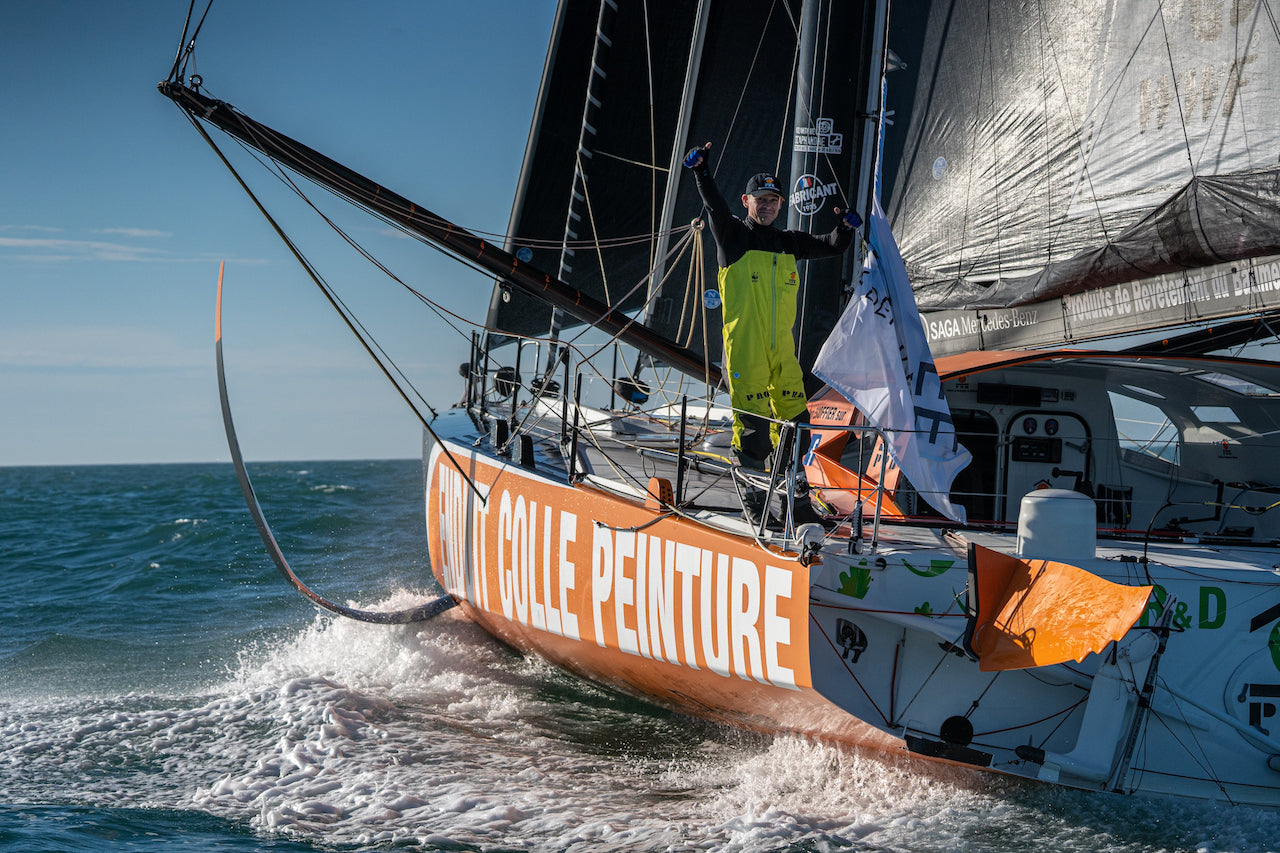
VENDÉE GLOBE 2020 VIDEO SERIES: EPISODE 7
AS THE FLEET SET OFF
Vendée Globe 2020 – Episode 7
“We know when we are departing, but we do not know when we will return,” recalls Loïck Peyron in this seventh and last episode of our Vendée Globe video series. Although an absent crowd marked the 9th edition’s departure, emotions ran high on Sunday, November 8th.
Each skipper acknowledges the incredible magnitude of this race: their story, their challenge, their competition, but also the team, sponsor, and the public with whom they will share their adventure that is full of moments of joy or sadness. Because completing the Vendée Globe remains an incredible achievement, the arrival home to the Sables d’Olonne after three months at sea is a moment as emotional as the start.
READ MORE
READ MORE

CRACKER GAINS PERFORMANCE BOOST WITH 3Di RAW
CRACKER GAINS PERFORMANCE BOOST WITH 3Di RAW 330
Local Sailing Team Embraces the Power of their New Wardrobe
📸 Robert Bateman Photography
Denis Byrne’s Trapper T250, Cracker, was built in the early 1980s in England. Not only is she nearly 40 years old, but she’s also the smallest boat on the starting line in the local racing fleet at the Royal Cork Yacht Club in Ireland. Now she’s winning races, thanks to her new sail inventory.
It all started in 2018 when Denis decided to upgrade his sails to be more competitive. “Denis was looking for high-performance club racing sails, said North Sail expert Nigel Young. “He bought the first part of his inventory in January of 2018 and has had nothing but great results.” In 2019, Cracker won the Royal Cork Yacht Club’s club boat of the year award.
“It is unusual for a small boat like Cracker to win such an award in the biggest yacht club in the country,” said a proud Denis. In 2020 with the same inventory, he’s continued his winning streak. Cracker took her class first and the overall win in the annual Cove to Blackrock Race, winning the coveted Moonduster trophy.
Winning the Moonduster trophy against much bigger competition was a real thrill for Denis. “It’s a lovely trophy dating back 20-some years. The Moonduster is arguably the most famous boat built in Cork Harbor and won the Round Ireland race a number of times, setting the official record at the time. It’s special to win a trophy like this.”
Denis is the third owner of Cracker and hasn’t made any changes to the hull—though the boat did come with a brand new mast. “She’s still the same color; all I’ve done is add new sails. The entire boat concept is modern for its age. It is quite different from many of the other boats built in the 80s. It’s well suited for IRC racing.”
Cracker’s Winning Inventory
Cracker is equipped with a 3Di RAW 330 mainsail, 145% #1 genoa, a #3 blade headsail with battens, and a Contender SK75 symmetrical spinnaker.
Denis is pleased with how much of an impact his new 3Di RAW 145% genoa makes. “When the boat gets going, especially in relatively flat water and breeze– wow, is she powerful! Even when the breeze picks up into the 15-17 knot range, we can still carry it with confidence, and the boat goes like a train. It is effortless to trim. The larger boats would step down to a #2, and we could easily carry our #1 longer and still be competitive.”
Cracker’s new mainsail has excellent shape. Denis adds, “We took Nigel’s recommendation to move to a slightly bigger roach and larger sail. The shape is just beautiful. It brought up the handicap, but that paid off in terms of overall boat speed without question.”
“Comparing 3Di to standard sail materials, 3Di is easier to trim. Before, I found it tricky to visualize the sail’s shape at the top-end when trying to distinguish the draft and how that relates best with sail controls, like the cunningham. Now it is much easier to see, and the sail looks cleaner. It’s easier to tell what you need more of, whether it’s vang, cunningham, outhaul, etc. What I like about 3Di is that it’s one solid piece with no joints. The sail is smooth and clean, and as a result, easier to trim.”
Denis says the sails make sailing easier, and he also loves the fact that they are easy to maintain. “They aren’t heavy. They can take a lot of punishment. They are durable. I was pleasantly surprised when the mainsail arrived; it was very light.”
“Nigel designed us a symmetrical spinnaker that was slightly larger than the one that came with the boat,” Denis explains. “It’s a general all-purpose and really pulls us forward and reaches effectively. I didn’t want to carry multiple kites because the boat is so small, and we don’t have a large crew for sail changes. The AP symmetrical Nigel provided us is all we’ve needed, all season long.”
Cracker’s new symmetrical spinnaker in North Design Suite
The Value of North Sails Expertise
“Nigel has sailed with us quite a bit. He showed us how to trim and how to adjust our settings according to condition changes. It wasn’t just about selling me sails and me going on my way. He has worked with us during regattas and in between, helping us fine-tune and better our maneuvers. Techniques for sailing with less crew and even better hoisting methods, dropping and packing the spinnaker. It’s the entire package of support we’ve received, not just sails.”
With no previous sailmaker experience, Denis was impressed with how things came to be. “Nigel was straightforward. He sold me a product that was right for my boat. He didn’t try to oversell me on a different product; he said, ‘this sail would be the right fit for your size boat and the loads on the rig.’ I am thrilled with my decision, and it’s nice to know Nigel had my best interest at heart. I am looking forward to a new race season in 2021.”
The Crew
Cracker typically sails with four crew, though in under 12 knots, Denis says three is fine. “Five would be a lot. Any more than five would be a crowd! We carry just what we need, and we get around the corners just fine.” Cracker’s crew is composed of a variety of experience levels. “What’s great is that everyone can understand what Nigel is saying,” says Denis. “And he was happy to spend the time, not just with the more experienced crew members, but with everyone, providing tips and tricks to make things flow. Many people you meet in the sailing world have jargon or terminology that can go right over your head if you are not used to it. Nigel speaks a language we can all understand. Nothing flowery; how he describes things makes it easy for everyone to pick up on.”
From us at North Sails, we wish Denis and the Cracker team the best of luck!
READ MORE
READ MORE

VENDÉE GLOBE 2020 VIDEO SERIES: EPISODE 6
THE IMOCA ENGINE ABOVE DECK
Vendée Globe 2020 – Episode 6
Among the 33 skippers who will be advancing tomorrow, Sunday, November 8th, from Sables-d’Olonne at 13:02 CET, 22 are equipped with North Sails 3Di, (17 have a full inventory and 5 have a partial inventory). Onboard their IMOCA, the skippers will cover 40,075 km, which will take up to three months to reach the finish line.
Episode 6 of our Vendée Globe video series drops just in time for the start of this around-the-world adventure. In this episode, we have a masterclass on the sails that power the super-charged IMOCAs. Charal skipper Jérémie Beyou, and PRB skipper Kevin Escoffier join North sail designers Quentin Ponroy and Yann Andrillon on the evolution of sails and what it takes to outfit the latest generation foiler.
READ MORE
READ MORE
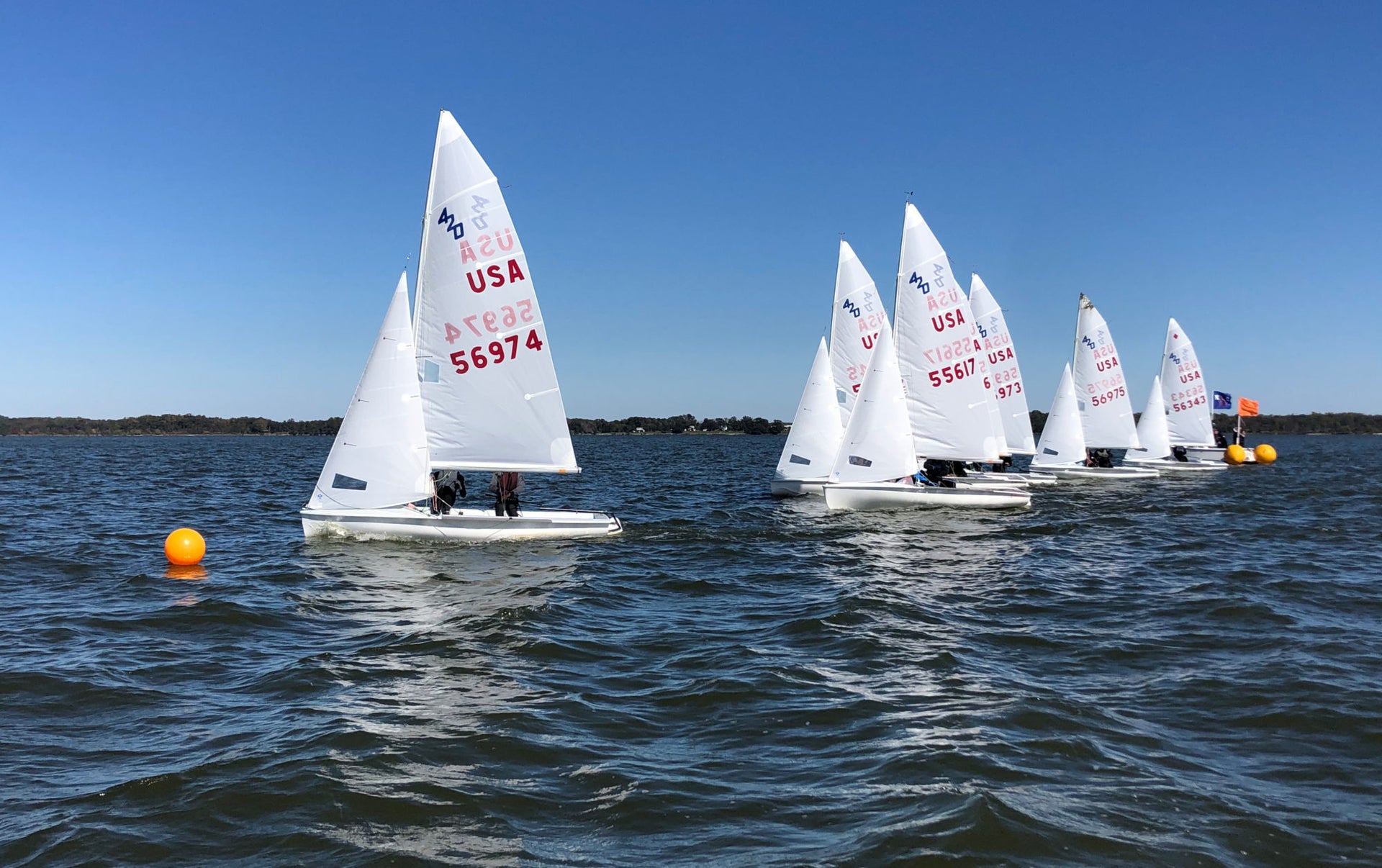
I-420 MID-ATLANTIC CHAMPIONSHIP
NORTH SAILS PODIUM SWEEP AT THE INAUGURAL I-420 MID-ATLANTICS
Congratulations Tommy Sitzmann & Luke Woodworth
The very first International-420 Mid-Atlantic Championship was held on 17-18 October at a new, community sailing venue called The Chesapeake Experience which lies E/NE of Baltimore on the Gunpowder River; a fantastic sailing spot!
Day One, Saturday 17th October – Constant Gear Shifting
The fleet had to wait a bit, but the forecasted northerly came in around 11:30, and four races were run in very light conditions as well as full trapeze sailing. The key to success was constant gear shifting. Unlike an ocean venue, where many i420 regattas are sailed, this inland location threw constant wind shifts and breeze-strength changes at the sailors. Teams that quickly shifted their sail and weight trim were faster as this responsiveness allowed them to link puffs and stay in the phase for longer.
Day Two, Sunday 18th October – Patience, Patience
The Race Committee actively sought wind, moving the racecourse from one part of the river to another to allow two more races to be completed. These races tested the patience of every team, and the young duo of Freddie Parkin and Thomas Whidden (name sound familiar?), outperformed the fleet winning both races. This moved them up to third overall in the final results. Great fun was had by all, and an i420 training fleet is now born at this venue!
Congratulations to Tommy Sitzmann and Luke Woodworth for winning the very first i420 Mid-Atlantic Championship, and Cordelia Burn and Sarah Moeder for their close second-place finish. Boats powered by North Sails dominated this event, finishing 1,2,3,4,5. Most teams used the M-9 mainsail and the J-12 jib, and there were both S-1 and S-5 spinnakers doing very well downwind.
Keen to know more? Contact North Sails expert Tom Sitzmann for a full discussion and we look forward to seeing you next year!
READ MORE
READ MORE
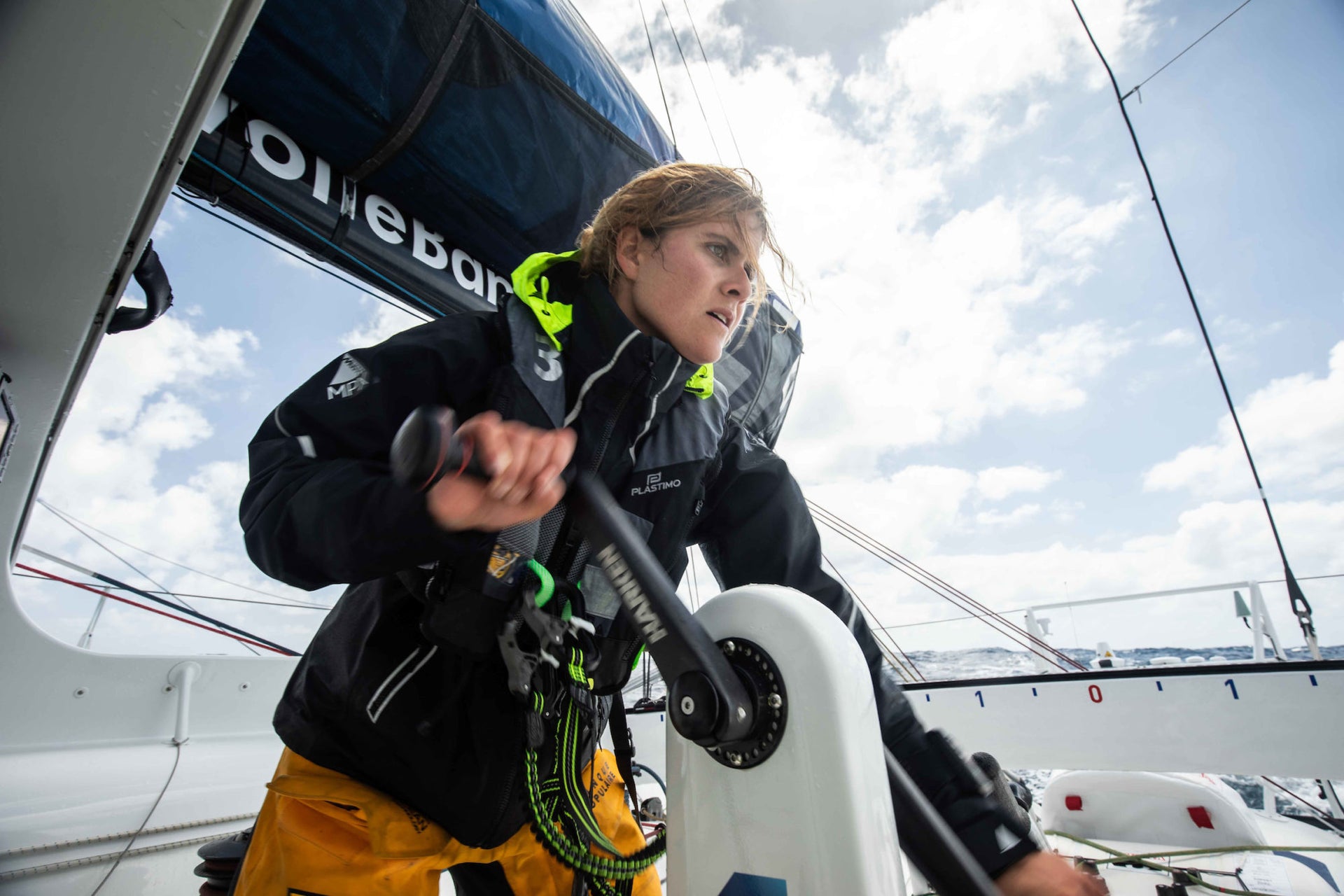
VENDÉE GLOBE 2020 VIDEO SERIES: EPISODE 5
THE WOMEN OF THE VENDÉE GLOBE
Vendée Globe 2020 – Episode 5
A record of six women are included on the 33 skipper roster for the Vendée Globe 2020. This is historic, considering only seven women have participated, and six have ever completed the race since its inception in 1989. This trend is a reflection of what we’re seeing elsewhere in sailing, as more women take on leadership positions and compete at the highest level of the sport.
The IMOCA is a big boat with big gear, and female sailors bring a unique approach to solo sailing. Our fifth episode of the Vendée Globe video series features their story. Loïck Peyron is joined by Clarisse Crémer and Isabelle Joschke to discuss how these six women will approach this great adventure around the world.
READ MORE
READ MORE

VENDÉE GLOBE 2020 VIDEO SERIES: EPISODE 4
THE SOLO EXPERIENCE
On Your Own but Not Alone
Singlehanded ocean racing is demanding and not for the faint of heart. It is a profession that requires a certain state of mind and a great ability to adapt. “It may not sound like much but being alone changes your state of mind,” says Clarisse Crémer, who is taking part in her first Vendée Globe. In addition to taking on all the roles on board and managing your mind, stress, sleep and the unexpected, you also have to accept that you are not always at 100%,” admits Kevin Escoffier, who is embarking on his first solo circumnavigation after many years as an ocean racing crew member. “If the wind is different from what is expected, you have to deal with it and choose sleep over perfection for a few hours.”
Today, ocean racing has become much more competitive than it was in the early days of the regattas. Modern boats are equipped with an impressive technological arsenal that almost forces skippers to hide inside their boat and think about their strategy all the time.
In this fourth episode, Loïck Peyron looks back at the history of sailors venturing onto the sea. This week’s special guests include Escoffier, Jean Le Cam, and Vendée Globe rookie Clarisse Crémer, who will soon be departing for the solo, non-stop, and without assistance competitive journey around the world.
READ MORE
READ MORE
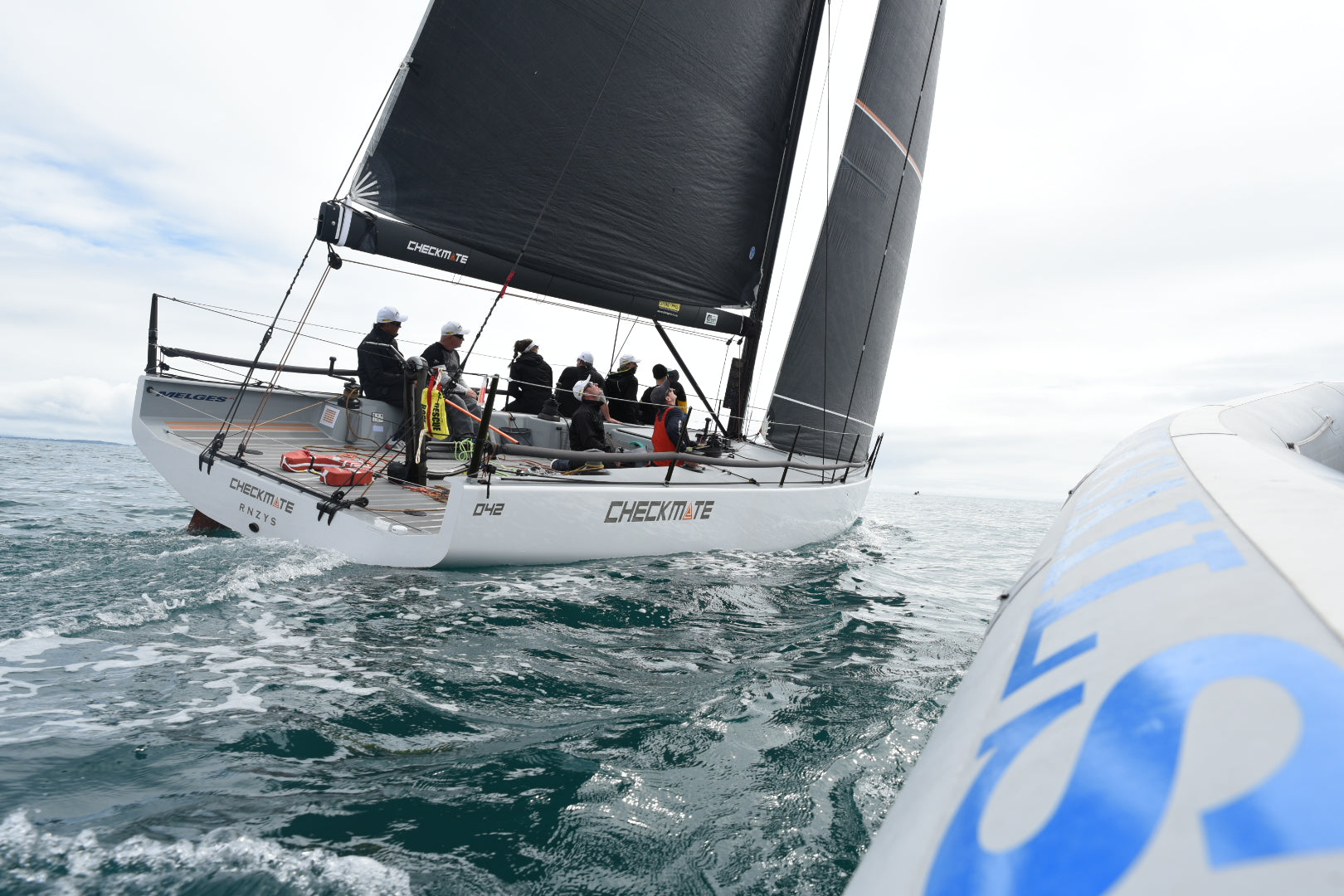
PIC COASTAL CLASSIC
2020 PIC COASTAL CLASSIC
A Race To Remember
Just after the start, the fleet heads out of Davonport. 📸 Lissa Photography
The 119 mile PIC Coastal Classic is an event many New Zealanders look forward to each year. With a start off Devonport Wharf and a finish at Russell Wharf, the course includes several memorable landmarks. With the typical strong southwesterly breeze, boats expect to finish around dusk. But this year, as dusk approached, not one team was anywhere close to the finish line, and the wind continued to decrease. Ocean Race 65 NZ Ocean Racing, the line honours winners, didn’t cross the finish line until early the next morning. Of the 170 teams that started, only 20 eventually made it to the finish line. Most dropped out at Cape Brett, knowing that the usual 20 mile final sprint up the coast—avoiding rocks, islands, and competition—was not to be this year.
North Sails expert Bianca Cook was onboard NZ Ocean Racing. “The PIC Coastal Classic was the first race for the boat since the end of the 2017/18 Volvo Ocean Race, and the first race for New Zealand Ocean Racing,” she said after the race. “Not quite the conditions everyone gets excited about, but we were extremely happy with the crew’s attitude. Our masthead code zero ended up being the sail for the race with a brief change to the J0 before Sail Rock, when the breeze picked up to 14 knots. We chose to sail outside Cape Brett, and was a park up… I had flashbacks to the doldrums, but the team kept patient and the breeze picked up enough to push us around the Brett. We managed to finish at 03:49am, the first monohull to win since 2009. We are extremely happy with the results: First boat to finish, first on handicap, and claiming the North Sails Trophy for First overall on PHRF Handicap.”
Prepping for the code zero onboard Bianca Cook’s NZ Ocean Racing 📸 Georgia Schofield
North Sails expert Andrew Wills was onboard the Melges 40 Checkmate. “This year’s Coastal Classic was unlike any other over the last 15 years. The traditional strong southwesterly breeze that would push you up the coast was replaced with a light northerly, which made for a long, slow upwind. The start of the race had a lot of tactical decisions and opportunity. As the day wore on, it was more of a long starboard tack. At times we were slightly cracked sheets and making good speed towards the finish line in Russell. But as night fell, the breeze died to pretty much nothing. The boats out further to sea seemed to do better, but still had to make the tricky transition into the bay towards the finish.”
“It was the first Coastal Classic for Melges 40s in New Zealand,” Wills explains. “I was lucky enough to sail as tactician for the RNZYS commodore, Aaron Young, and crew morale remained high despite the lack of wind. I was stoked to have been one of the few finishers in a real test of perseverance. Next year I am hoping for the traditional southwest blast up the coast!”
📸 Lissa Photography
North Sails expert and designer Magnus Doole was onboard the Ker 40 Icebreaker. “We knew it was going to be a challenging day of gear changes with the opportunity to define the race once the sun began to set behind Whangarei Heads.” Despite overtaking and extending their sistership, Icebreaker stopped in the “parking lot at Cape Brett” early Saturday morning. “We made the difficult decision to retire given the forecast and non-sailing commitments for some of the crew; one consolation was to be the first boat in our division to get to dry land! Nevertheless, a fantastic race with a great group of people and plenty of stories to tell afterwards.”
North expert Richard Bicknell sailed on V5, an old TP52 with a canting keel, which also got stuck at Cape Brett and retired. “We had a great start and were really happy with the way we had the boat going on only our second sail. We’re looking forward to our next race.”
📸 Lissa Photography
On Cation, a Roger Hill 18.5, North expert Matt Steven was thankful for his talented crew. Cation finished second in the multihull division. Matt commented, “We were lucky to have some of NZ’s top sailing talent including Murray Jones on tactics, and Owen Rutter who did an excellent job at the helm. We couldn’t have started the race much worse after a small 8.5 catamaran pinched us off at the boat-end, forcing us into a full circle and starting three minutes late! However, with our masthead J0, we powered back into the pack of other 55 to 65ft performance multihulls. Thanks to our self appointed chefs on board, Roger Hill and Simon Gundry, we were well fed going into the night with a full cooked meal served with silverware.
As Cation went into the night, their large tacking angles helped them establish decent speed. “There was more breeze offshore,” said Matt, “so we kept heading out to eventually overtake the whole fleet coming into Cape Brett, except for the Bianca and NZ Ocean Racing. As the Sun started to rise, we sailed into Russell with a jubilant crew– happy we made it. This was by far the longest Coastal Classic I have done, but also the best result!”
Congratulations to all competitors who finished the race, especially to NZ Ocean Racing for an outstanding debut! For more info about their sail choices, contact your local North Sails loft.
Contact Auckland Contact Bay of Islands
📸 Georgia Schofield
📸 Lissa Photography
📸 Lissa Photography
📸 Lissa Photography
📸 Georgia Schofield
📸 Lissa Photography
📸 Lissa Photography
READ MORE
READ MORE

#NSVICTORYLIST: ROLEX MIDDLE SEA RACE
FAMILY FIRST THE AT 41ST MIDDLE SEA RACE
North Sails Powers a Clean Sweep of 2020 Race Scoreboard
📸 Rolex / Kurt Arrigo
In the year of Covid, the Rolex Middle Sea Race was a much-anticipated event before many participants tucked their boats away for the season. At the end of the 606 miles, Elusive 2, a Beneteau First 45, claimed overall honors, corrected time for the 2020 race. Their victory is memorable because this is the second consecutive win for the team, co-skippered by Maltese siblings Maya, Christoph, and Aaron Podesta. Elusive 2’s back-to-back success is the first since Nita IV, who won three races between 1978 and 1980.
“It is a huge achievement to have won this race in back to back years,” remarked Christoph. “It is really hard to win the race at the best of times, so winning it twice in a row is massive and something we are all going to be very proud of for a long time to come. We are sailing with our family boat with a family team, and I am struggling to find words to describe the feeling!”
Rolex / Kurt Arrigo
Multi70 Maserati and VO70 I Love Poland took multi, and monohull line honors, respectively. Maserati reached the finished line under the stars in 2 days, 08 hours, 31 minutes, 31 seconds, 15 minutes ahead of their closest competition. Meanwhile, I Love Poland took home the RLR Line Honours Trophy after a match race duel to the finish line with Zbigniew Gutkowski’s E1, formerly Abu Dhabi Ocean Racing, which won the Volvo Ocean Race 2014-15.
“We are very happy,” commented I Love Poland’s skipper Grzegorz Baranowski. “It was tough from the beginning, with a lot of tacks at the end. Our boat is a special government program for young sailors to learn offshore sailing. For them, this has been a perfect experience. They now know you have to fight to the end. They will remember this forever.”
North Sails celebrates the numerous victories picked up by our clients across the six classes. And a special round of applause for the Rolex Middle Sea Race organizers who, despite challenging circumstances, made it possible for 50 teams representing 14 countries to go sailing.
📸 Rolex / Carlo Borlenghi
📸 Rolex / Carlo Borlenghi
READ MORE
READ MORE
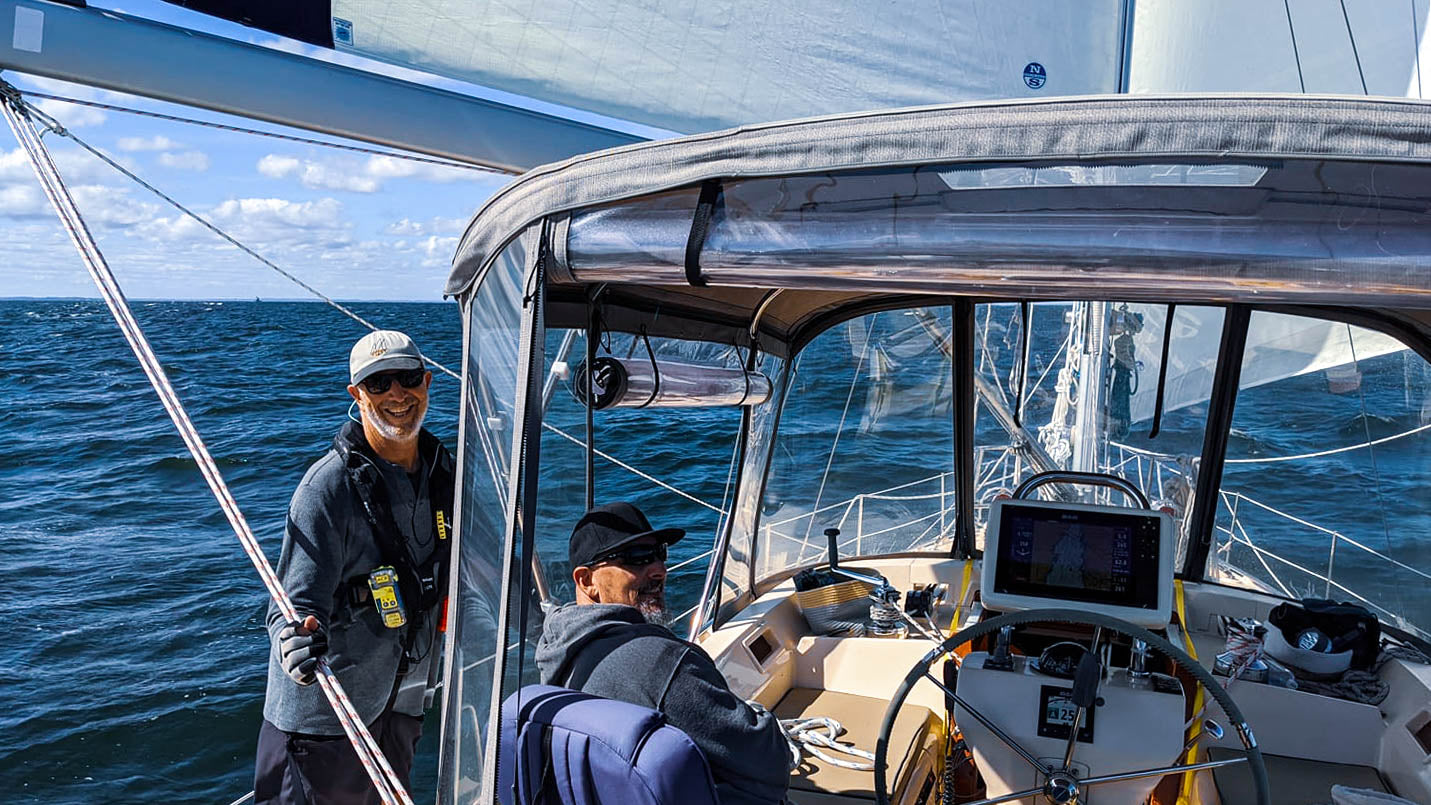
NEW SAILS FOR ISLAND PACKET AD ASTRA
NEW SAILS FOR ISLAND PACKET AD ASTRA
Tom Fortner Embraces the Cruising Lifestyle With 3Di OCEAN 330
Tom Fortner lived most of his life in Prescott, Arizona, but set his sights on moving to Florida to buy a boat and begin his next life adventure. He took ownership of the Island Packet 45, Ad Astra, in January and has been sailing as much as possible since then. “I’ve always wanted to get a boat and learn how to sail so I can cruise around,” said Tom. Now he’s cruising up and down the United States’ east coast.
Though he has been sailing for ten years, Tom still considered himself a novice. That all changed when he acquired Ad Astra; he’s been sailing more than ever, almost non-stop. “I got my bareboat and ASA certifications to be better prepared. I don’t race, so I have also never learned how to trim sails properly. The times I did spend sailing, I likely wasn’t trimming properly and never had my telltales flying right.
Ad Astra is currently outfitted with a new inventory of a 3Di OCEAN mainsail and genoa. Tom worked with Ft Lauderdale based cruising expert Bob Meagher. “When I got my new sails and trimmed them in, I was amazed by how perfectly they looked,” he remarked. “The telltales were flowing in the right direction naturally on both sides, and the sails noticeably had a great shape. Once North Sails delivered my mainsail in St. Augustine, FL, I was ready to head North.”
Ad Astra’s Journey North: Florida to Maine, Summer 2020
Tom began his east coast adventure in Dayton Beach, FL, headed North towards Charleston, SC. There, he met with sail expert John Bowden to have his new 3Di OCEAN genoa installed. “It was perfect,” Tom said. “The North team in Charleston also helped me with my gennaker sail bag that needed some new stitching.” From there, Ad Astra’s trip up North had officially begun.
The next stop was Beaufort, NC, then on to round Cape Hatteras. “Fortunately, we had decent weather to Norfolk, VA, and it was smooth sailing up and around the cape,” Tom reported. After a few days, Tom departed and headed up the coast, making little stops and checking off locations on his bucket list. Passing by Hampton, VA, Ad Astra took a pit stop in Annapolis, MD, for a few days before continuing North. Tom stopped in Newport and Block Island in RI, and Cuttyhunk, MA, eventually sailing to Maine.
A ripped gennaker on the way to Maine required a call to the North Sails loft in South Freeport. “I had ripped my gennaker on the spreader, which I now call the ‘shredder.’ Sail expert Eric Baldwin and team couldn’t have done a better job making sure I got back on track. They quickly fixed my sail and returned to me on the boat within a couple of hours.”
“I got live Maine lobsters straight from the boat for the price of a hot dog. It doesn’t get better!”
In Maine, Tom took in all the sights, cruising around Pulpit Harbor and Seal Bay. He spotted a lobster fisherman and snagged a few bugs for dinner, where he and some friends cooked on the beach that night. “For my first trip to Maine, it was spectacular,” he said. “The fact that I sailed from Florida made it even more satisfying!”
Reaching his Northern limits, Tom and Ad Astra turned south, first stopping in Boston, MA. Tom picked up his son-in-law for the trip down to Long Island, NY from Massachusetts. Sailing into New York harbor for the first time under the shadow of the Statue of Liberty is a moment Tom won’t soon forget.
Tom in New York Harbor visiting Lady Liberty for the first time on a sailboat.
Working his way back south, he returned to Annapolis, MD to spend a couple of weeks before heading back to Florida.
What’s next on the bucket list? Tom commented, “I am thinking about venturing to the Bahamas at some point. Maybe attempting a circumnavigation. I’m getting to an age where I’ll miss my opportunity if I don’t do it now. A big sailing trip is something I’ve wanted to experience for quite some time. I am so glad I’ve taken the leap to check off an experience I’ve wanted to do my whole life.”
East Coast Support + Service with North Sails
“What I enjoyed most was being able to work with the different lofts all along the east coast, no matter where I was. North Sails has a great network with easy access for a transient sailor.” This trip was his first time Tom had ever sailed offshore overnight for an extended amount of time. For someone new to cruising, Tom was impressed with the North Sails support; both close to home and during his trip. He commented, “It’s nice to know that I can travel around and get the same service and expertise no matter where I land.”
Why 3Di? “I chose North Sails 3Di because I knew they would last,” said Tom. “I can’t do this forever, but I am confident these sails will last the entire time I own this boat. It was a choice I made that I know I won’t regret.”
READ MORE
READ MORE
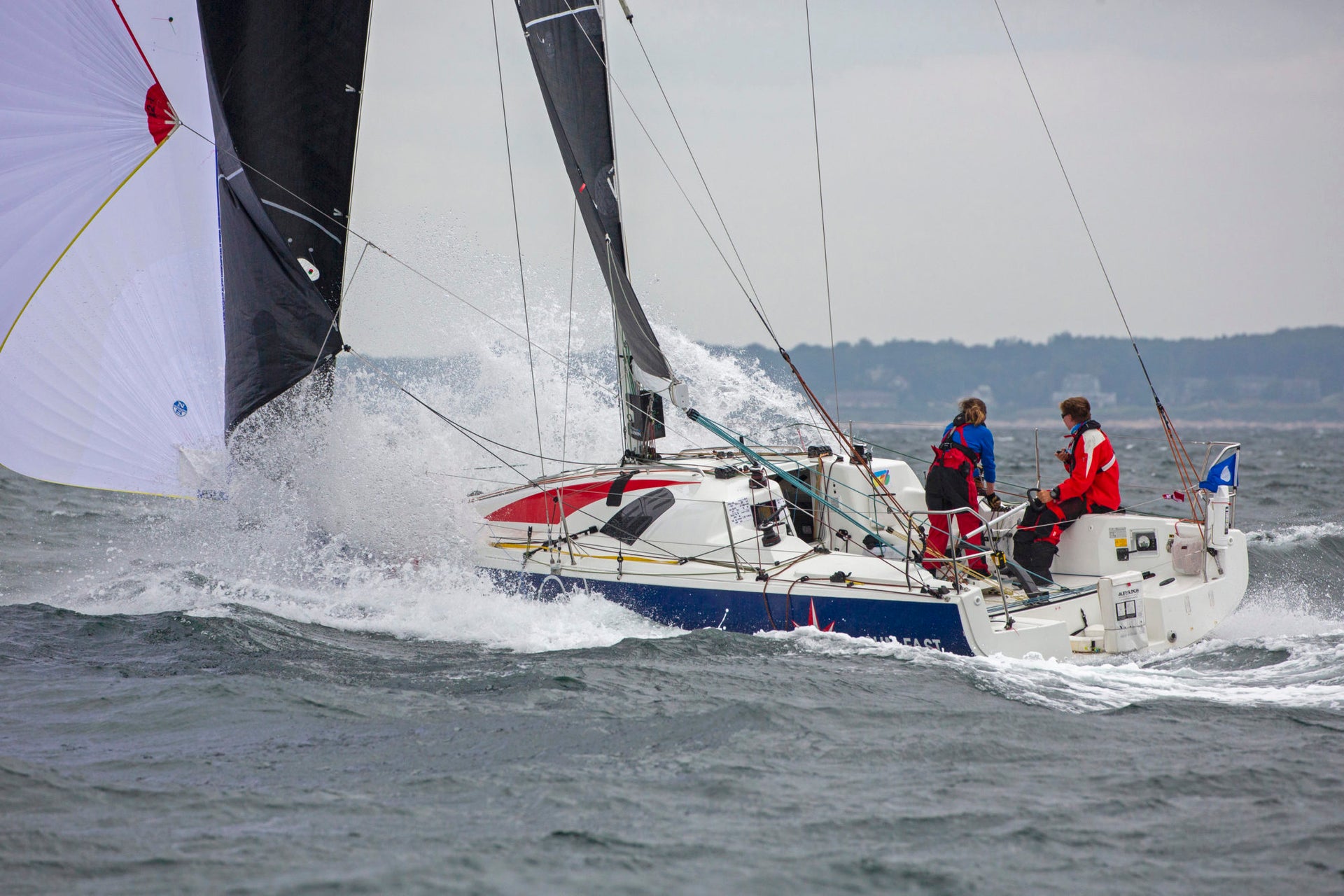
OFFSHOREDOUBLES.ORG LAUNCHES MEMBERSHIP DRIVE
JOIN THE COMMUNITY OF ENTHUSIASTS AT OFFSHOREDOUBLES.ORG
Calling All Sailors to Action in Advance of the World Sailing Annual Conference to Determine if the Offshore Mixed Doubles Event Will Continue to be Included in the Paris 2024 Olympic Games
The Offshore Doubles Sailing Association has launched its membership drive in advance of the World Sailing Annual Conference. A non-profit sailing association, Offshore Doubles is committed to strengthening the community of sailors, events, and boat classes who are in the fastest-growing sector of the sport.
In one week since launching the campaign, OFFSHORESHOREDOUBLES.ORG has signed up more than 600 members from 52 countries, with women sailors making up 16% of the base. The group hopes to reach a substantial membership list in efforts to keep the Olympic Offshore Mixed Doubles on the slate for Paris 2024.
There are more than 5,000 boats racing doublehanded under rating rules and many strong one design fleets around the world and the inclusion of doublehanded trophies in most major events around the world, it was time to bring the community closer together to accelerate learning and growth and help sailors get into this exciting discipline,” said Larry Rosenfeld, founding President of Offshore Doubles.
Ken Read, a world-renown, multi-discipline sailor and the President of North Sails is one of the many sailors who are actively participating in the doublehanded discipline. Read campaigned Alchemist, a Jeanneau Sunfast 3300 throughout 2020. He sailed in four events, two with Suzy Leech and two with brother Brad Read. The Alchemist team won on handicap in all four doublehanded races entered, including taking line honors in the New England Solo/Twin.
“My doublehanded experience kicked off in January 2020, not long before we knew that socially distanced, short-handed sailing would be so popular this summer,” commented Read. “Luckily, talented crew and world-class competition are never hard to find in Newport, Rhode Island. A summer of sailing Alchemist was the most fun I’ve had sailing in a long time, and doublehanded has been a way to re-energize and rediscover my love of the sport.”
The group is calling all sailors into action in advance of the World Sailing Annual Conference next week which will determine if the Offshore Mixed Doubles Event will continue to be included in the Paris 2024 Olympic Games. NOW is the time to show the global sailing community and the International Olympic Committee that Doublehanded sailing has broad global support. DOUBLEHANDED ENTHUSIASTS ARE INVITED TO JOIN TODAY (at no charge) at www.offshoredoubles.org
READ MORE
READ MORE

VENDÉE GLOBE 2020 VIDEO SERIES: EPISODE 3
THE SPIRIT OF ADVENTURE
Vendée Globe 2020 – Episode 3
In search of a challenge, a record, or an adrenaline rush, the sailors participating in the Vendée Globe are constantly testing their boundaries and pushing their equipment in an attempt to rack up a few miles, hours, days. From them, the open ocean beckons with the taste of adventure and a fascination for the unknown.
“What’s interesting is what you don’t know,” says 61-year old Jean Le Cam, who is taking part in the Vendée Globe for the fifth time. “You are constantly questioning yourself to avoid getting bored.”
More than a race, the Vendée Globe is the ultimate adventure. The skippers hunger to get out of their comfort zone and exceed their limits, and it is their story that fascinates the spectators. This race is one of the rare sporting events where completing the single-handed non-stop round the world race is seen as a remarkable accomplishment in and of itself.
Join our Vendée Globe 2020 narrator Loïck Peyron as he uncovers why the race, even for veterans like Le Cam, is a once in a lifetime adventure.
READ MORE
READ MORE

FINDING THE FIGARO FORMULA
FINDING THE FIGARO FORMULA
Setting the Pace for Irish Offshore Sailors
Kenneth Rumball has been sailing since he was a toddler with his parents, making a name for himself in dinghies and then adding a number of impressive offshore miles to his resume. With fewer opportunities in Ireland to make full-time career professional sailing, he went the academic route and studied accounting, only to be pulled back into the sailing industry. Rumball took on the Irish National Sailing School’s ownership and running, using his own experiences to inspire youth sailors in Ireland to pursue the sport and even invite them to race with him.
Rumball is a bundle of energy and enthusiasm, and a leader for Ireland in sailing, so it was no surprise that when the Olympics added a double-handed offshore event, he would take that challenge on too, teaming up with co-skipper Pamela Lee in the Figaro class, and enlisting the help of North Sails Expert Nigel Young and his loft team. Rumball and Lee learned some sailmaking skills with the North Sails team to prepare them for any surprises offshore better.
“We’ve got the standard Figaro 3 setup, a full mainsail, a big spinnaker, a small spinnaker, a Code Zero, and a J3,” Says Pam. “When we returned from France, we got the sails off the boat and took them to the North loft, and we got a full sail check and any repairs that needed to be done. North Sails Shane Hughes at the Wicklow loft talked us through everything he had done and showed us what to look for, what to be worried about, and prepped us with a sail repair kit that we hopefully will not have to use. Having everything checked over gives us the confidence to push the boat to maximum performance.”
Rumball describes pulling the sails out of the bag for the first time, “they fit, and they worked. With our training schedule, I didn’t want to buy sails and then go back and ask for things to be changed. I wanted sails that worked would be fast and long-lasting. Nigel Young was my first call to make that happen.”
Together, with the North Team in Ireland and France, RL Sailing was able to get their full 3Di set-up dialed in and tuned. “The product support has been just fantastic,” says Rumball.
With events canceled across the globe, including the double-handed worlds in Malta, Rumball used the Solitaire Du Figaro as the jumping-off point for his training schedule in the Figaro.
“We’ve been charging forward on the Figaro, so we looked to the Solitaire, and I decided to give it a go. The Solitaire is an incredibly tough race,” says Rumball. “We were not as planned as we could have been, but Pam was there shoreside to support me. It was a great training experience.”
The team has been based in France for most of the summer for the Solitaire and Spi Ouest, eager to train against the French teams that will be their competition in 2024. They’ve delivered the boat back to Ireland for the fall, where Pamela teamed up with Catherine Hunt for the ‘Round Ireland record, setting a benchmark for female sailors while getting more time in the Figaro.
“When they announced the Paris 2024 Olympics would have a mixed crew double-handed offshore event, many avenues in the sport opened up for female sailors to gain experience offshore because suddenly, people need offshore female training partners, and that’s how I started sailing with Kenny for Ireland,” says Pam.
These offshore experiences are an integral part of their training regime; double-handed sailing requires a different approach focused on endurance, managing multiple roles on the boat on your own, and having excellent self-discipline. Lee and Rumball are looking for every opportunity possible to test their offshore stamina, despite the pandemic’s challenges.
“The reason we also chose the Figaro circuit is because the French are the best short-handed offshore sailors in the world.” Attests Rumball, “If you wanted to compete in an event like Paris 2024, and represent your country, you’ve got to race against the best people in the world, and that is the French.”
The team is serious about their fitness and has been exploring different ways to train up. Encouraged by Lee, who is already a seasoned kiter, Rumball has taken up kiteboarding as a full-body cross-training workout. They also bike, practice yoga, lift, and run. They are also augmenting their freeze-dried meals with fresh foods pre-packaged to last for a few days at sea, although Rumball still loves porridge in the jet boil.
The pair plans their calendar for next year and hopes to compete in all the French Figaro events they possibly can, making a name for their country in the latest Olympic discipline.
READ MORE
READ MORE


